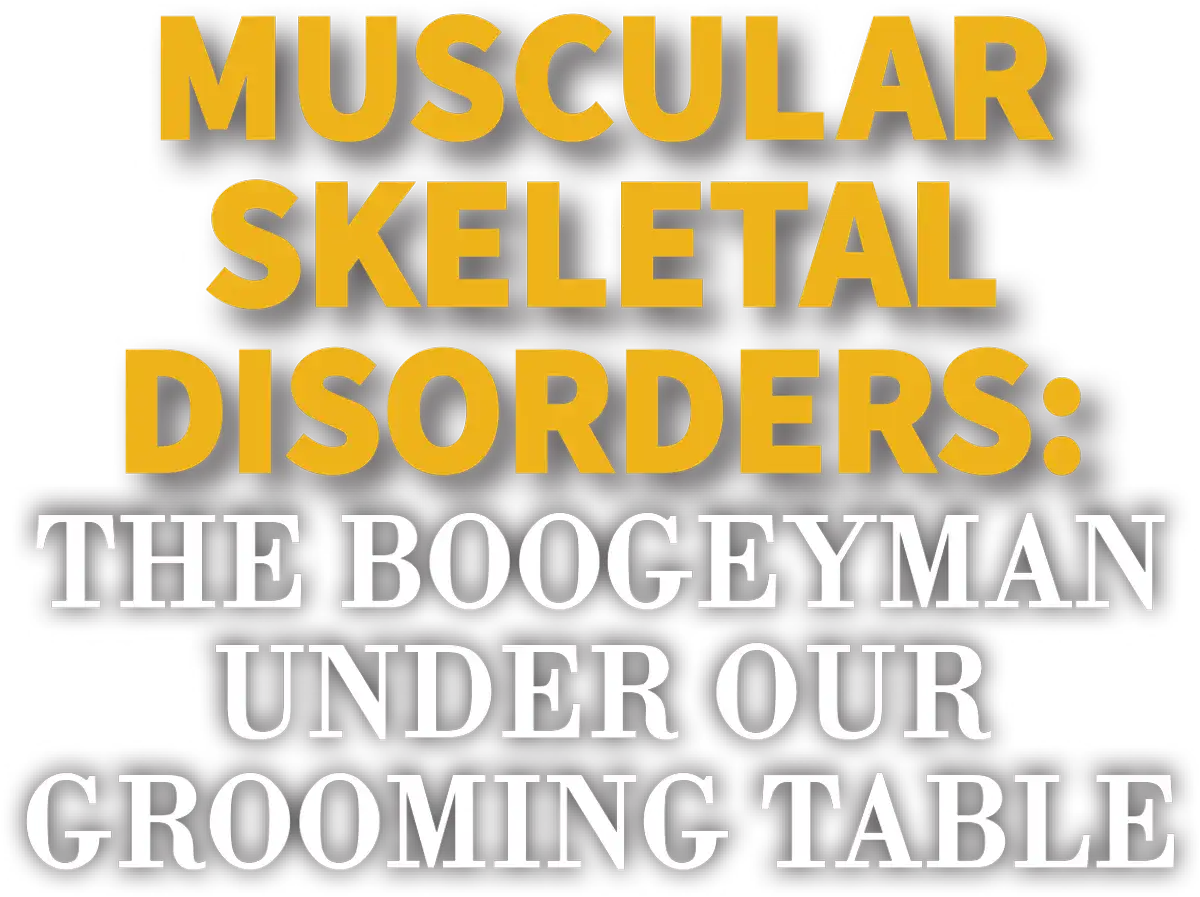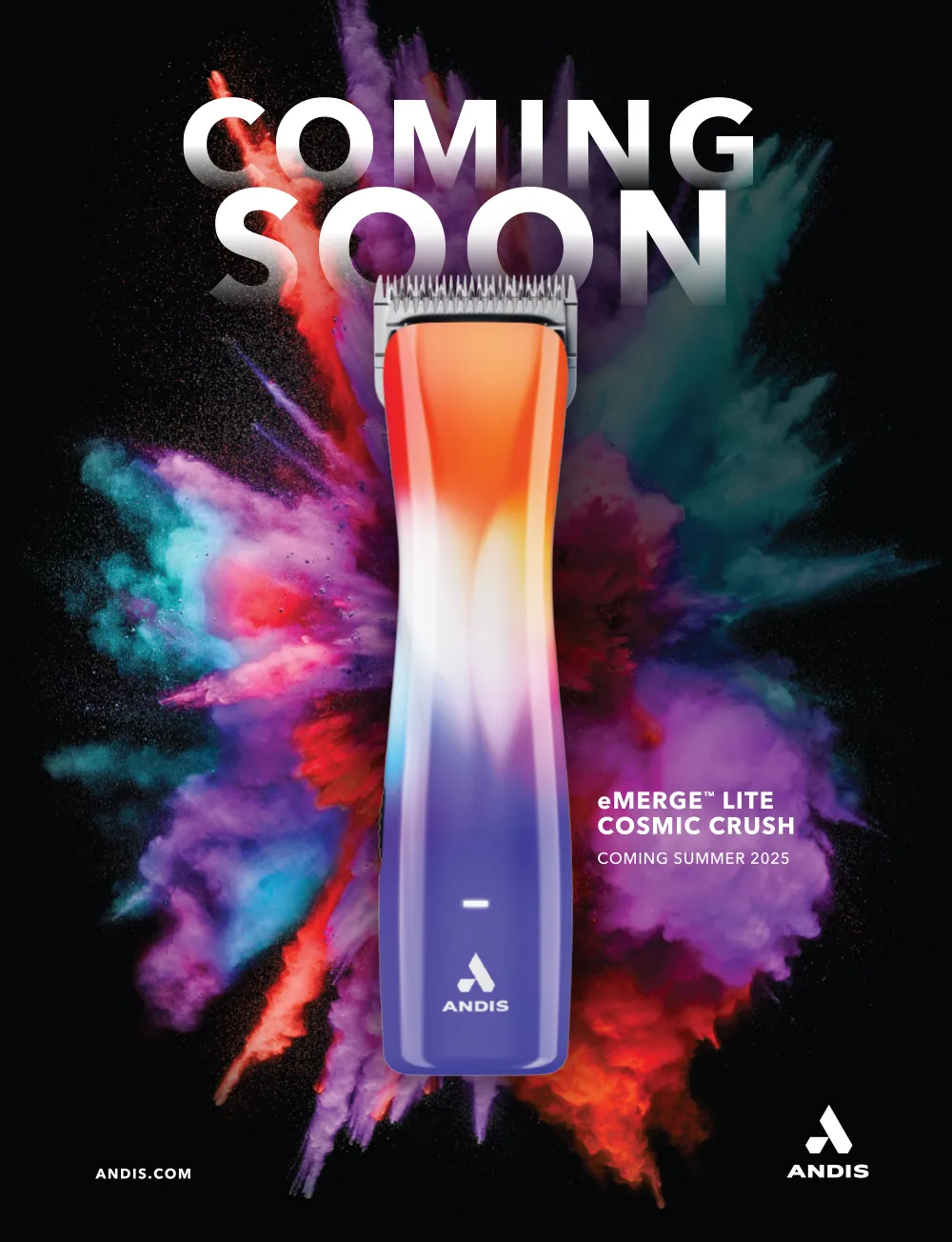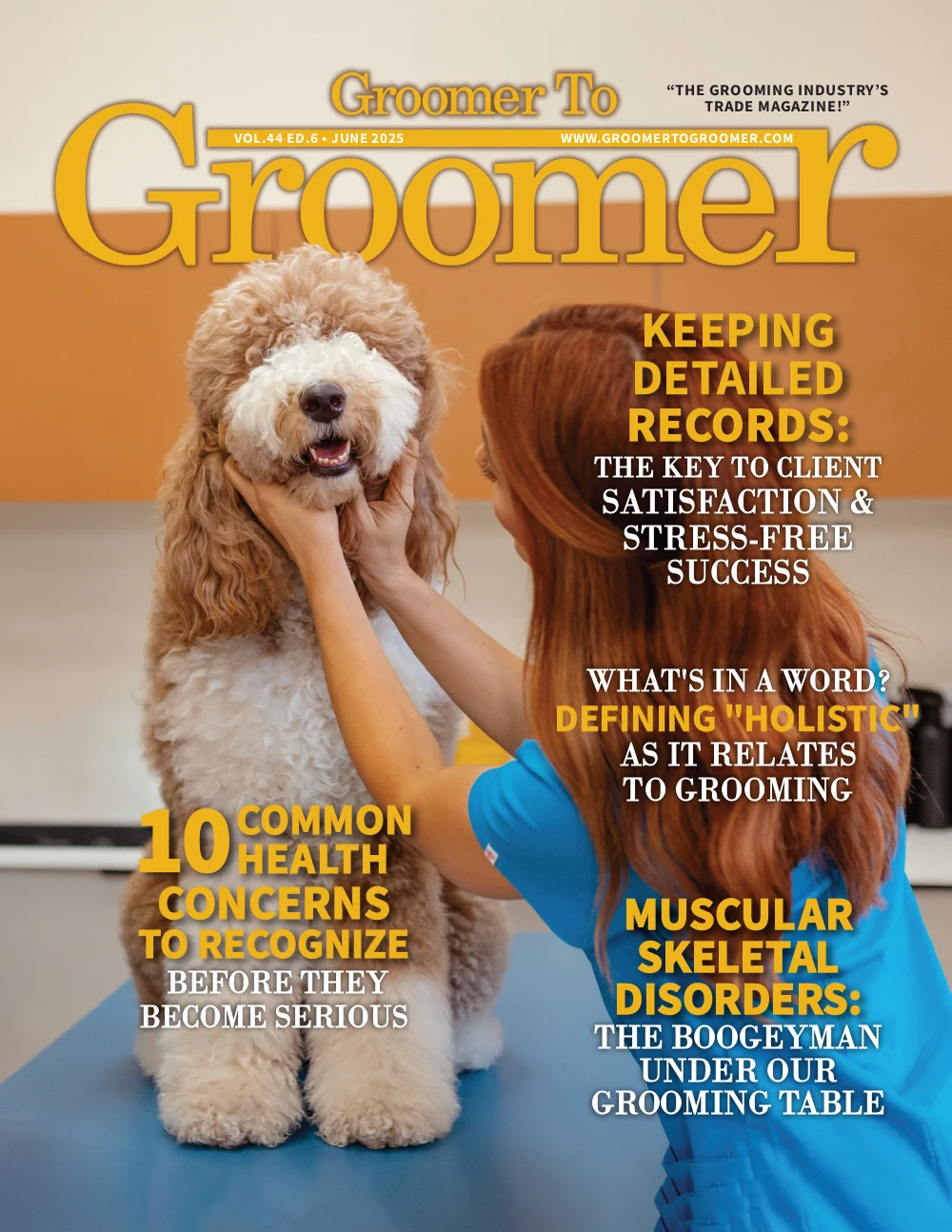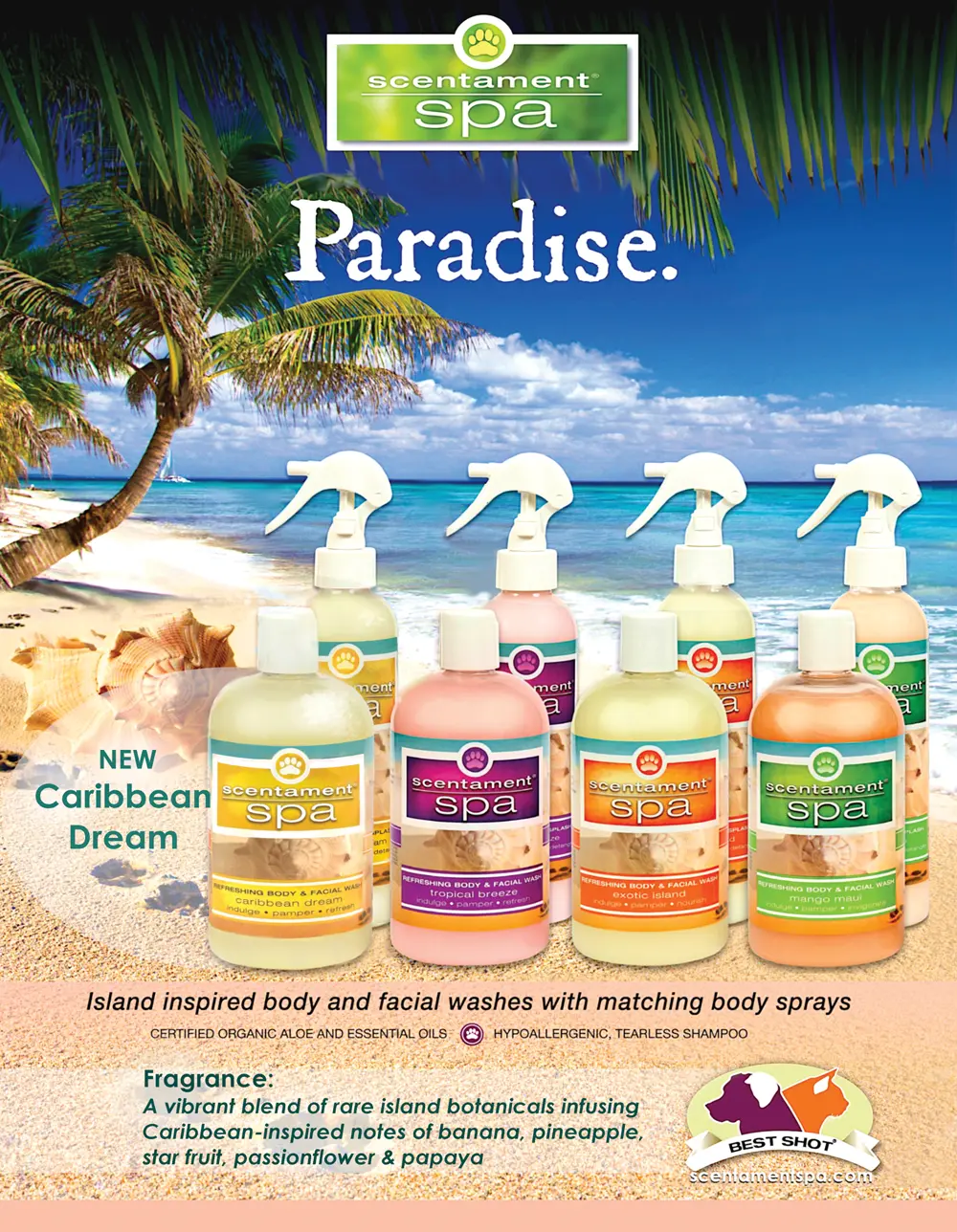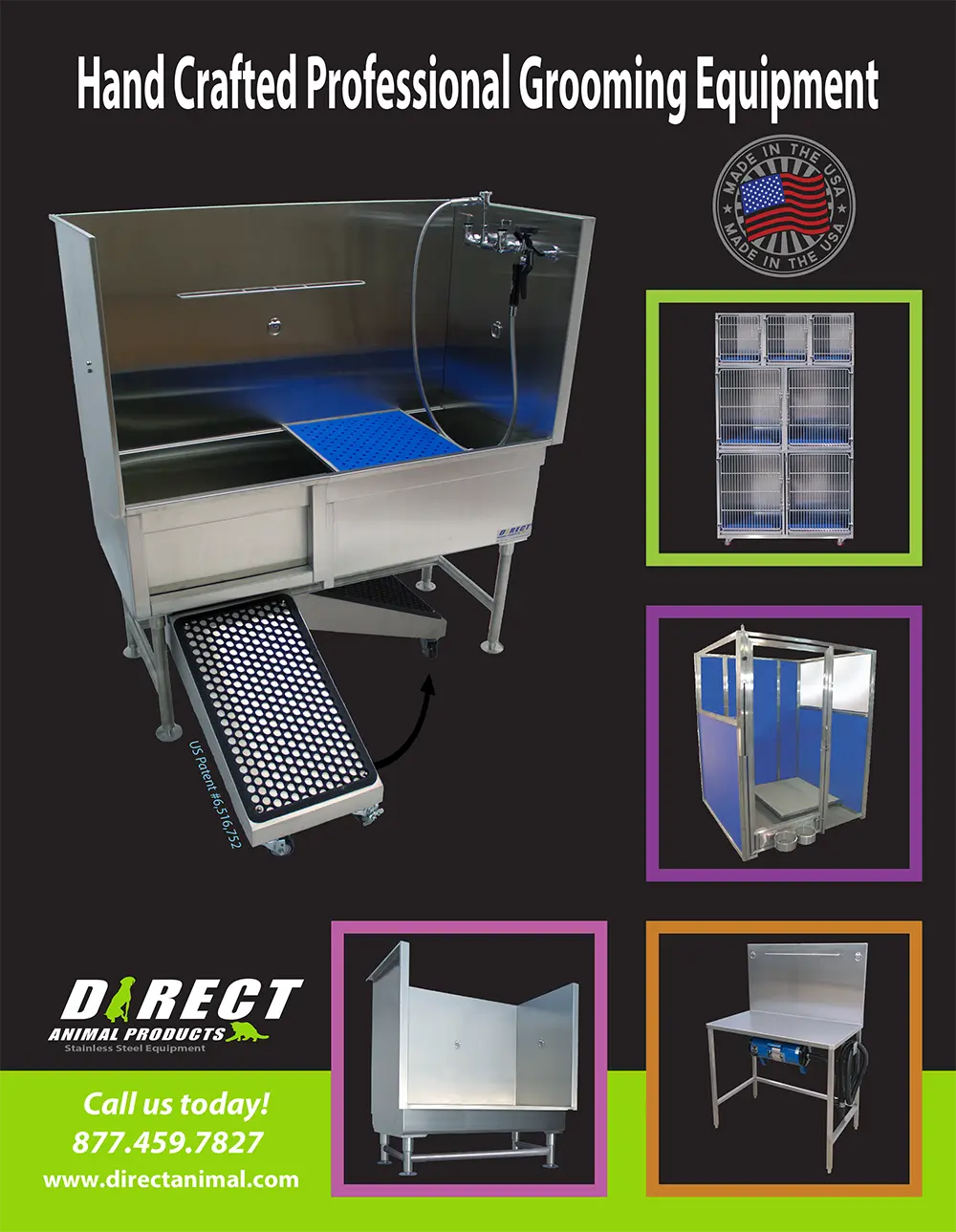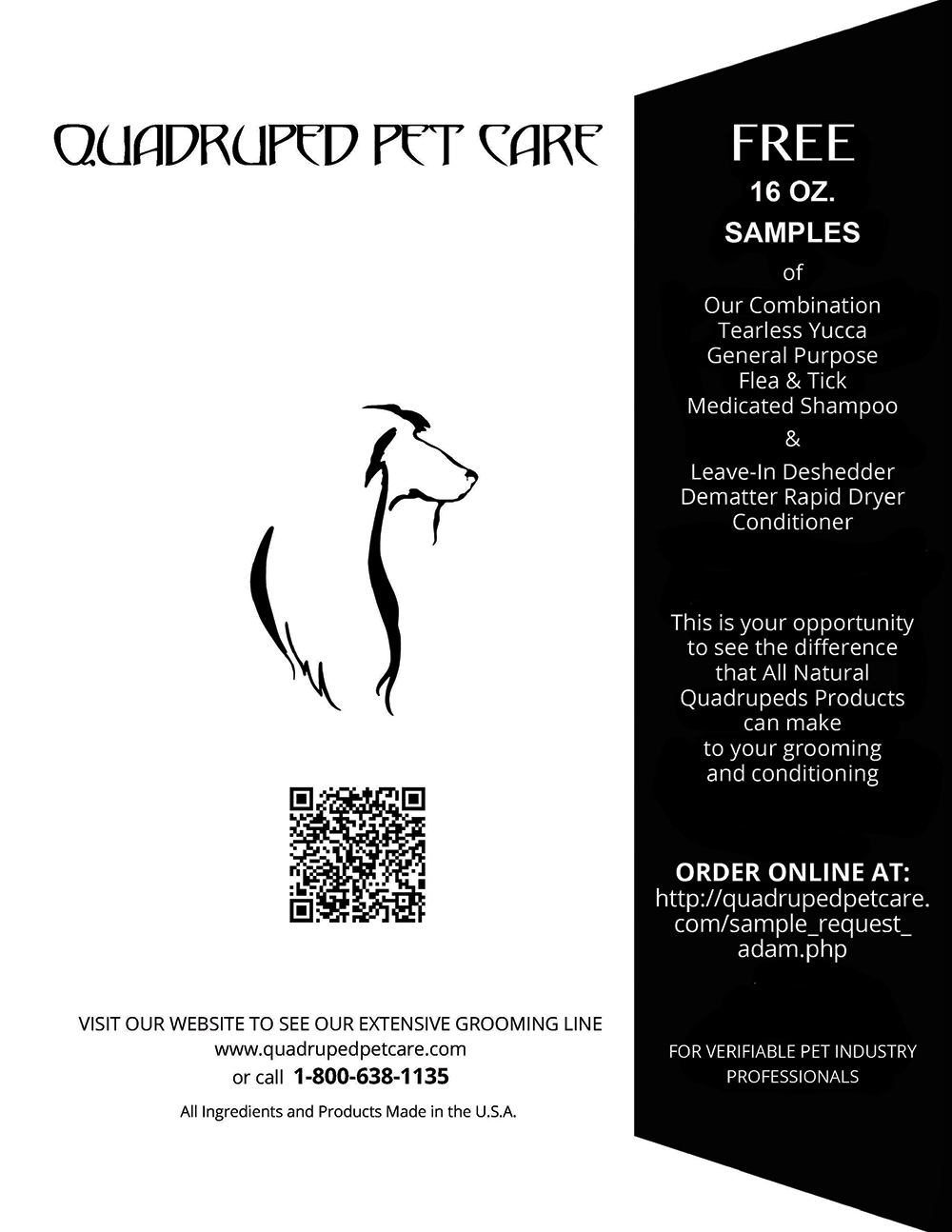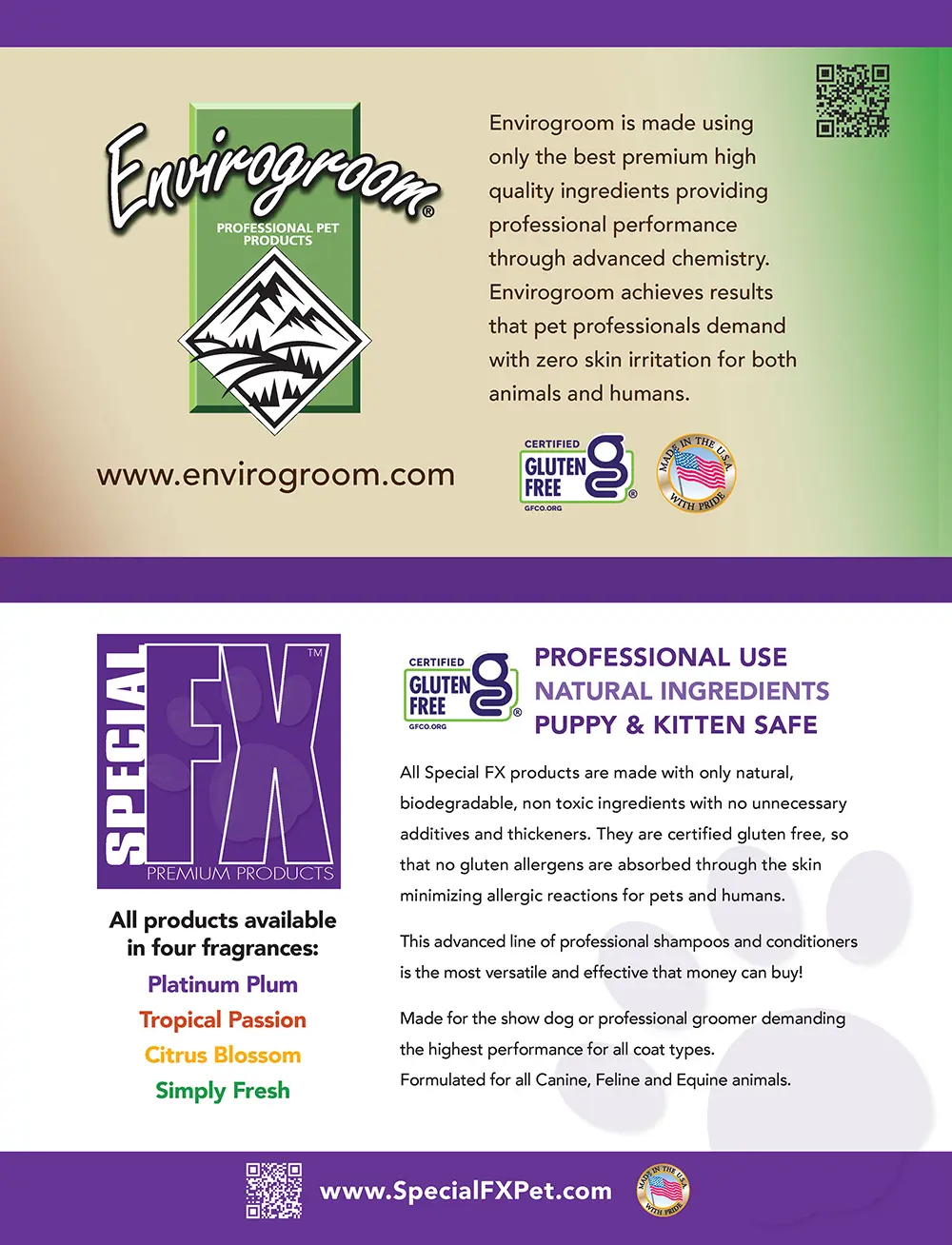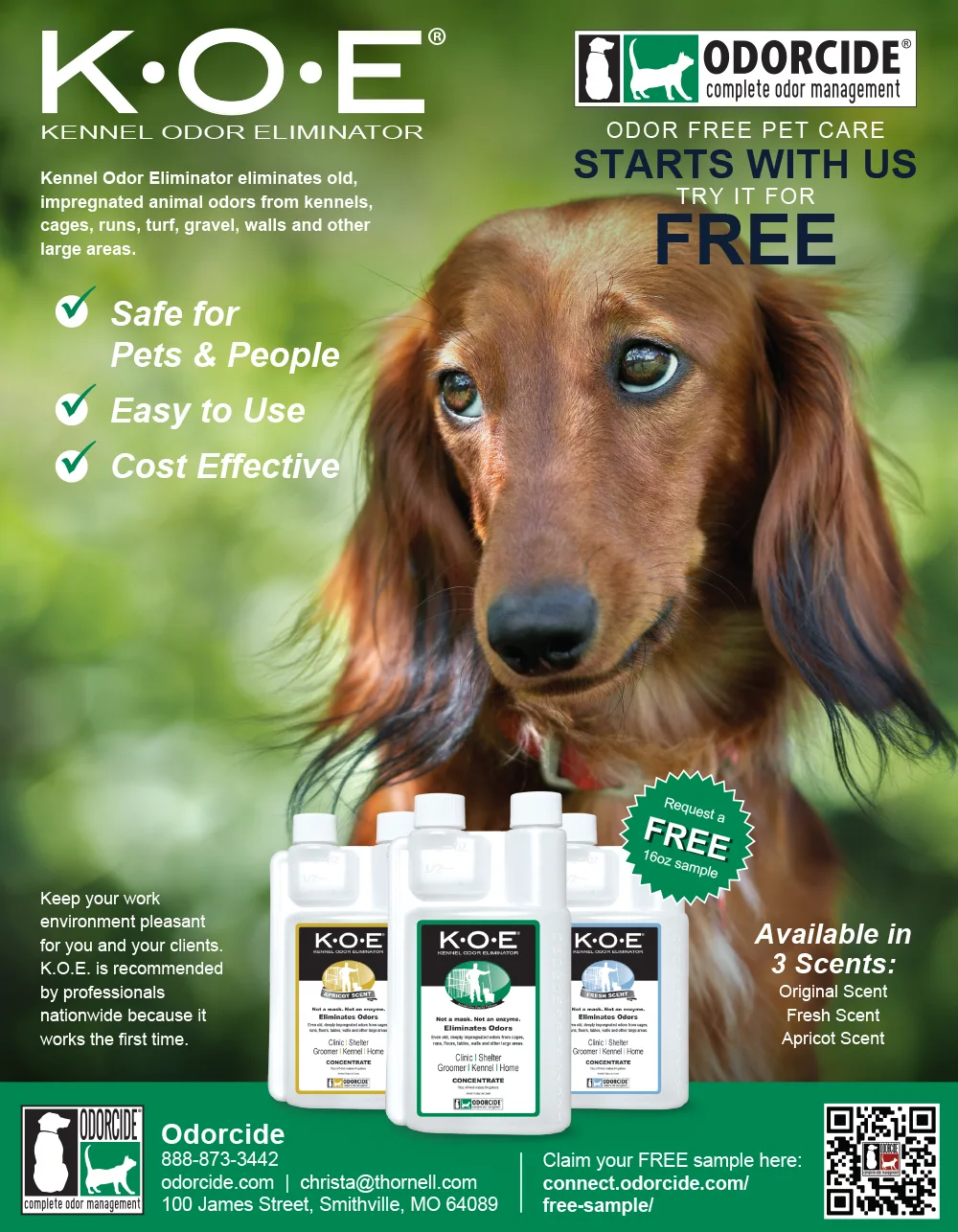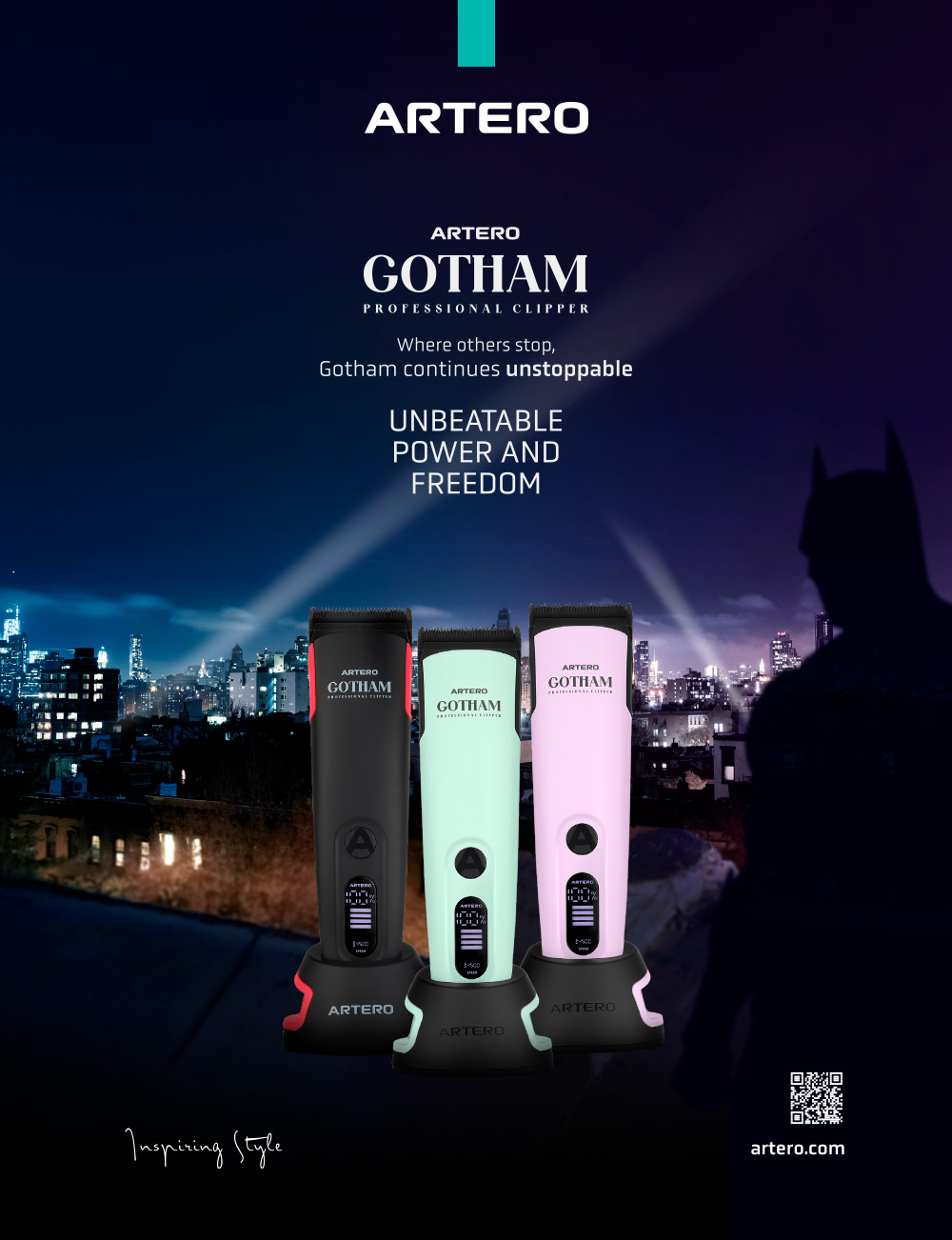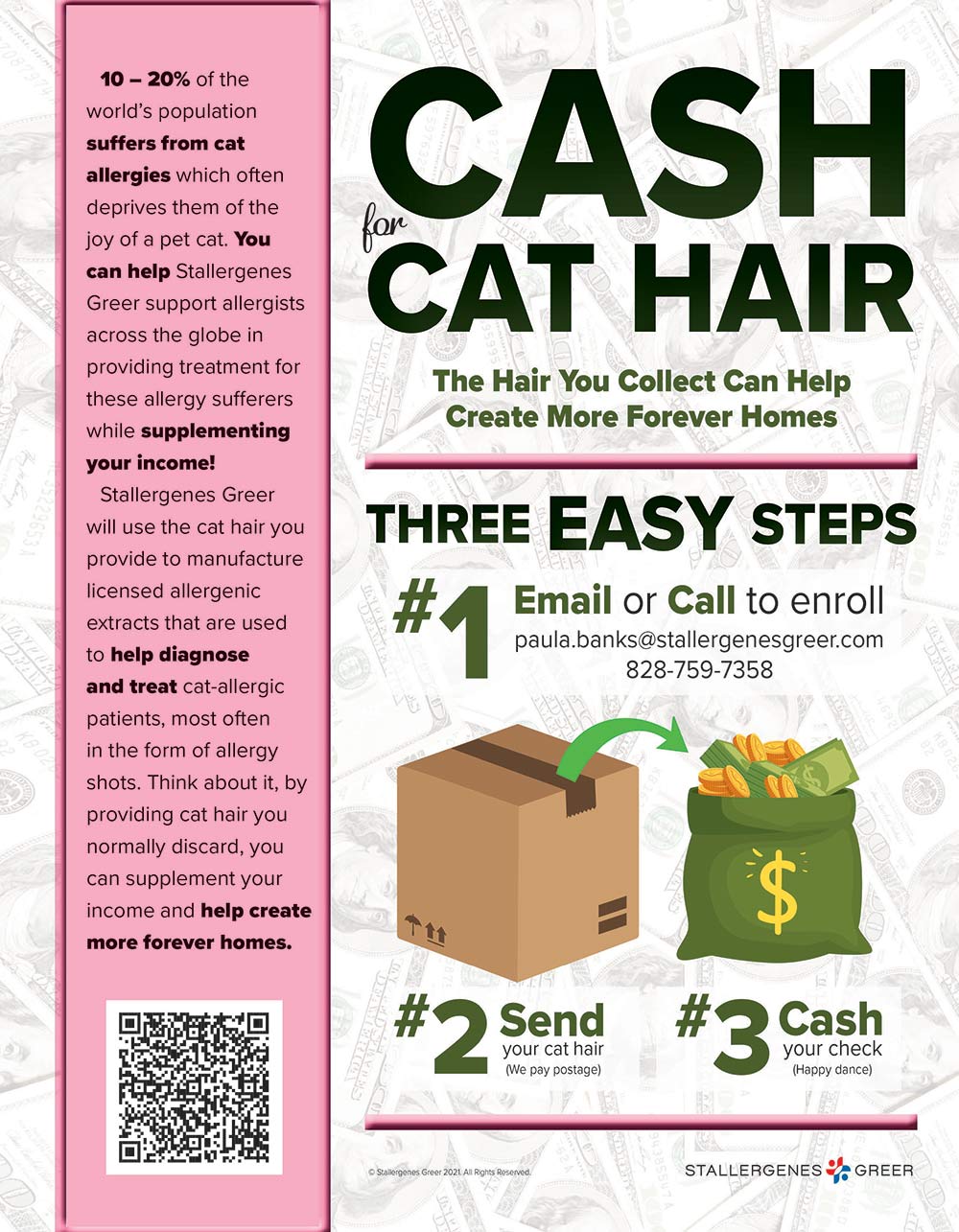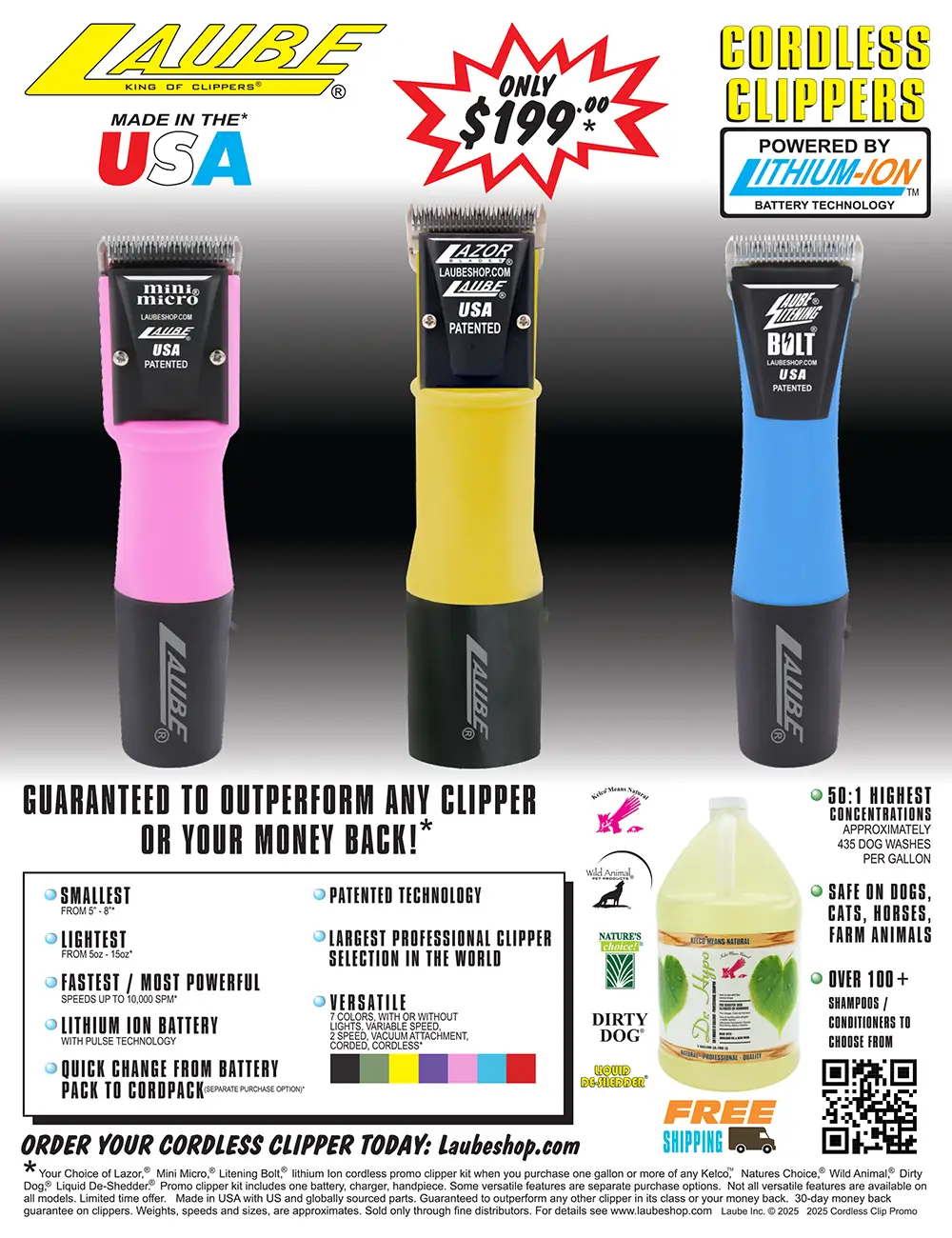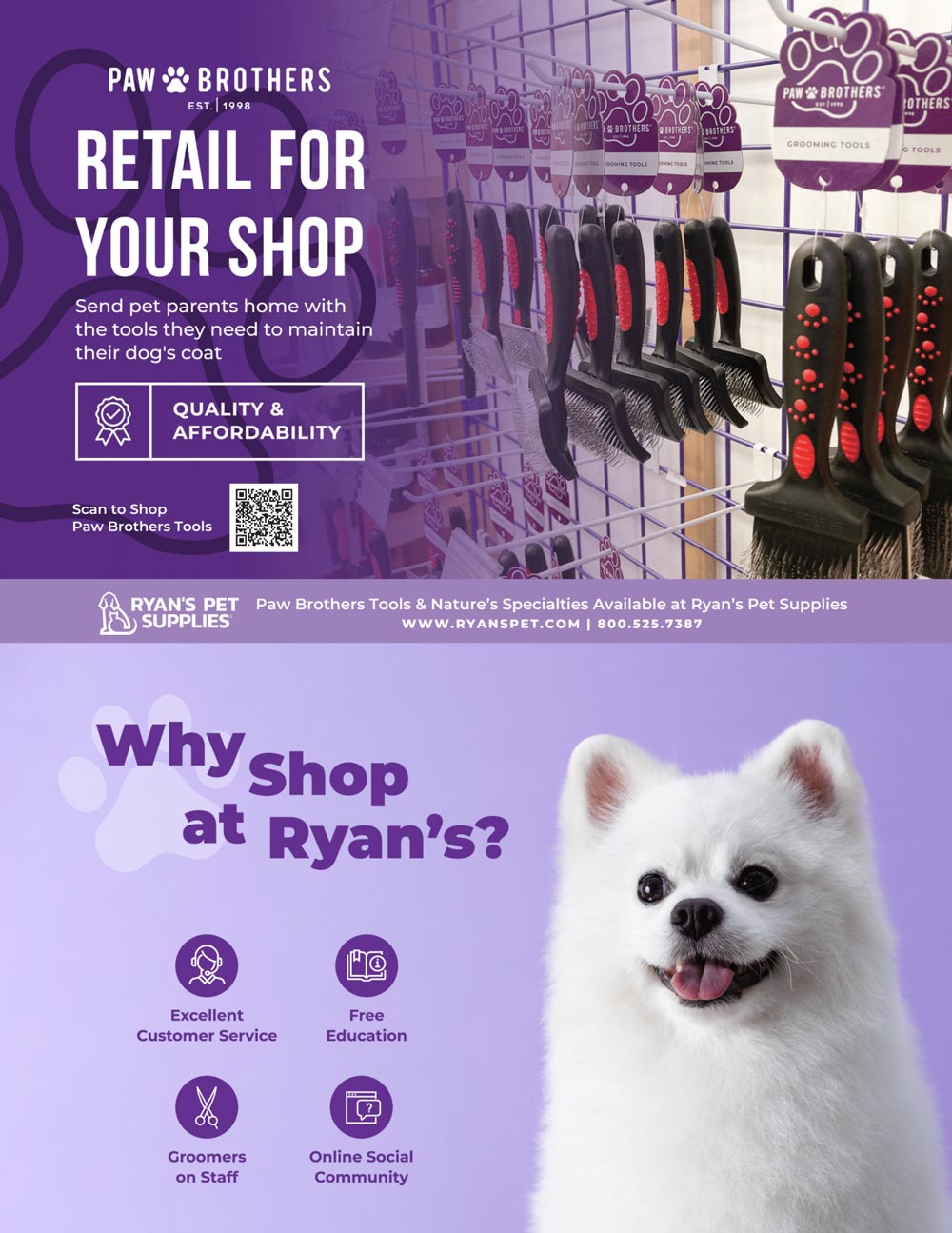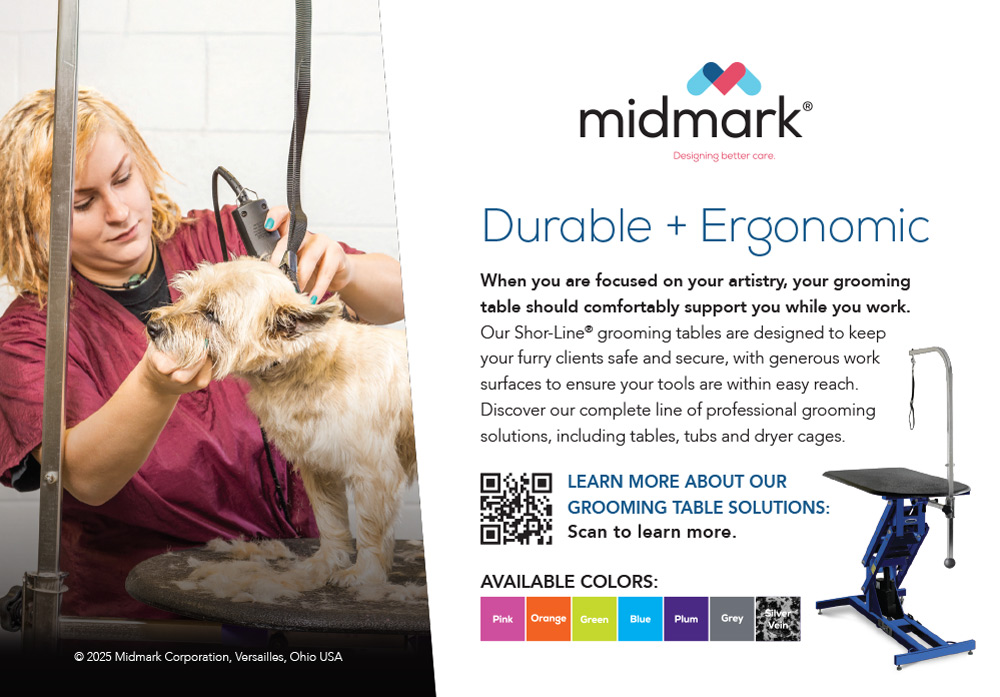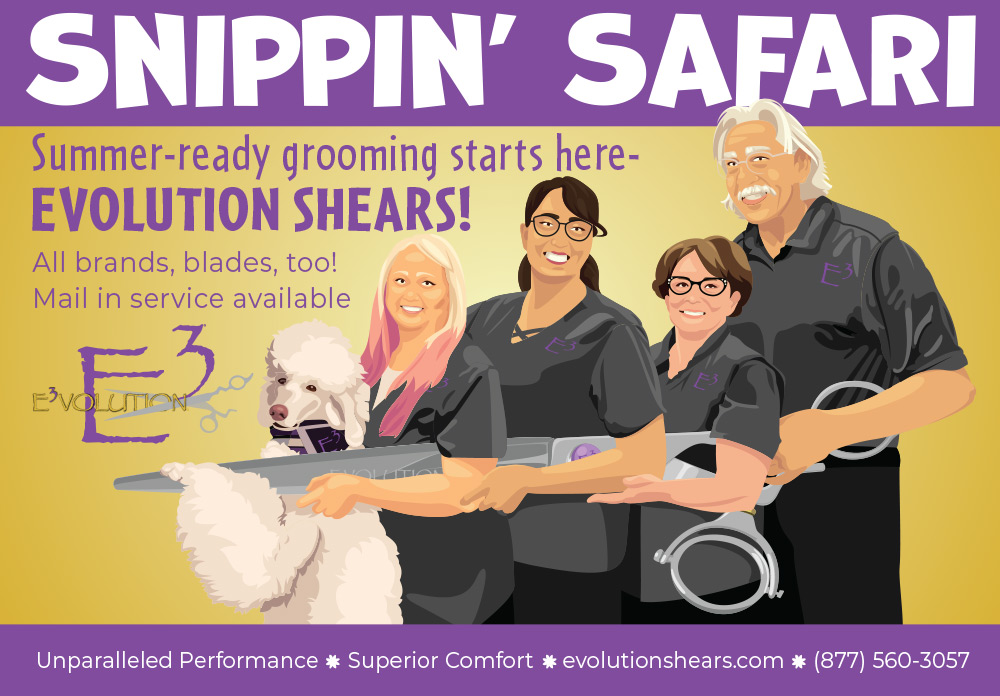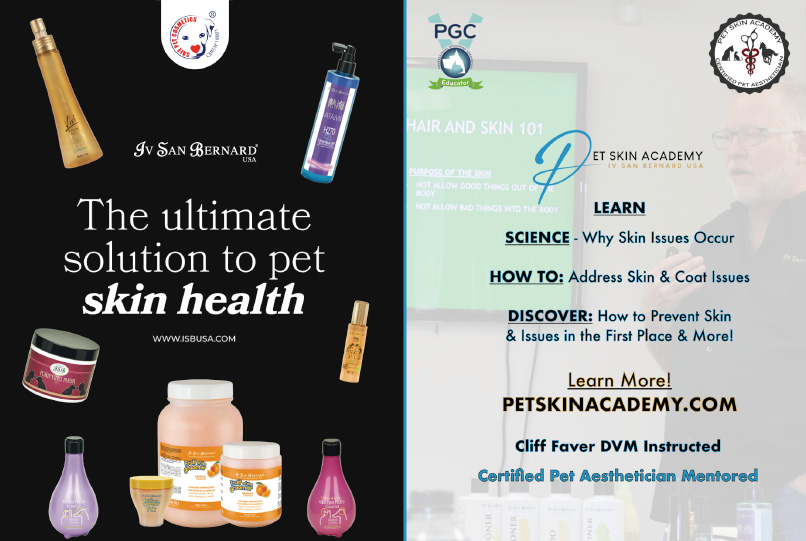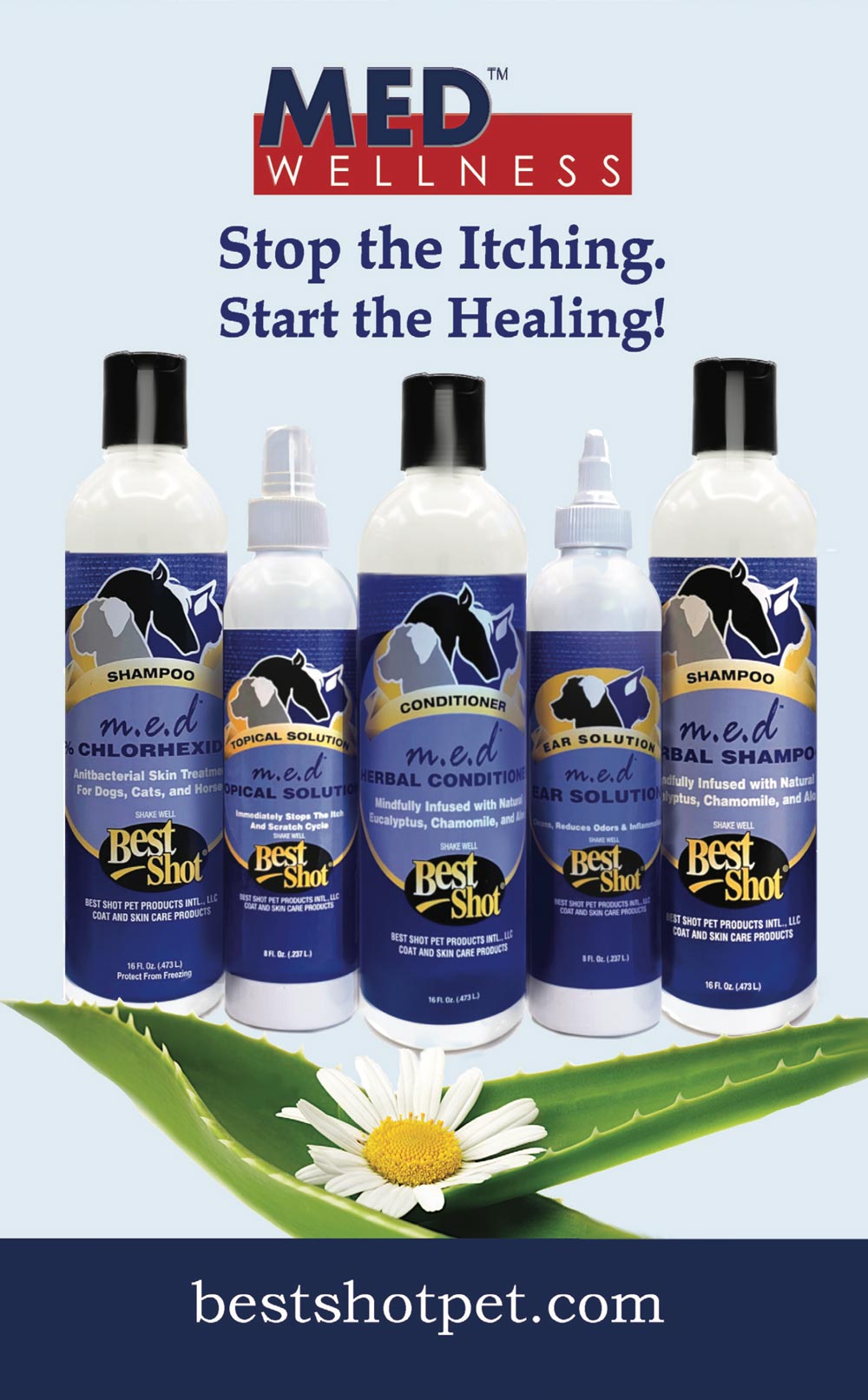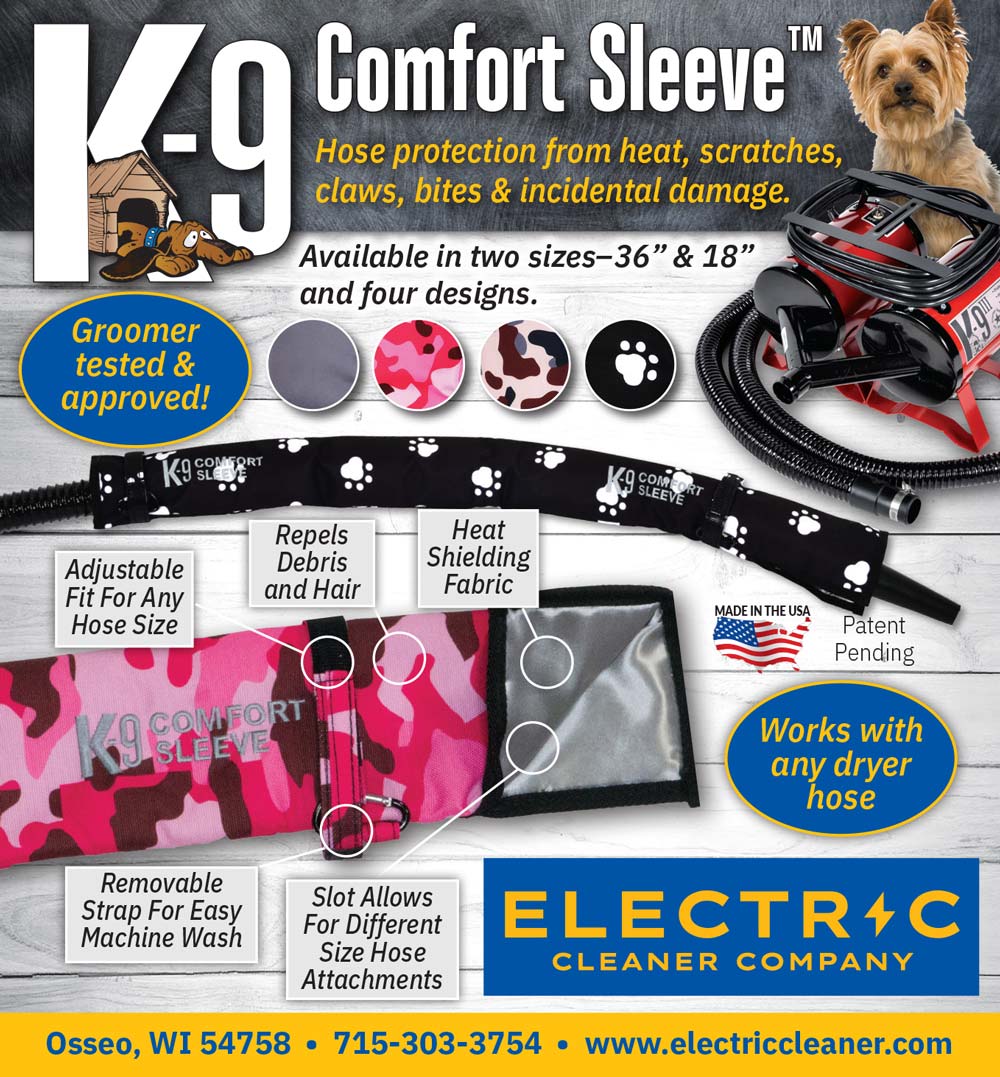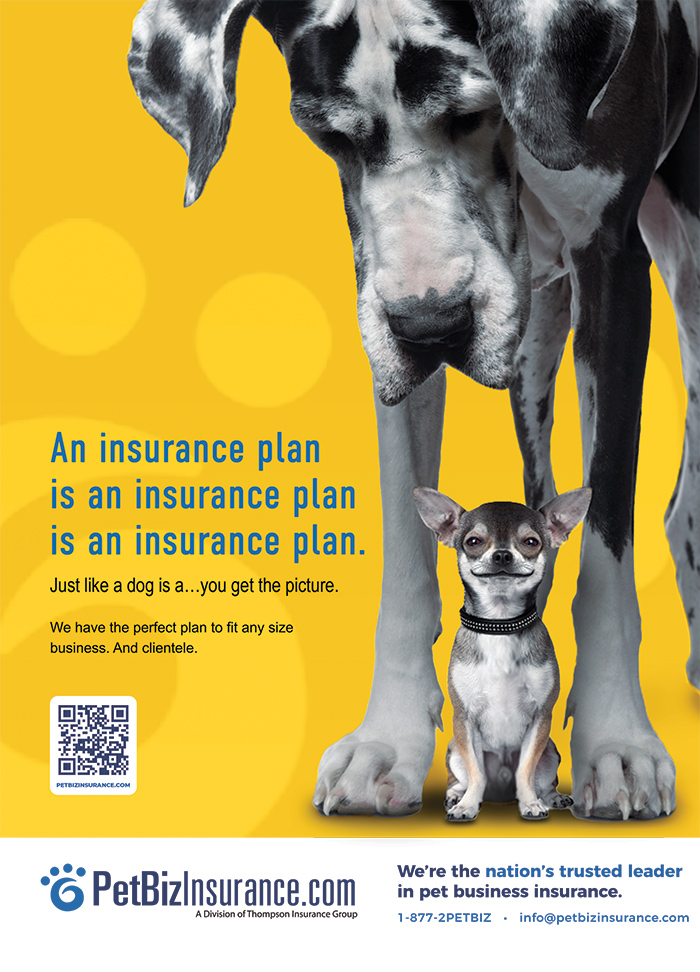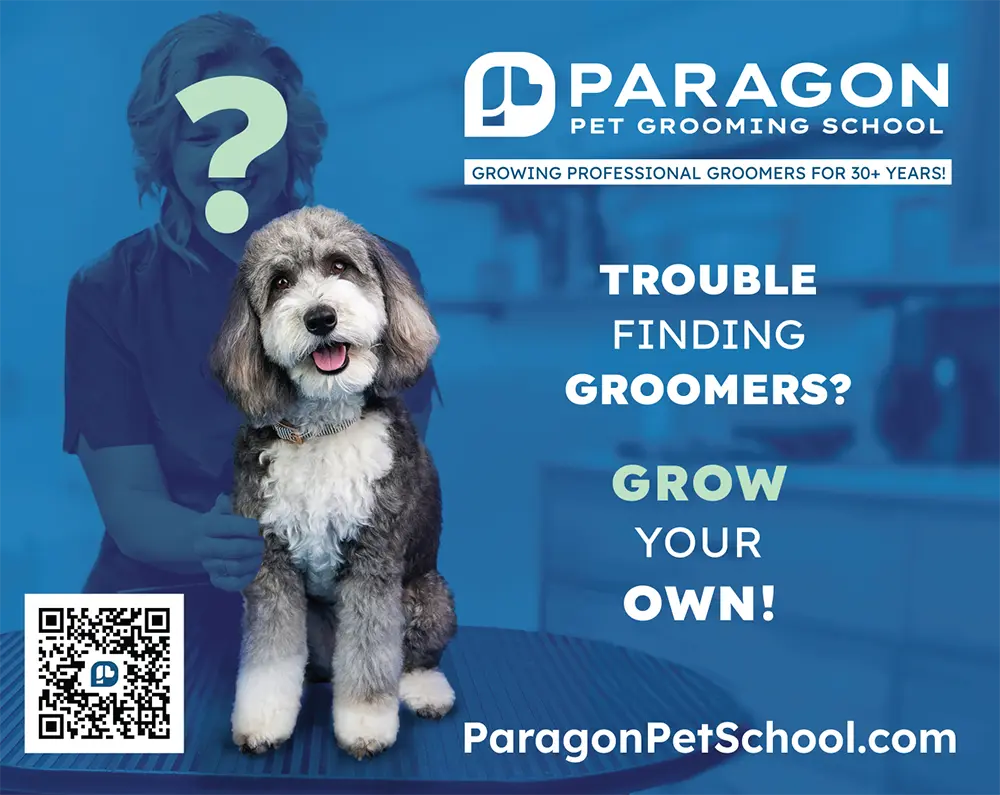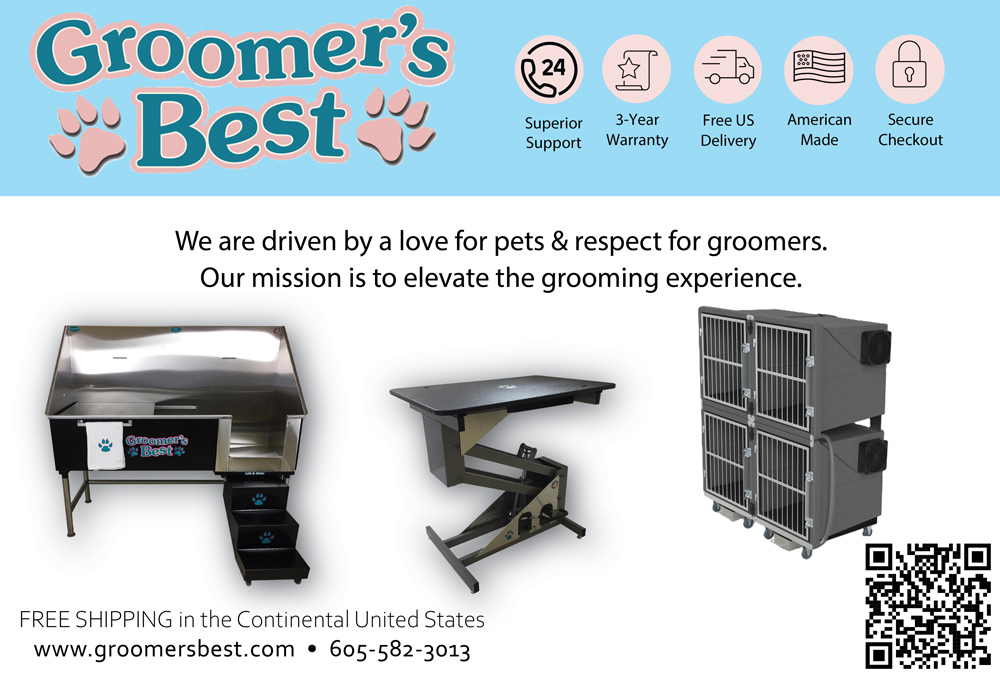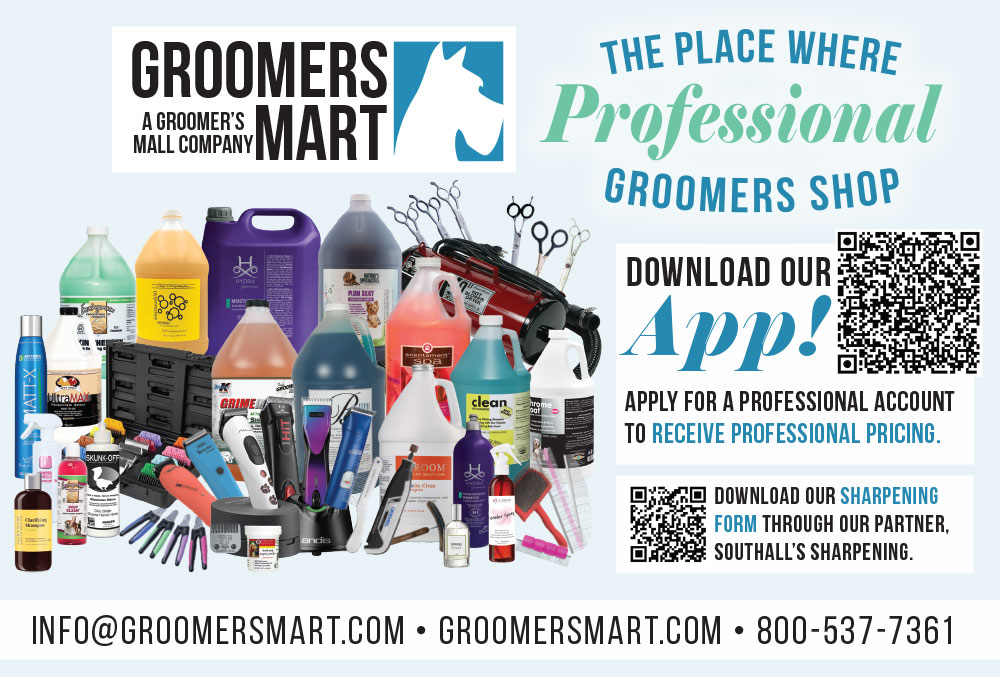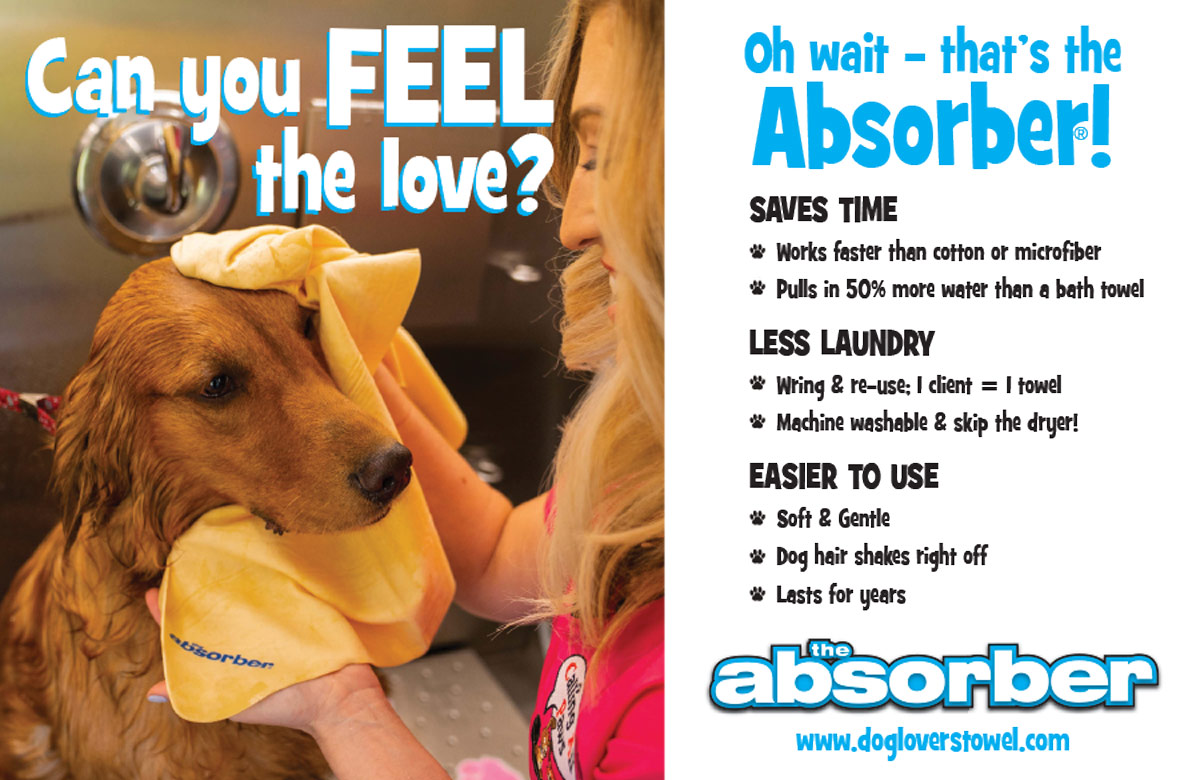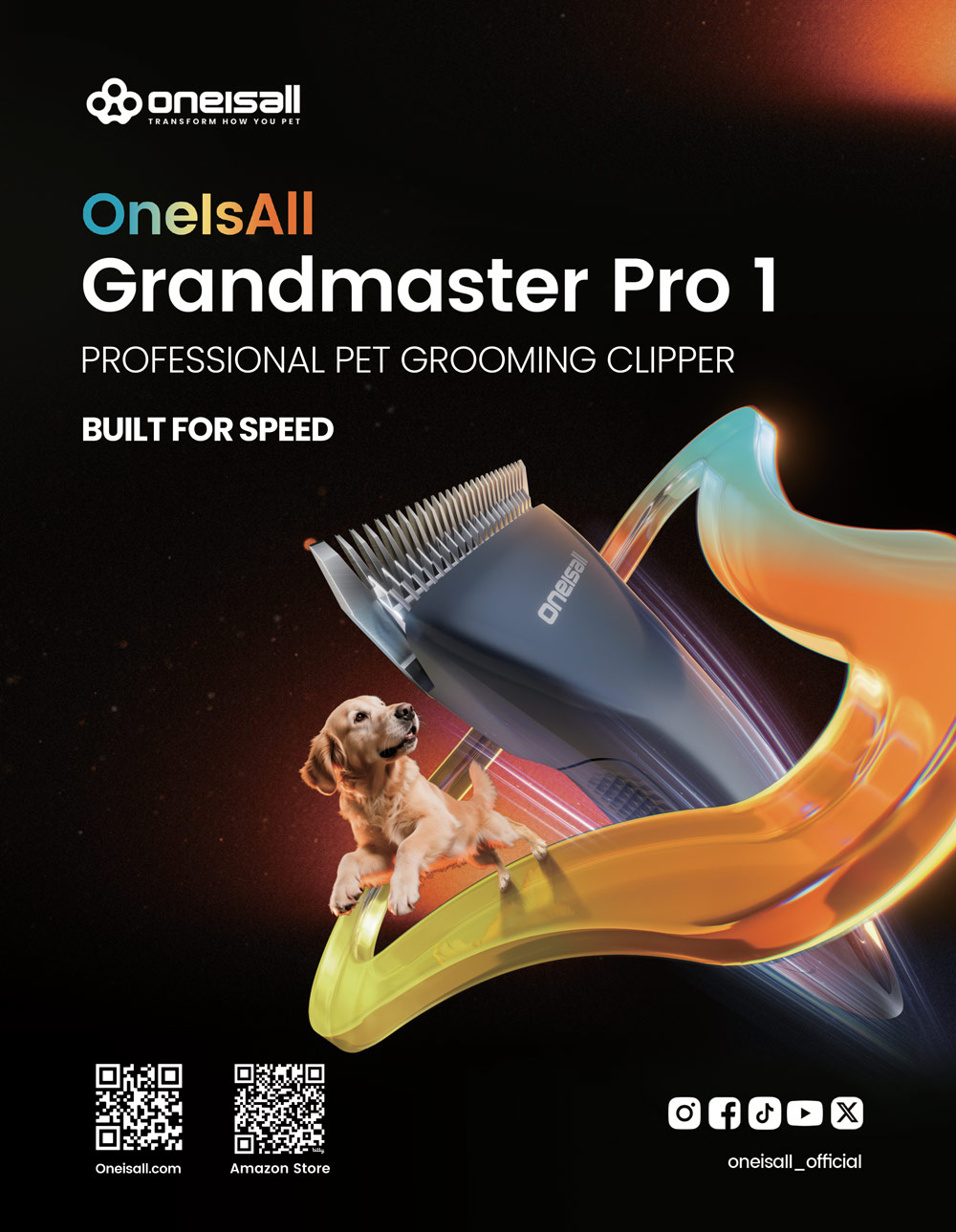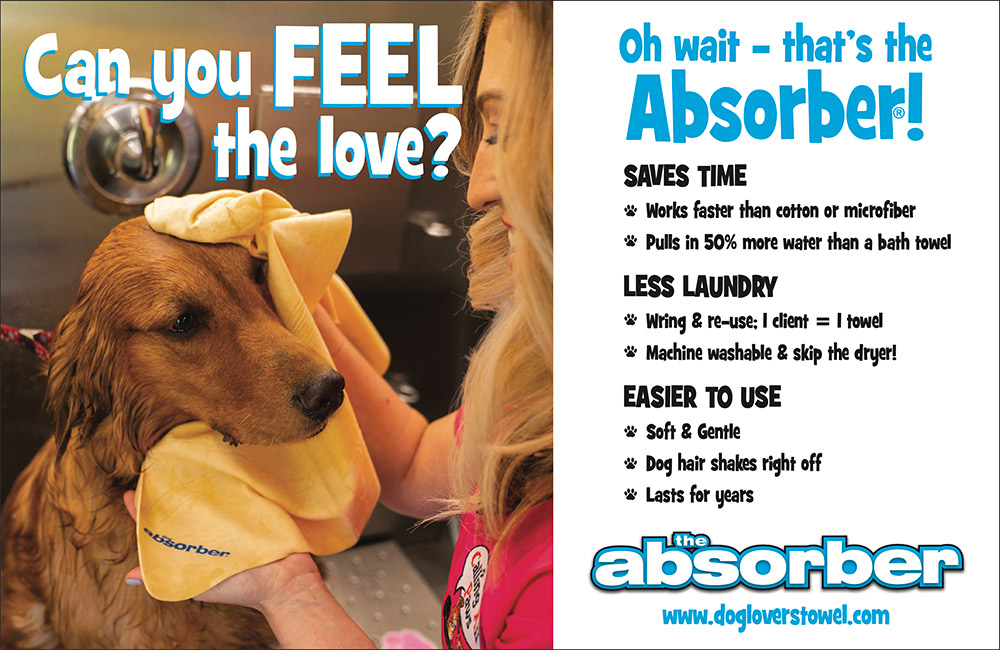Contents | June 2025
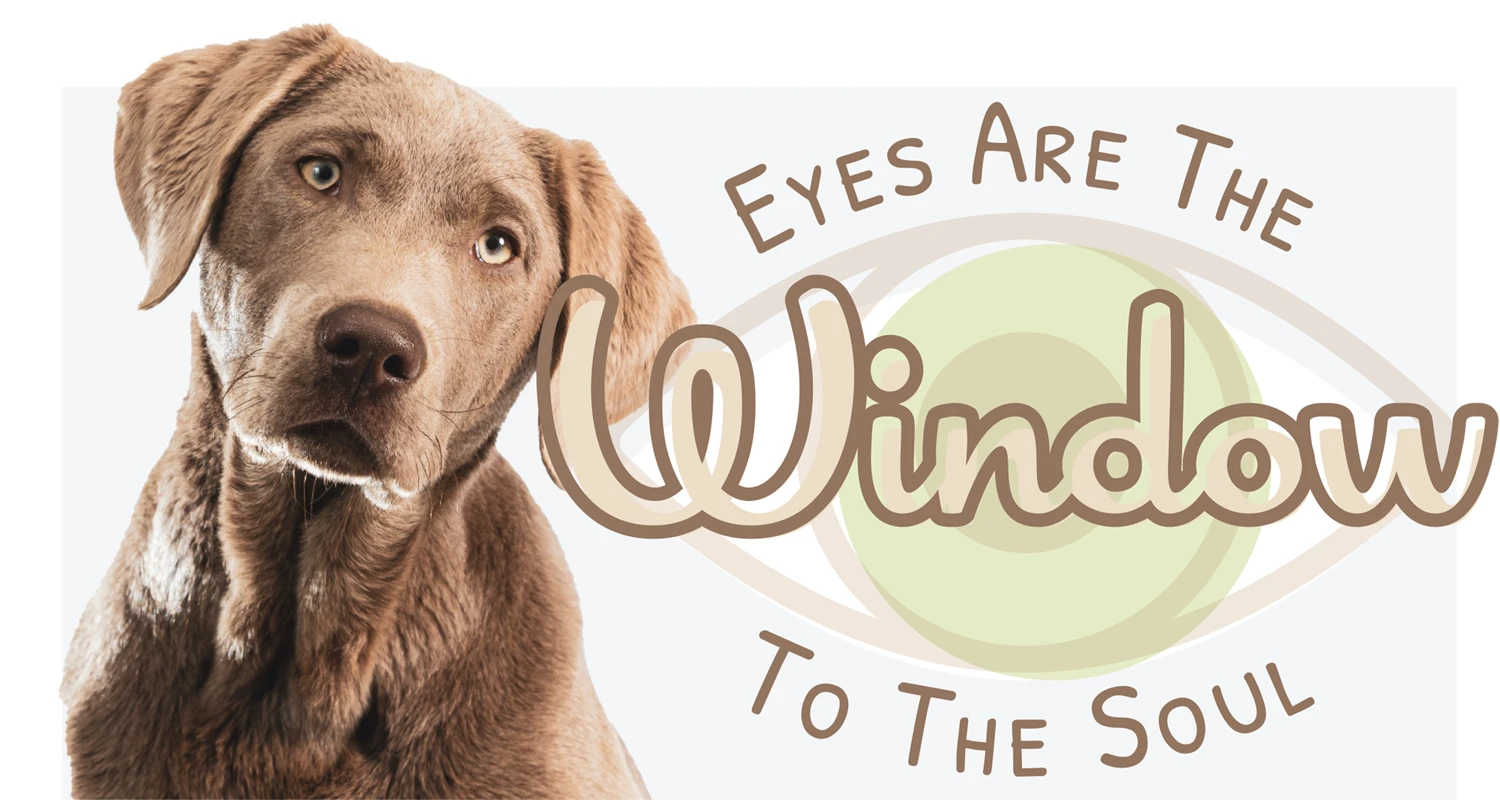

ALSO INSIDE
todd@barkleigh.com
adam@barkleigh.com
gwen@barkleigh.com
rebecca@barkleigh.com
luke@barkleigh.com
laura@barkleigh.com
brandi@barkleigh.com
carlee@barkleigh.com
evan@barkleigh.com
cassidy@barkleigh.com
allison@barkleigh.com
james@barkleigh.com
karin@barkleigh.com
britany@barkleigh.com
Daryl Conner
Lynn Paolillo
Jennifer Bishop Jenkins
Melissa Viera
ALSO INSIDE
ON THE COVER
its advertisers for their continued support.
- American Grooming Academy30
- Andis2
- Animal Photography37
- Artero39
- Bandanas Unlimited34
- Barkleigh Store – The Pet Stylist Playbook14
- Best Shot Pet – MED Wellness15
- Best Shot Pet – Scentament Spa11
- Best Shot Pet – UltraMAX40
- Coat Tender33
- Cosmos Bathing Systems7
- Direct Animal Products21
- Double K Industries3
- Electric Cleaner Company23
- Envirogroom | Special FX Premium Products31
- Evolution Shears9
- Groomer’s Best29
- Groomer’s Choice4
- Groomers Mart41
- Groomsoft20
- Hanvey Engineering & Design51
- IV San Bernard | Pet Skin Academy10
- Laube55
- LupinePet Pro13
- Max & Molly Wear54
- Midmark8
- Odorcide35
- One Is AllDigital
- Paragon Pet Grooming School27
- Paw Brothers | Ryan’s Pet Supply56
- PetBizInsurance.com25
- PetQuest52
- Puppy Playground46
- Quadruped Pet Care26
- Ryan’s Pet Supplies | Leading Edge Grooming AcademyDigital Only
- Stallergenes Greer45
- Stone Mountain Pet ProductsDigital
- Stypstix42
- SUPERZOODigital
- The Absorber Dog Lover’s Towel50
- Wag’n Tails43



 s a dog groomer, you’re no stranger to the importance of precision and attention to detail in your work. Whether it’s perfecting a trim, remembering the specific needs of each pet or providing top-notch customer service, the goal is always to ensure the best experience for the dogs we care for and the clients we serve. One tool that can reduce stress and improve your services is something that may seem simple but can have a huge impact: keeping great records.
s a dog groomer, you’re no stranger to the importance of precision and attention to detail in your work. Whether it’s perfecting a trim, remembering the specific needs of each pet or providing top-notch customer service, the goal is always to ensure the best experience for the dogs we care for and the clients we serve. One tool that can reduce stress and improve your services is something that may seem simple but can have a huge impact: keeping great records.
We’re all familiar with the basic essentials we note on a dog’s file—like trim styles, behavioral tendencies, health concerns and grooming schedules—but have you ever thought about the additional details that can truly enhance your service and strengthen the bond you have with both pets and clients?


3. Personalized Accessories


Great record keeping isn’t just about logging the essentials like grooming style and health information; it’s about capturing the nuances that make each dog unique. These small, thoughtful details can create an atmosphere of trust, comfort and genuine care.
By taking the extra time to note these preferences, you are not only improving your grooming services, but also building stronger relationships with both your clients and the pets in your care. The investment of a few extra minutes per dog can yield countless benefits in the long run. Your clients—and their dogs—will thank you for it.
Kim Kier is the owner/groomer of Little Barks Grooming & Boutique, an award-winning luxury salon in Columbia, South Carolina. She is also a Master Pet Aesthetician, Professional Grooming Credential (World Pet Association), Master Groomer Behavior Specialist, Fear Free Professional, Low Stress Handling Level Silver Certified, and Certified Puppy Consultant.



by Dr. Cliff Faver
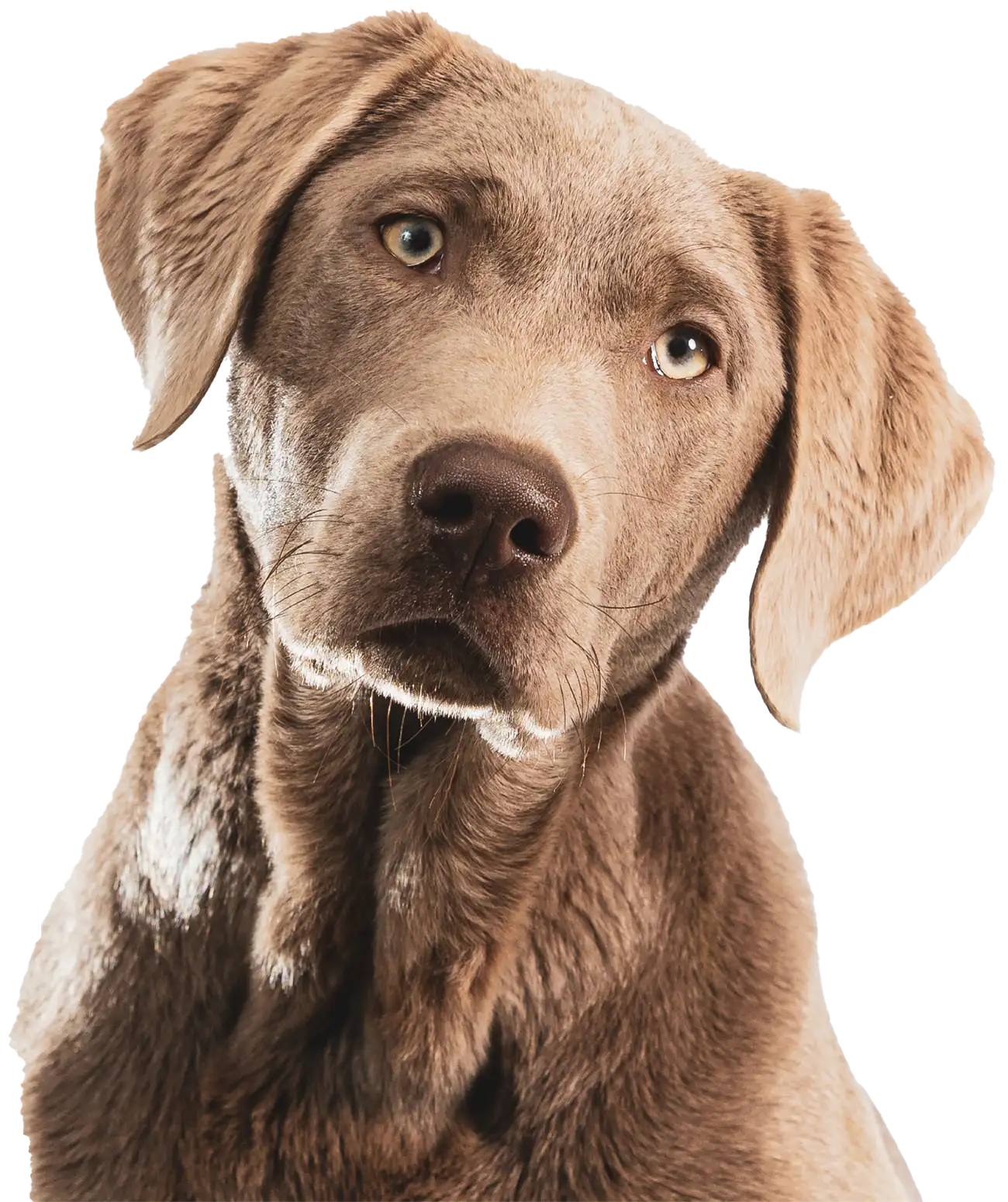
 t’s been said that the eyes reveal a lot about an individual’s inner feelings or emotions. That works well if you are talking about humans, where you can discuss the feelings, but with our pets, it tells us a lot more if we are in tune with them. It tells us when they are depressed, when they are hurting, when they are sick, when they are going to bite, and often tells us about their stage in life.
t’s been said that the eyes reveal a lot about an individual’s inner feelings or emotions. That works well if you are talking about humans, where you can discuss the feelings, but with our pets, it tells us a lot more if we are in tune with them. It tells us when they are depressed, when they are hurting, when they are sick, when they are going to bite, and often tells us about their stage in life.
Groomers are observers, and looking into the eyes of pets and reading their body language can tell you a lot about a pet’s health and wellbeing. Pets usually signal us when they are not happy with what is happening, whether fearful, aggressive or in pain. As we work with them, we must pick up on these signs to minimize their stress and prevent the pet and/or the groomer from getting hurt.
Many health issues, injuries and aging issues can also be observed through the “windows of the soul.” The first observation should be from a distance:
- Is the eye swollen? Concerns about allergies, allergic reactions or injury.
- Is the conjunctiva (white part of the eye) red or irritated? Concerns about allergies, foreign bodies or injury.
- Does the conjunctiva have a yellow hue? Concern about potential liver issues.
- Is the eye severely goopy? Concerns about allergies, dry eye (lack of tear production), ulcer or injury.
- Is the pet squinting or sensitive to light? Concern about a possible foreign body in the eye or under the eyelid, or a corneal (eyeball surface) ulcer.
- Does the conjunctiva have a bruise or blood under the surface? Concern about bleeding disorder, injury, rat poisoning or autoimmune disease.
- Are the eyes racing back and forth, up and down, or in a rotary manner (often also accompanied by a head tilt)? Concern about brain injury, stroke or vestibular disease (inflammation of the inner ear/nerve).
- Is the eye tearing excessively?Concern with allergies, foreign body, corneal ulcer, dry eye, entropion (rolling of the eyelid causing the hairs to rub against the eye) or eyelid tumor.
Then we look a little deeper, observing the inner part of the eye:
- Are the pupils (opening to the inside of the eye) equal in size? Concern about a brain injury, tumor, stroke or injury.
- Are the pupils a different size compared to other animals in the area (dilated or constricted)? Concern about a brain injury, tumor, stroke or injury.
- Is the lens (area central to the pupil) clear or cloudy? Concern about cataracts, sclerotic changes to the lens, vaccine reaction or diabetes.
- Is the fluid inside of the eye clear or cloudy? Concern with a gamut of problems from eye disease, injury or cancers to the pet’s general health.
- Is there a growth inside the eye that is not normal? Concern about cancer, foreign body, infection or sediment from the fluid in the eye.
- Are there blood vessels or black areas going across the cornea? Usually indicates a healing ulcer.
Why is all this important to a groomer? First and foremost, we should all be pet advocates. Remember, even if the client notices, they often don’t know what they are seeing or the potential danger of what they are seeing. Eyes are critical to the wellbeing of the pet. They can survive without their sight, but it presents a lot of struggles, which some clients will not want to take on. Most of these concerns can be controlled if caught early, if not fixed, so we want to help the clients seek help as soon as possible.
Second, if the dog is hurting, in poor health or potentially blind, we must consider the best way to proceed. In some cases, we may need to refuse the groom until seen by a veterinarian; in others, we may need to take special precautions to avoid further damage to the eye, or take precautions not to stress the dog. Many dogs that are blind on one side may be quick to bite when you approach them in their blind spot and they don’t know you are there.
Eyes are critical to the wellbeing of the pet. They can survive without their sight, but it presents a lot of struggles.
There are going to be situations in which some of these issues can occur in the routine grooming process, however. Accidents happen when you are working with sharp or pointed instruments around a moving target (sometimes a REALLY fast-moving target). When we are bathing these pets with harsh products, the same thing applies. Forced-air dryers and shampoos (especially harsh ones) in a pet’s eye can cause an instant ulcer in the eye.
Ideally, we want to do everything we can to prevent these things from happening, including:
- Using proper restraints.
- Training the pets early in life.
- Working with the pet (not against the pet) when they are stressed.
- Not blowing air directly into the eyes.
- Being careful with brushes and tools when working around the eyes.
- Avoid using harsh bathing products that create a higher risk (if they dry your hands severely, they will cause ulcers easily).
Most of us are in the animal industry to help animals, so we must always be the pet’s advocate and look out for their wellbeing. So don’t forget to look into the pet’s eyes and see if they tell us something we need to address.
Dr. Cliff Faver graduated with a BS in Biology/BA in Chemistry before getting a Veterinary degree in 1987. He is the past owner of Animal Health Services in Cave Creek, Arizona and now the US distributor for Iv San Bernard products, teaches the ISB Pet Aesthetician Certification program, and speaks internationally on hair and skin. His passion is to merge groomers and veterinarians to aid in helping and healing pets. He is also a member of AVMA, AAHA, AZVMA, Board member with Burbank Kennel Club, and has served on Novartis Lead Committee, Hill’s International Global Veterinary Board, and a Veterinary Management Group.

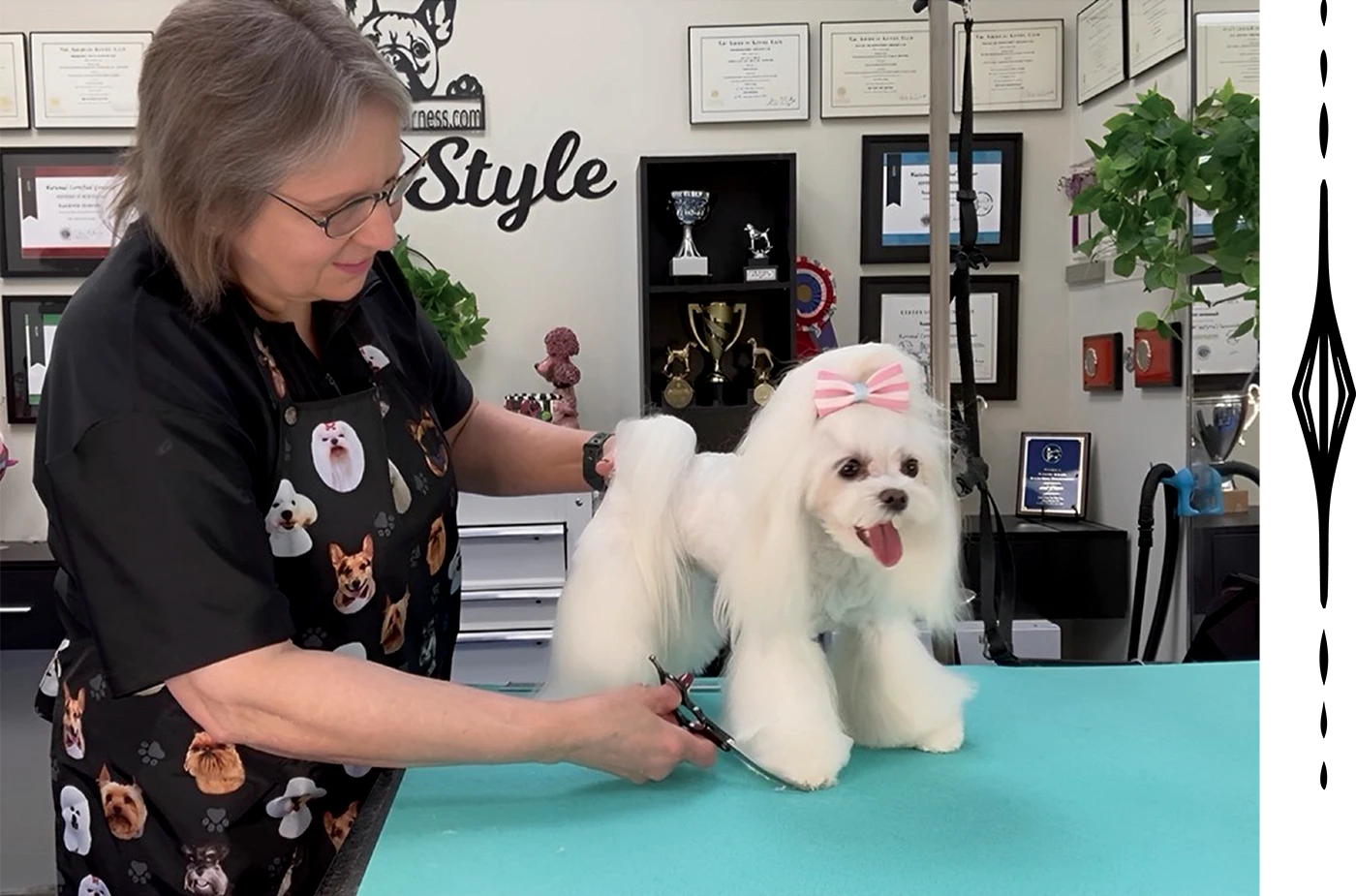
Photos provided by Suzanne Grande
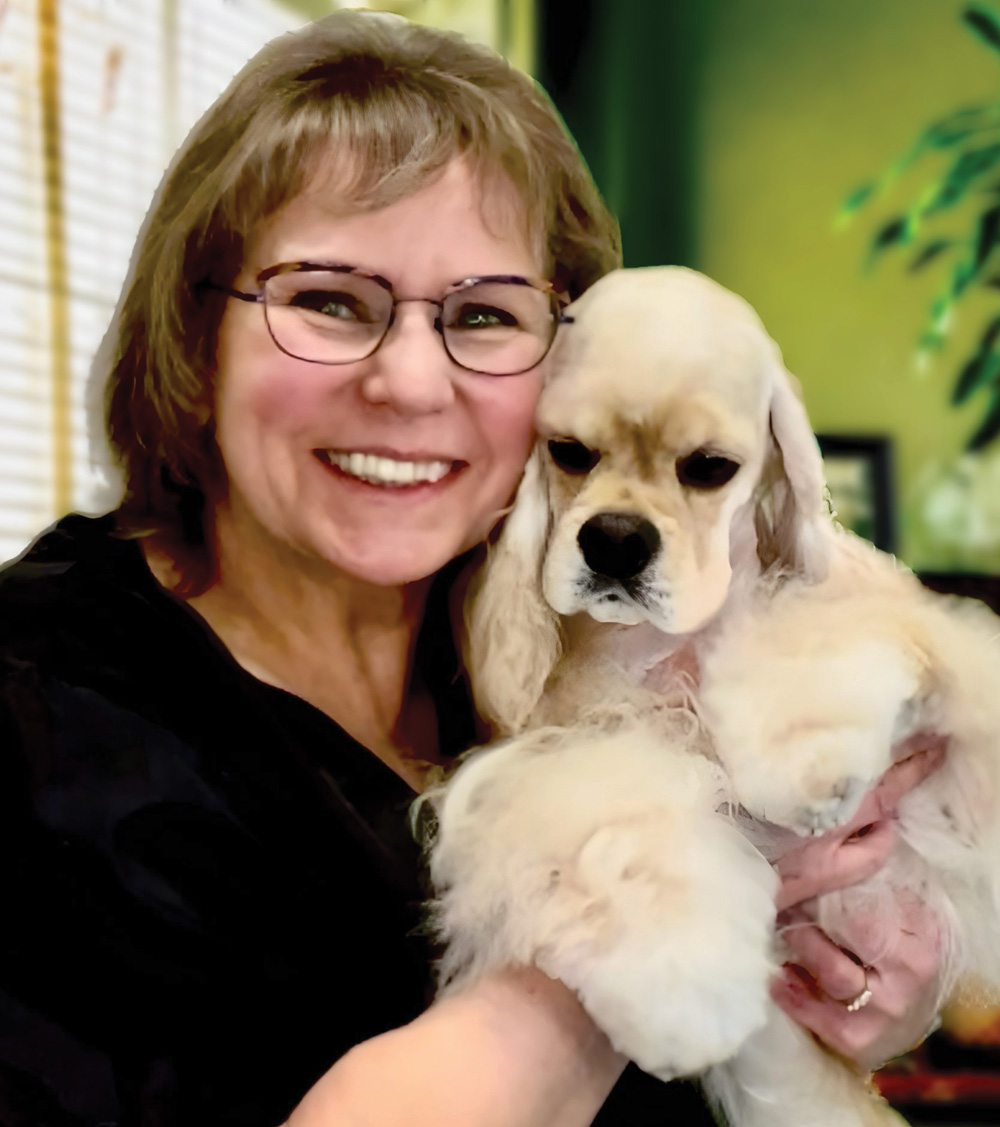
 uzanne Grande, CMG and owner of Grande Style Dog Grooming, has spent nearly every day in a grooming shop for the past 58 years.
uzanne Grande, CMG and owner of Grande Style Dog Grooming, has spent nearly every day in a grooming shop for the past 58 years.
“I was raised in a salon,” she shares. “I groomed my first dog completely when I was nine and did my first one for money when I was 11. However, when I was growing up, I actually wanted to be in advertising. But I became a teenage mom, so I just decided to go with what I knew, and the passion grew from there.”
Suzanne’s working entry into the field was bathing dogs in her mother’s salon for approximately eight years, but she always had a knack for all things grooming. Eventually, she decided the time was right to go out on her own and began working at a pet store as an independent contractor.

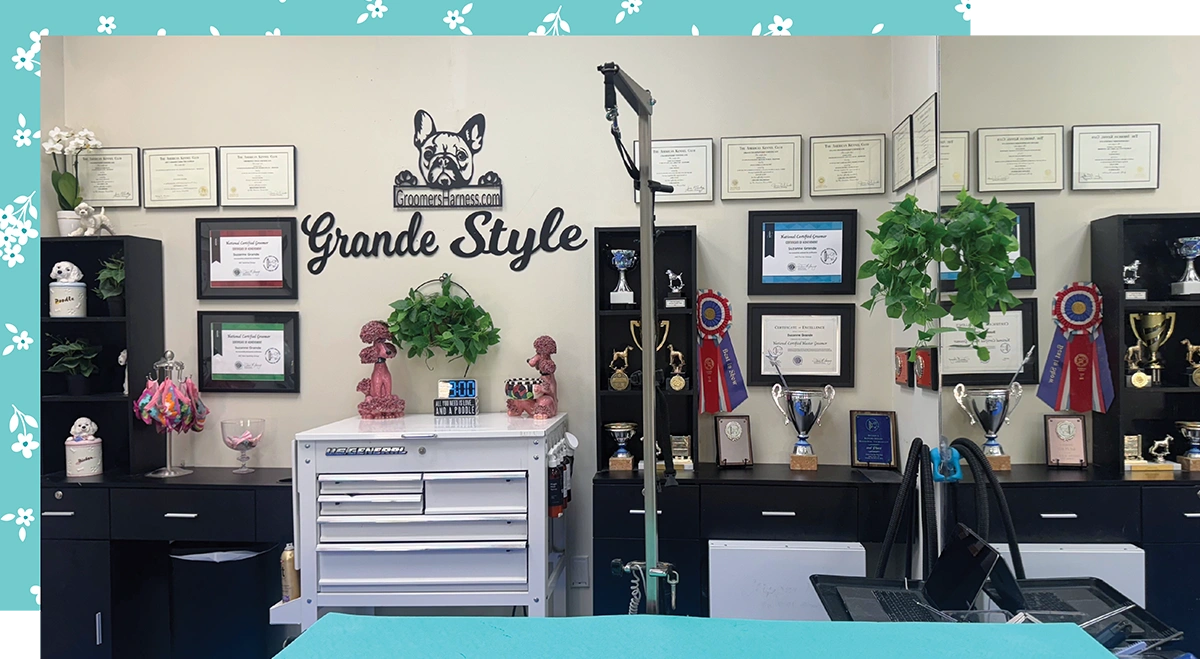


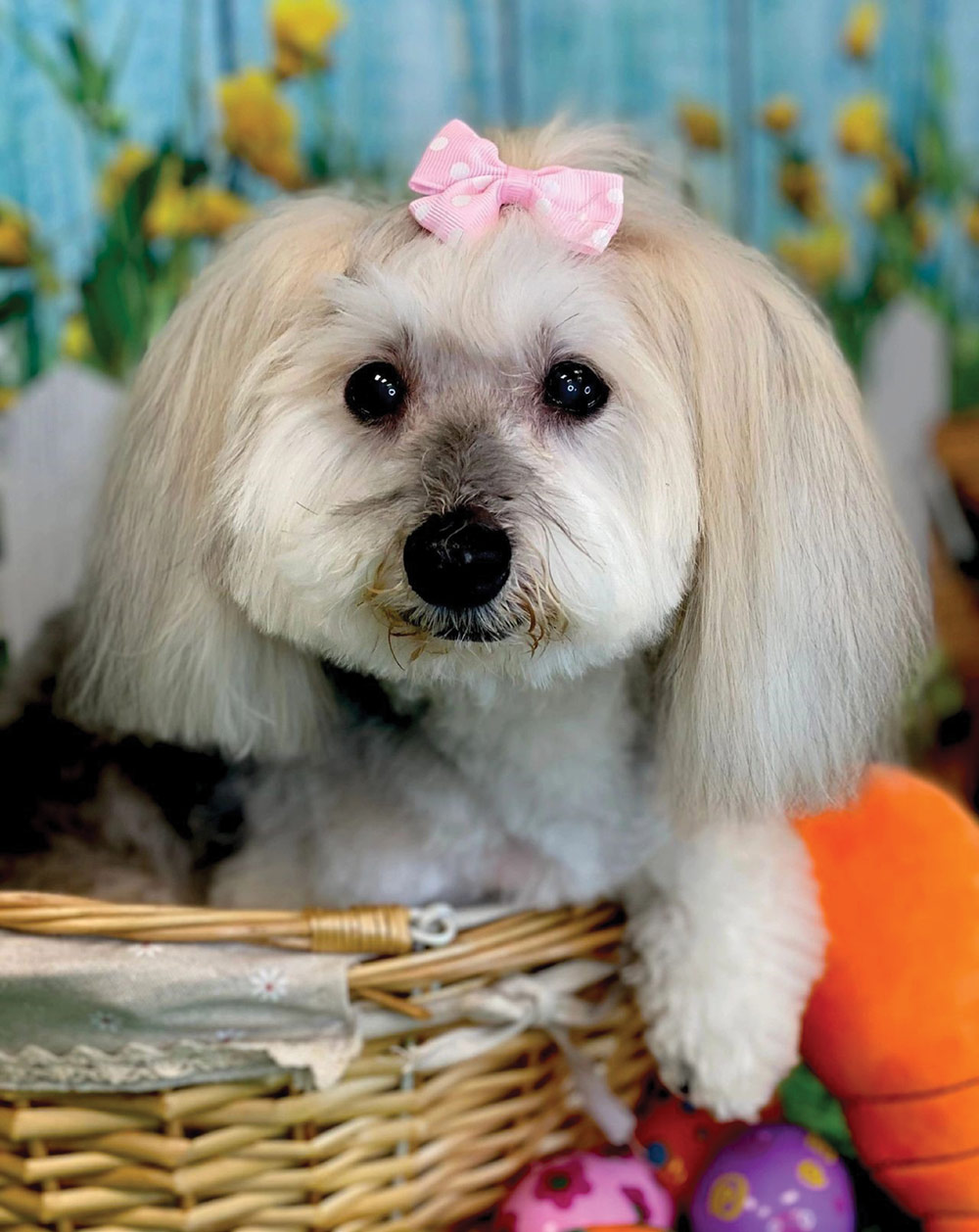

That eye-opening experience led to her savvy decision to become a Certified Master Groomer, because she realized there was so much that wasn’t taught as an apprentice or in a regular grooming salon.
“I started doing a lot of home study to teach myself the techniques that weren’t taught to me growing up; those things that aren’t taught in grooming schools either,” Suzanne explains. “It’s such a vast field and that’s what really made me fall in love with it. You can spend a lifetime learning and you never fully grasp it because there are so many techniques and different breeds.”
After working six years at the pet store, she decided to open her own grooming business, but because of a non-compete, she needed to find a location that was outside a five-mile radius of her former employer. Suzanne and her husband, Wayne, discovered a well-established salon in Tampa—the oldest salon in Hillsborough County, having been established in 1966—and learned that the owner was looking to sell. So, they purchased the business and were now the proud owners of Grande Style Dog Grooming.
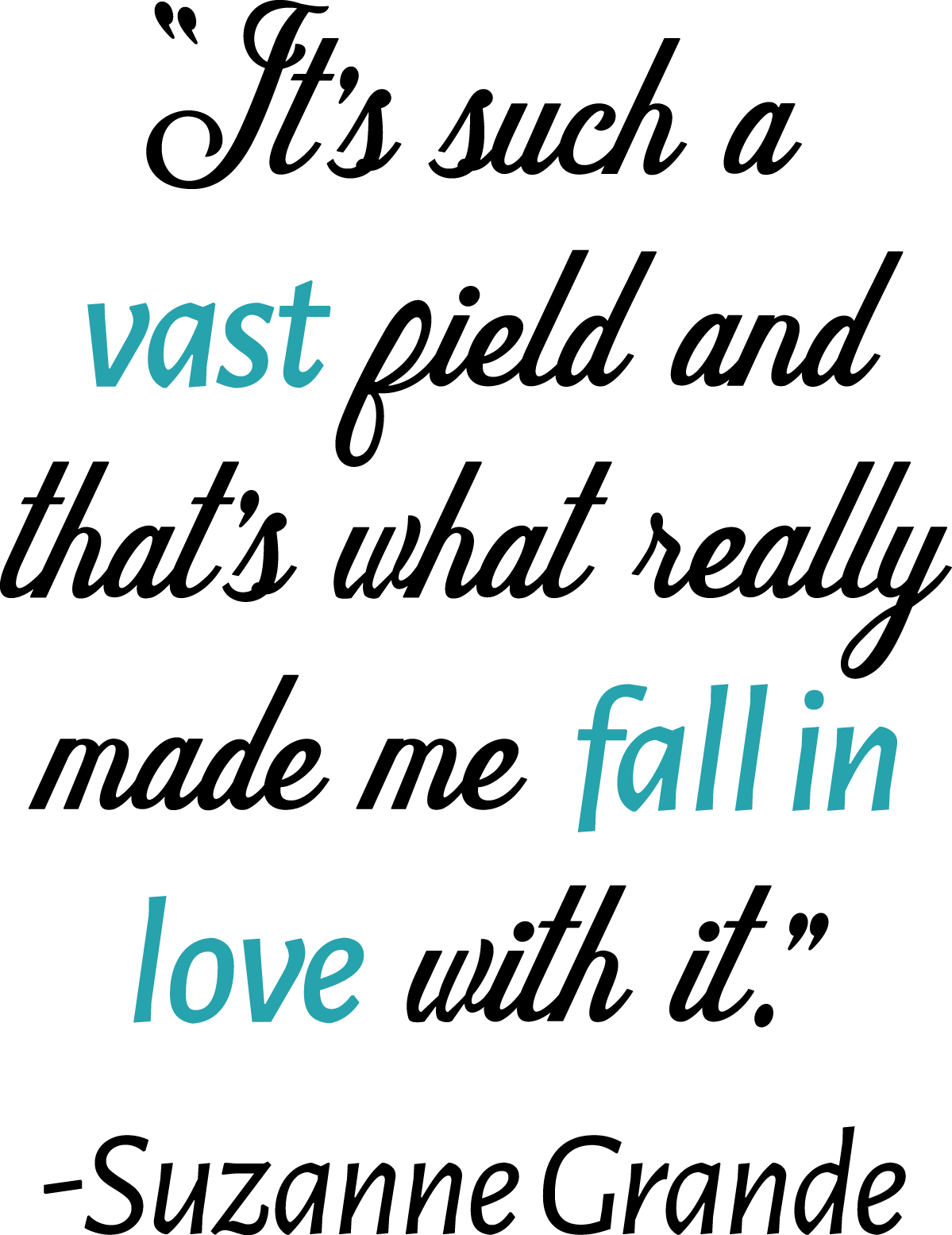
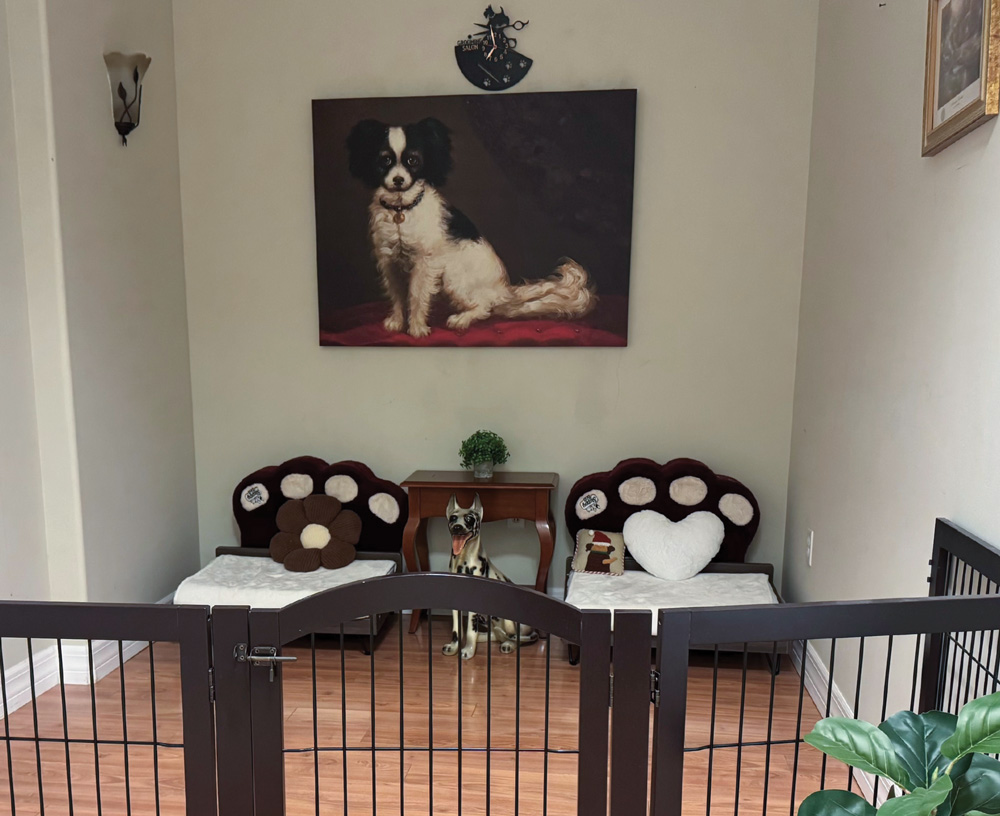
With the existing customer base of Poodle Penthouse combined with a lot of her former clients who gravitated to her new location, Suzanne quickly had more customers than she could handle. To meet the demand, she brought in a groomer and some bathers to get over the initial hump. Today, as part of her booking strategy, Suzanne works by appointment open, and once it’s fully booked, they simply don’t take new clients.
Over the last three decades, Grande Style Dog Grooming has groomed more than 300 champion dogs, including a lot of Best in Show winners.
“That’s where the breed-standard grooms led to; being trusted by a lot of breeders and a lot of people who own or handle their dogs or need them groomed before being sent out to handlers,” Suzanne shares. “That was a big factor to my business’s success.”
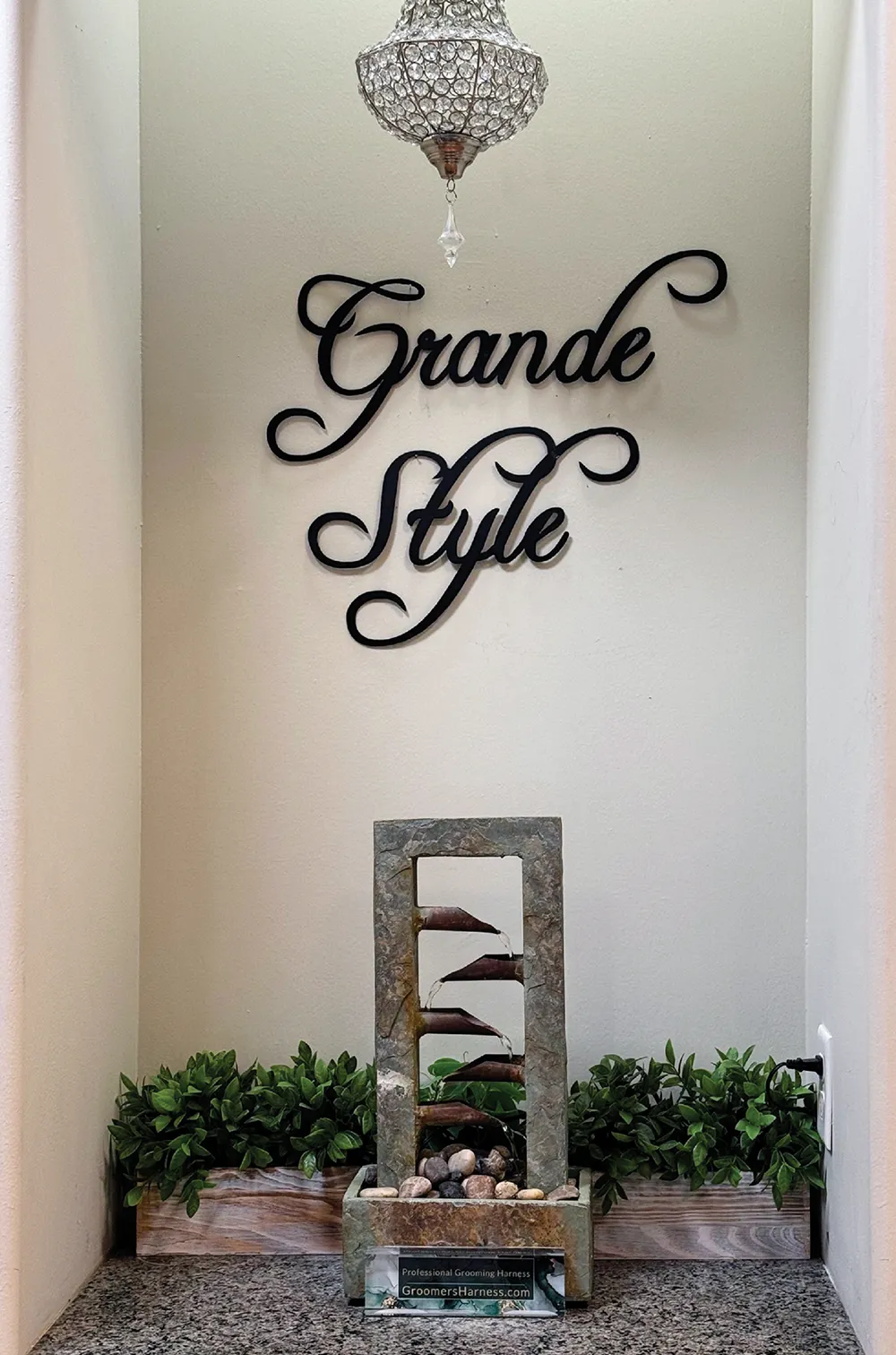
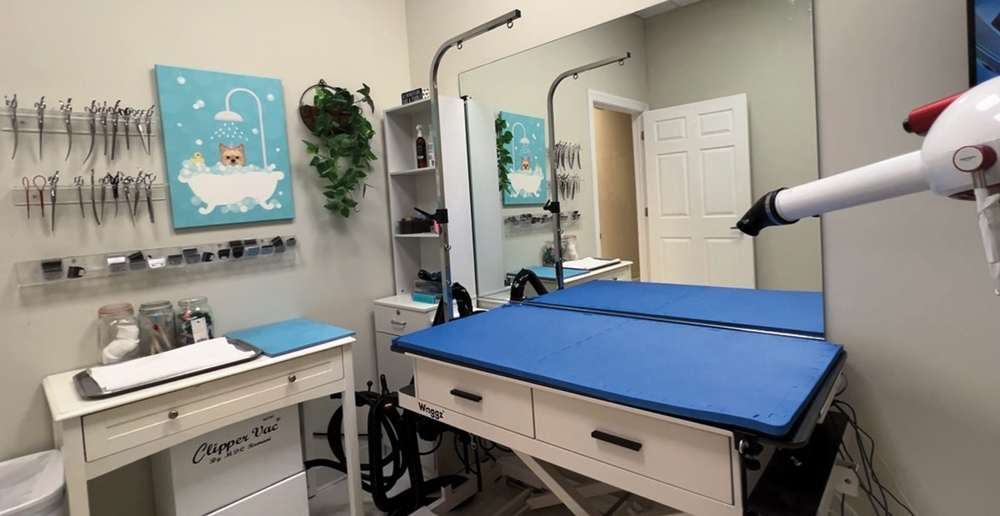
“It’s my focus to keep it personal and one-on-one,” Suzanne notes. “Even though I have the space, the equipment and we’re in an excellent location—I could have 10 groomers easily—I made the choice to work alone and have chosen not to grow.”
The reasons she has chosen to stay small are simple. Quality control, consistency, comfort for the animals and the quietness are all things that she feels contribute to an ideal environment, and her clients appreciate that level of dedication.
Suzanne’s grooming philosophy starts at the initial meeting with the dogs and their owners. Before every groom, she talks to the pet owner and they create a plan to get the ideal look that they want.
Suzanne’s educational materials include videos on Grande Style Dog Grooming’s website (at least two a week) and she livestreams every groom so she can talk to and teach both the pet parent and other groomers who may be watching.
“Most of my clients’ dogs have coats in impeccable condition and that’s through the online education, because I talk for an hour while I’m grooming their dogs and they learn about tools and techniques,” she explains. “I’m not worried about the pet parent or my local competition learning to groom the dog because I don’t care who grooms the dog, as long as someone is grooming them. I just want the proper techniques done.”
Today Suzanne has more than 500 educational videos online and livestreams grooms 10 hours a day. The idea to livestream came about in 2020 during the pandemic because the shop was always set up so parents could stay and watch, but suddenly things had to change.
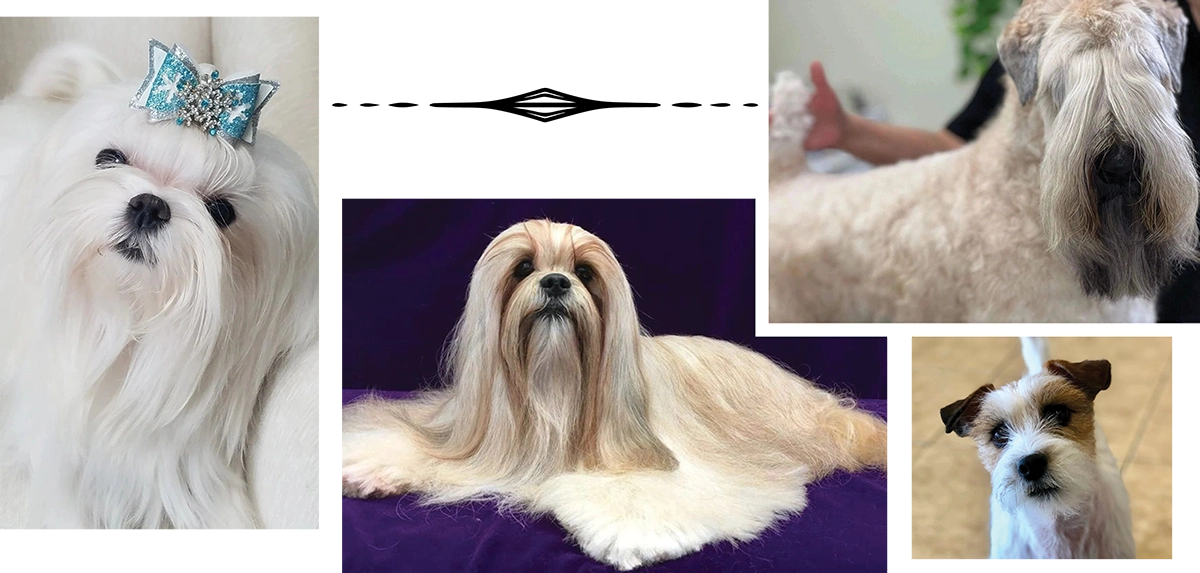
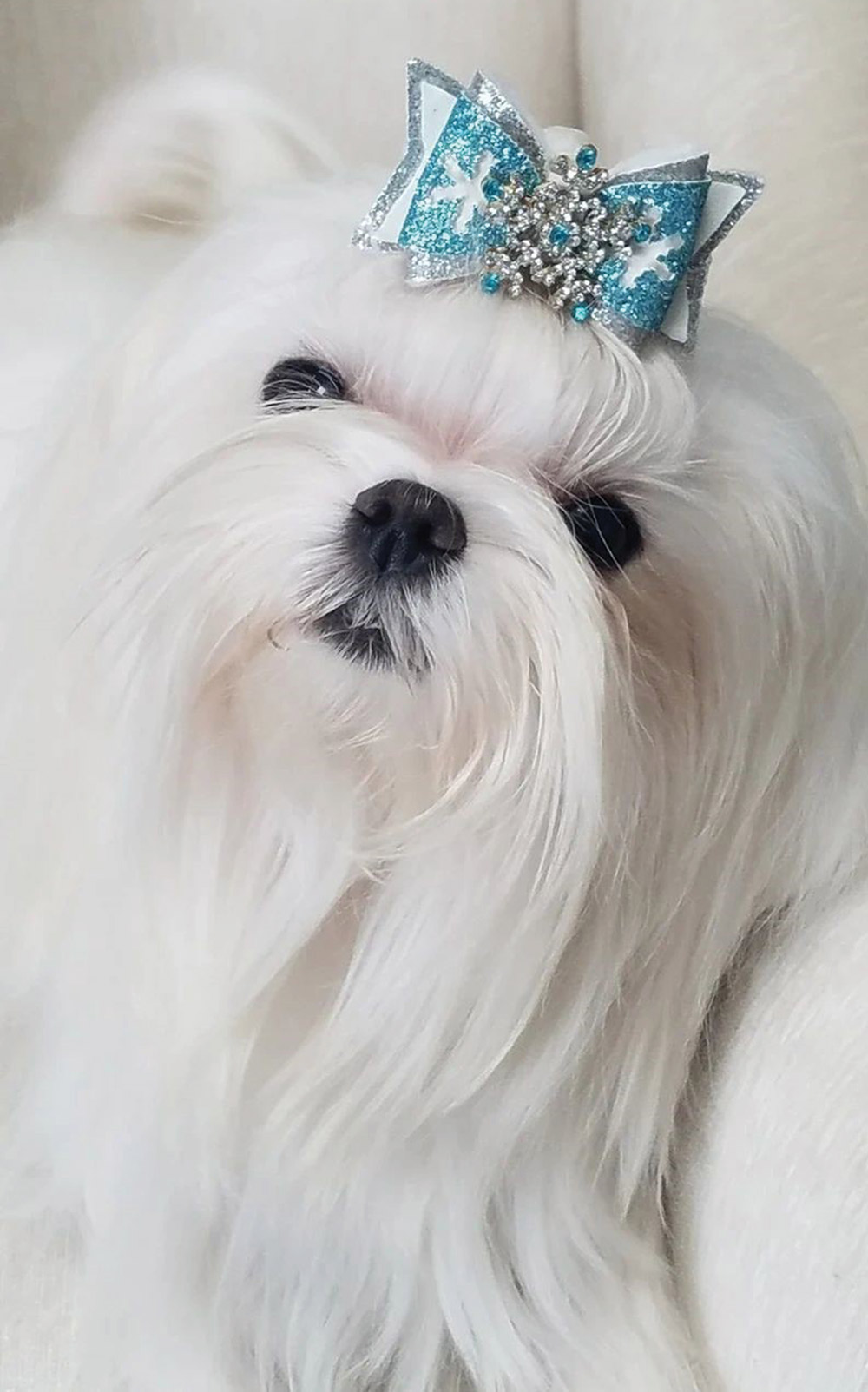

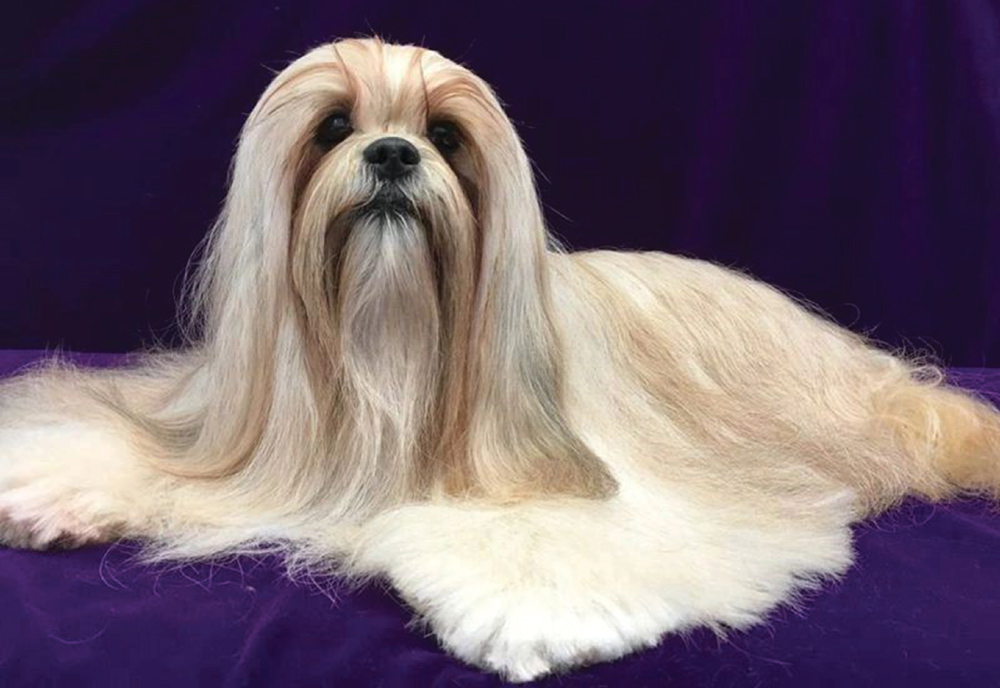

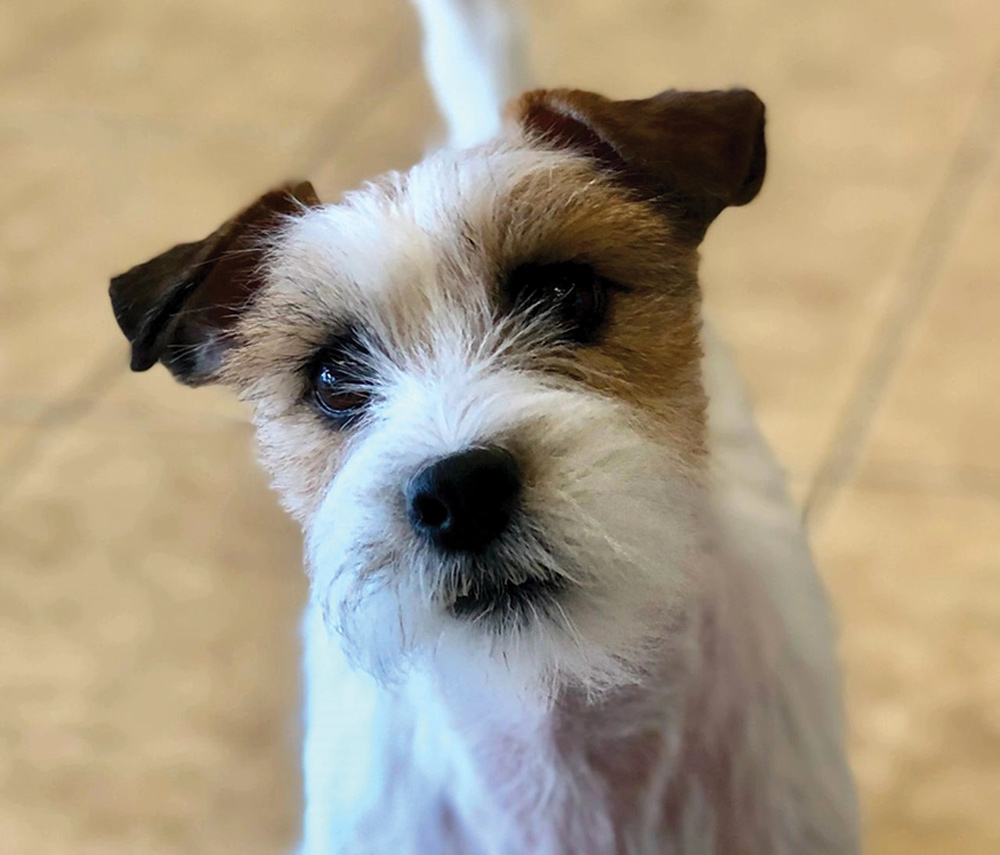
“Even once the lockdown was over, there were still guidelines and restrictions that you couldn’t have multiple people in that small of a space,” continues Suzanne. “So, by streaming, they could watch from home or in their vehicles on the phone.”
In addition to educating others, Suzanne finds it important to stay on top of trends, as she has seen the industry evolve from when she was a child doing old-school grooming methods.
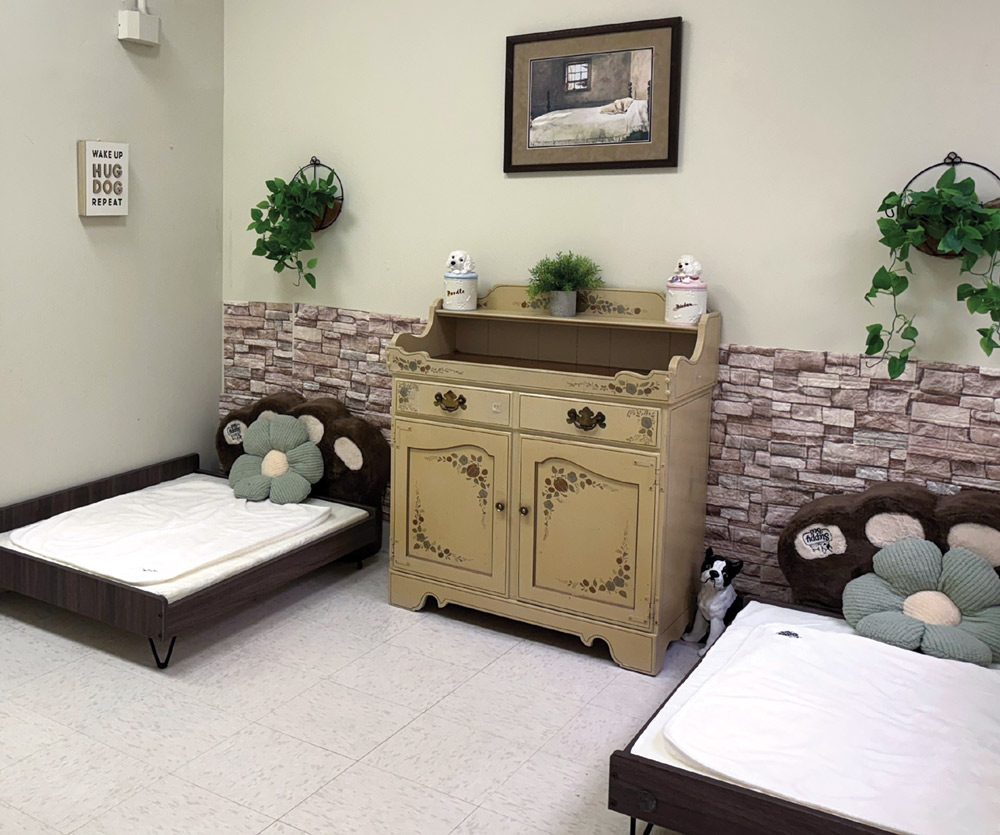
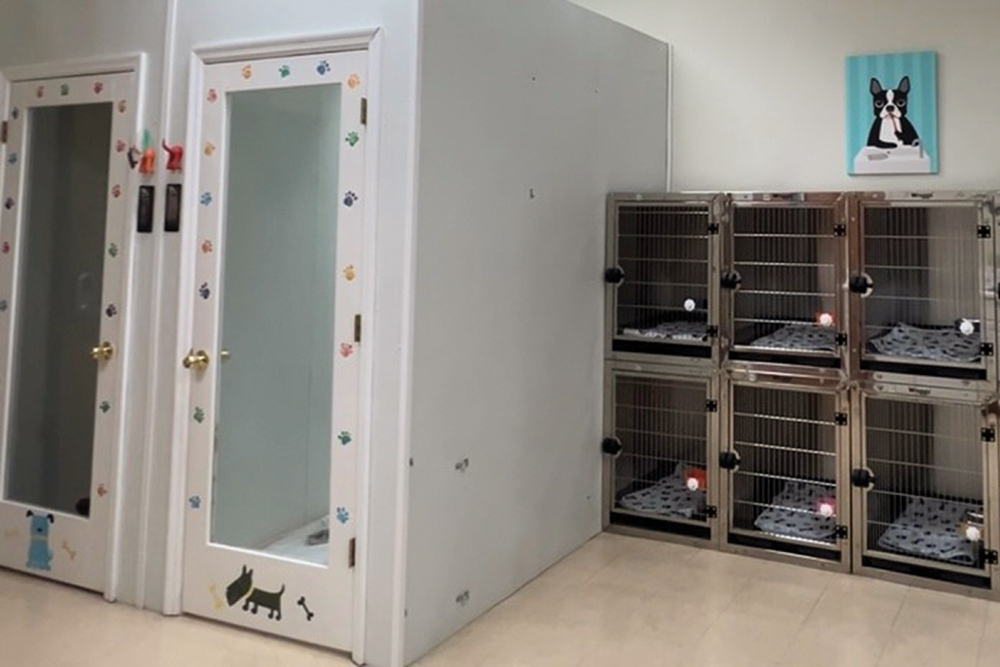
Suzanne’s mother groomed until she was 85 years old and she sees herself grooming for many more years herself—at least until she is 75, she predicts.
“Probably in the next five years, I might move away from the grooming a little bit. But it’s a passion, so I would have no problem grooming until I am 85 like my mother did. It’s just something I really, really enjoy,” concludes Suzanne.


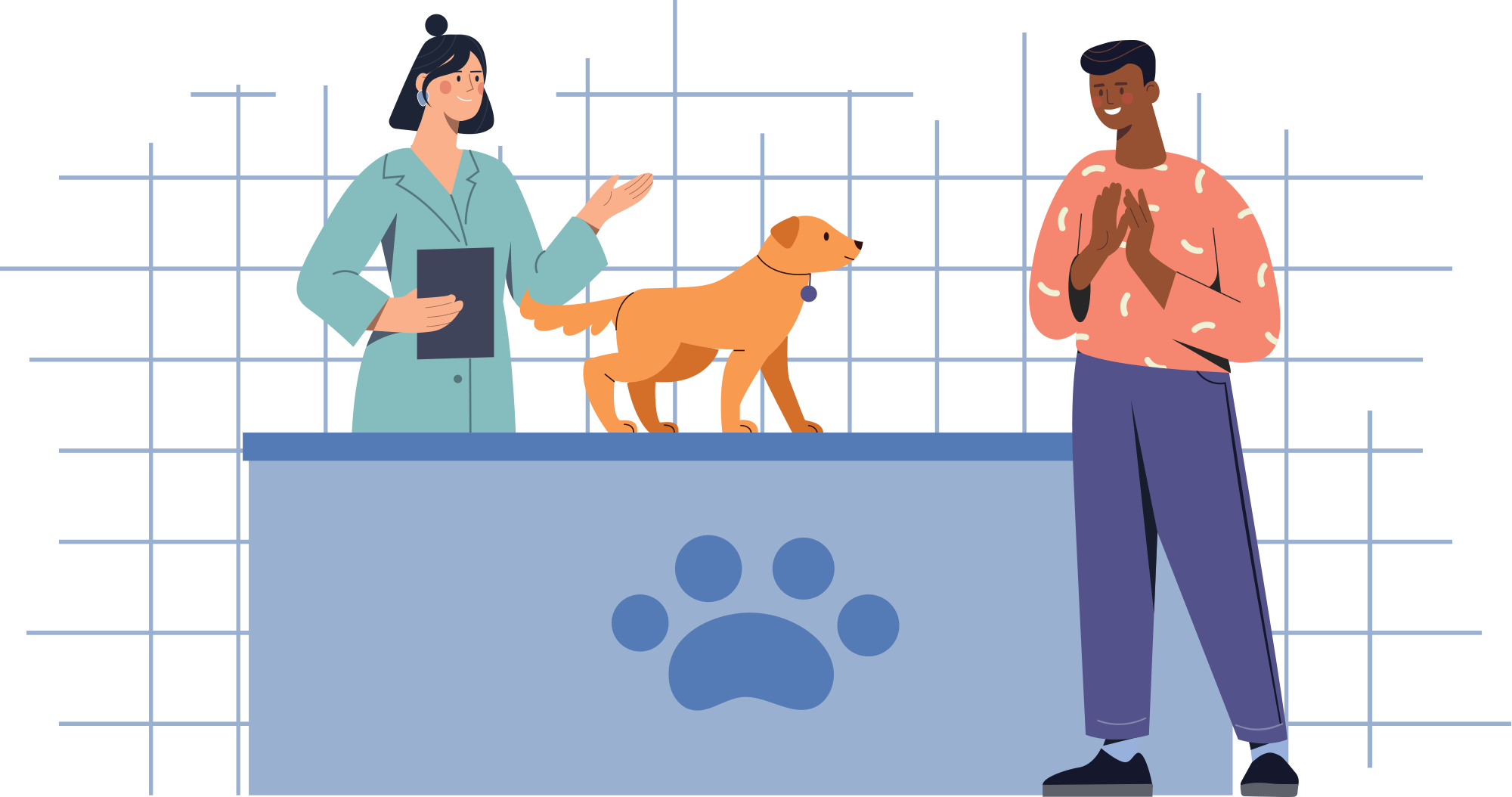
 s groomers, we see pets more often than most veterinarians. Our hands run through every inch of a dog’s coat, and our eyes catch details that pet owners might overlook, making us the first line of defense when it comes to early health detection. From inflamed ears to overgrown nails, small signs can hint at bigger underlying issues that impact a pet’s comfort and wellbeing.
s groomers, we see pets more often than most veterinarians. Our hands run through every inch of a dog’s coat, and our eyes catch details that pet owners might overlook, making us the first line of defense when it comes to early health detection. From inflamed ears to overgrown nails, small signs can hint at bigger underlying issues that impact a pet’s comfort and wellbeing.
While we’re not veterinarians and should not diagnose any illness or health concern, we can alert owners by pointing out what we notice and encourage proactive care. This article will walk you through 10 common health concerns that groomers frequently spot during the grooming session.
- Could indicate infection or allergies.
- Suggest a vet visit and gently clean what you can without digging into the ear canal.
- Check matted areas for skin issues before dematting.
- Refer to vet if infected.
- Long nails impact the way pets walk and their joint health. It is painful for pets to adapt their bodies to carry their weight, which leads to many health concerns.
- Educate owners on regular nail care.
- Could be from allergies, irritation or blocked tear ducts.
- Note cleaning tips and vet referral if chronic.
- Note changes and inform the owner in a calm way.
- Use consistent language like, “It’s worth getting checked.”
- Fleas can wreak havoc on a pet’s skin. They can also affect you and other pets in your care.
- Refer them to a vet for proper prevention and elimination.
- Bad breath can mean more than just stinky kisses, and can even link to heart and kidney health.
- Explain the importance of regular dental care to the owner and suggest they consult their vet.
- Can indicate chronic licking, allergies or hormonal imbalances.
- Encourage regular monitoring and communication with the vet.
- Abnormal smells might warrant a vet visit.
- Talk to the owner about appropriate shampoos and recommend a vet check if recurring.
- Certain behaviors can indicate pain, anxiety or undiagnosed issues.
- Note the patterns and support nervous or uncomfortable dogs by removing triggers that can make things more stressful.
- Chat with the owner about what you notice. If you do not communicate, the problem may become worse over time.
Remember, you don’t have to diagnose to make a difference. Simply observing, documenting, and communicating with care and professionalism builds trust with your clients and ensures better outcomes for the pets we all love.
Stay curious, stay compassionate and never underestimate the value of your trained eye—because sometimes the smallest things we spot can make the biggest impact.
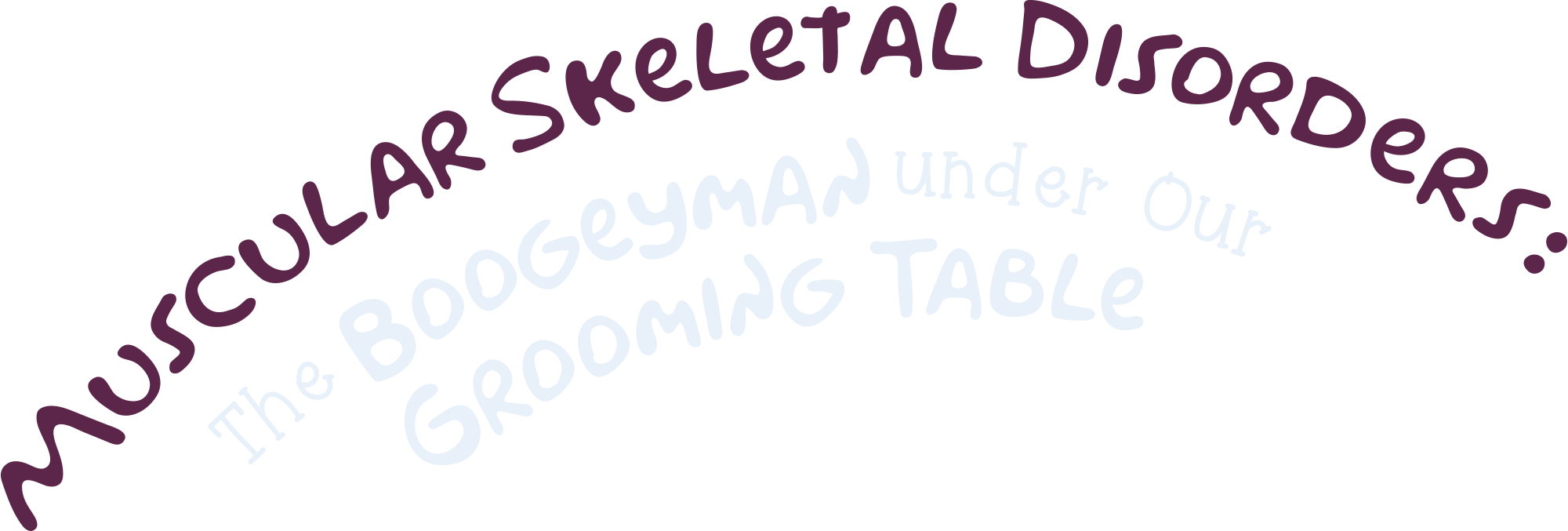

 nfortunately, these aren’t uncommon stories: Groomers retiring far earlier than they’d like, having surgery to repair injuries, being out for weeks or months rehabbing a work-related injury, or just plain living in pain. As much as we try to prevent them, injuries can happen in the grooming salon. Many can be reduced by proper ergonomics, including Muscular Skeletal Disorders, or MSDs, but what makes them different from other grooming-related injuries?
nfortunately, these aren’t uncommon stories: Groomers retiring far earlier than they’d like, having surgery to repair injuries, being out for weeks or months rehabbing a work-related injury, or just plain living in pain. As much as we try to prevent them, injuries can happen in the grooming salon. Many can be reduced by proper ergonomics, including Muscular Skeletal Disorders, or MSDs, but what makes them different from other grooming-related injuries?
Let’s use our very favorite slicker brush as an example…
We all know the joys of a new brush—lovely, long pins to get through that doodle coat, a handle that fits our hands just right, and it may even be in a color that makes us smile. We reach for it again and again, day after day. We do our best to protect it, but it’s just a brush, after all, and not as cherished as our precious shears.
Over weeks and months, wear shows, pins get bent or lost altogether, and the color gets scuffed off the handle or even fades a little. Over time, these changes make it less effective. However, these changes happen slowly, and we may not even notice right away that it’s not performing like it used to until it becomes impossible not to notice. This is comparable to an MSD, also called “repetitive motion injury” or “repetitive strain injury,” which shows a slow wearing over time.
Now, if that same new brush (or even an older one) hits the floor and is stepped on, snapping the handle or mashing the pins, that’s similar to an acute injury. Both types of injuries happen in grooming salons worldwide. This article will focus on MSDs, the injuries that can sneak up on us.
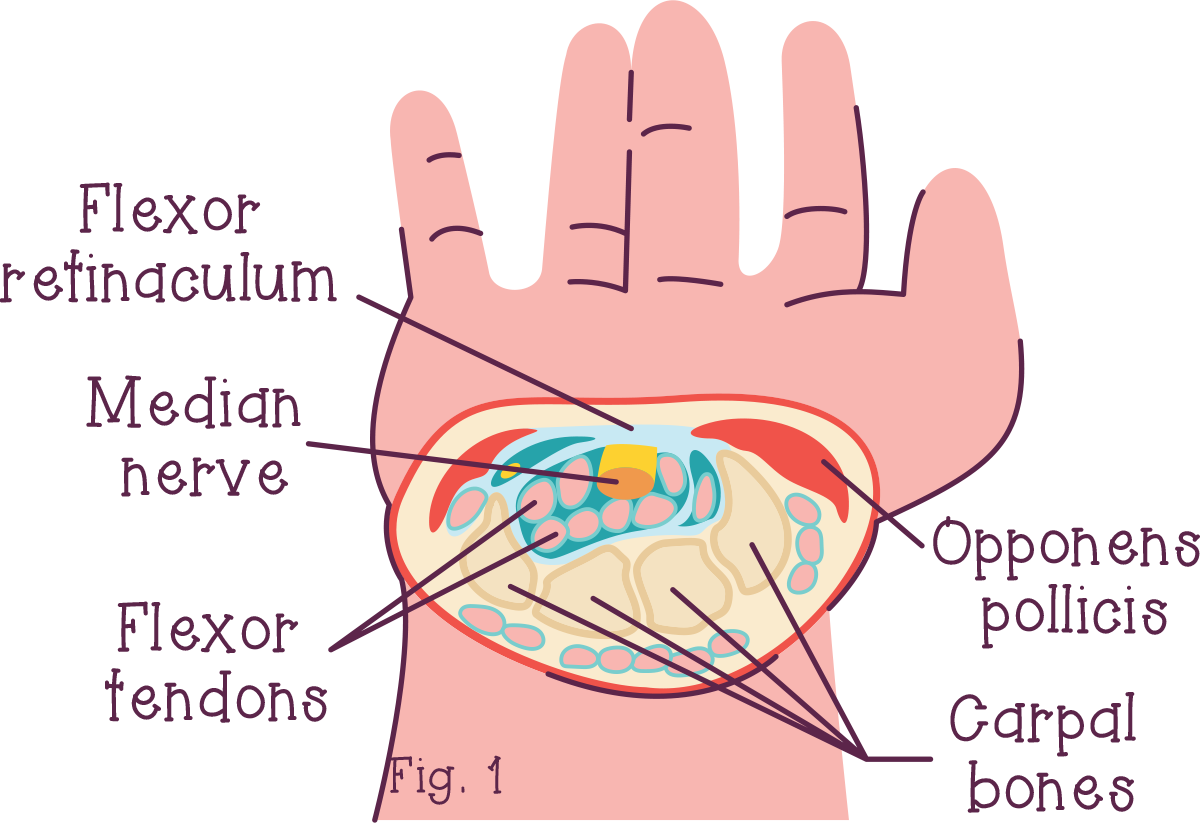
Hand-arm vibration syndrome is caused by regular and prolonged exposure to vibration, primarily through the use of vibrating hand tools. This is often seen in workers using heavier machinery, such as jackhammers. Although our clippers shouldn’t vibrate that much—unless we’re really behind on changing our blade drive—they still do. Another culprit is holding the dryer hose for extended periods. The air traveling through the hose, as well as the powerful motor, causes vibrations, which is part of the reason our hands go numb after a while.
Some of the symptoms of this syndrome include permanent numbness in the hands and fingers, muscle weakness, and aches and pains in the hands and arms. Sound familiar? Carpal tunnel syndrome produces similar symptoms, which include numbness in the fingers, pain in the hands and arms, and muscle weakness. There are other symptoms that help us tell the difference between the two, but there is enough overlap that scientific journal articles have been written on not writing off all symptoms of tingling fingers automatically as Carpal tunnel.1
The leading cause of Carpal tunnel syndrome is often seen as any of those awkward moments we experience many times a day, such as bending our wrist and bringing our thumb towards our ring finger, which compresses the median nerve. However, one of the causes of it is also the use of vibrating tools.
The median nerve does not have much room (Fig. 1), and any swelling or aggravating of the tendons surrounding it can put pressure on the nerve. The damage isn’t caused right away; remember, this is a gradual injury.
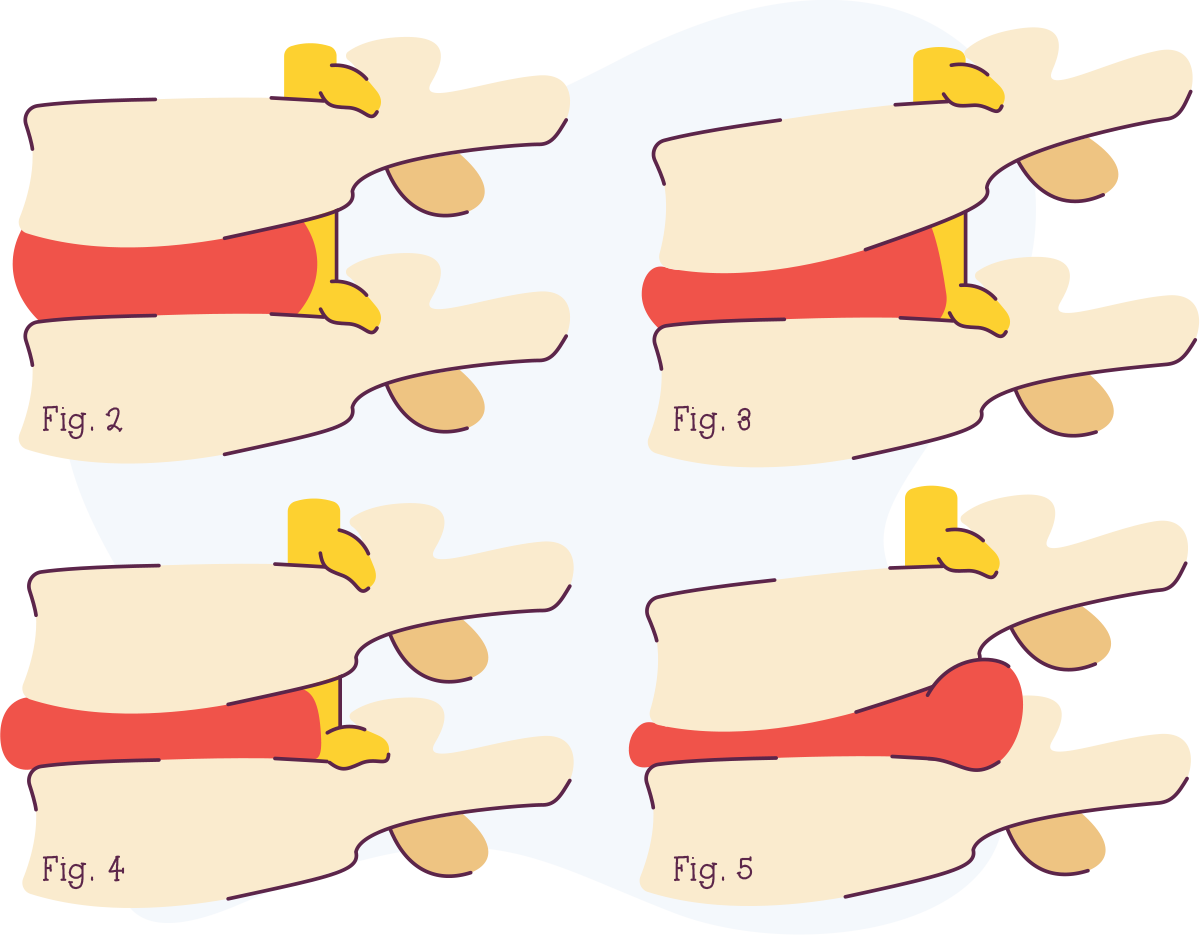
When we discuss ergonomics, any posture or motion that is not neutral is considered awkward. The more awkward moments we experience during the course of our workday, the higher our risk of these Muscular Skeletal Disorders (MSDs).
Our aching backs are a perfect example. There’s plenty of cushioning in a normal spine (Fig. 2), but with repeated awkward movements (Fig. 3), paired with heavy lifting and time, the cushion can compress (Fig. 4) and eventually cause a herniated disk (Fig. 5).
Coming back from this type of injury, like other MSDs, can range from pain management and physical therapy to surgery. Much like preventative maintenance on our tools and equipment is often cheaper than replacing them, using ergonomics to prevent MSDs is a far better alternative to surgery.
Fortunately, our bodies can repair themselves much better than that slicker brush; however, our goal should always be to prevent damage to both our tools and our bodies through proper maintenance and care. Understanding and using proper ergonomics, which includes stretching exercises, is crucial. After all, you are much harder to replace than a brush!
References:
- Cooke RA, Lawson IJ. (January 2021) Differentiating HAVS and CTS, Occupational Medicine, Volume 71, Issue 1, Pages 4–5, https://doi.org/10.1093/occmed/kqaa174
Chris Anthony brings over 20 years of experience in the pet industry, fueled by her passion for grooming and caring for animals while taking care of her own well-being. Her collaboration with Evolution Shears highlighted the critical importance of ergonomics in grooming. Founded by Abbe Hann, a groomer who left her career due to hand pain, and Moe Hann, a skilled sharpener, Evolution Shears aims to help groomers continue their work pain-free. Chris embodies this mission through her articles and teachings, currently offering a four-hour certificate course on grooming ergonomics available on PawsitiveEd.com. For more information, visit Evolutionshears.com

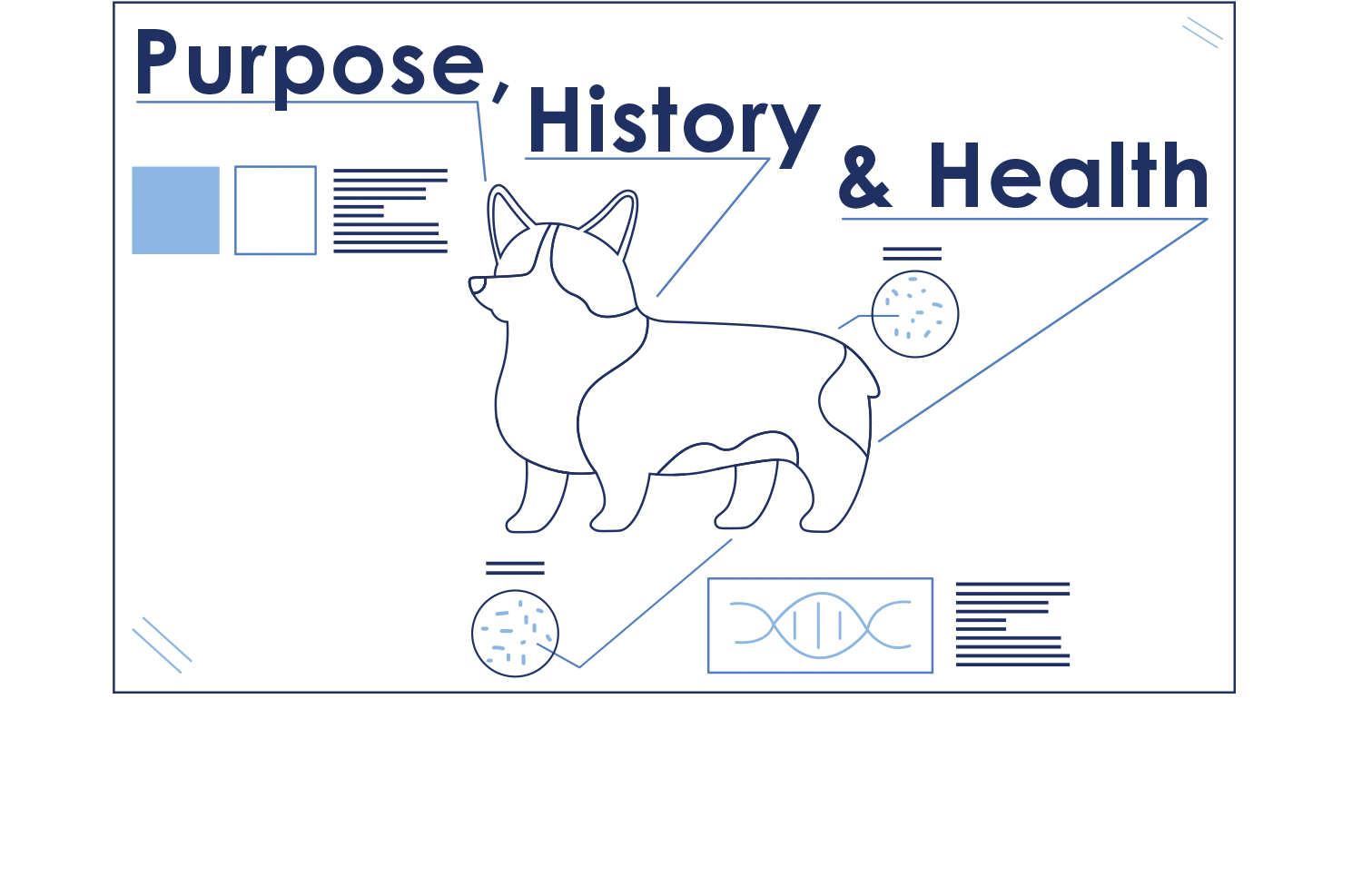

 et’s be real—groomers have enough to think about. Between packed schedules, tangled coats and trying not to throw your back out while lifting a slippery doodle, it’s easy to go on autopilot. But here’s the thing: If we want to do more than just “get through the day,” we have to start paying closer attention to the dogs in front of us—not just their coat type, but their breeding history, genetic structure and, yes, the health quirks that come with it.
et’s be real—groomers have enough to think about. Between packed schedules, tangled coats and trying not to throw your back out while lifting a slippery doodle, it’s easy to go on autopilot. But here’s the thing: If we want to do more than just “get through the day,” we have to start paying closer attention to the dogs in front of us—not just their coat type, but their breeding history, genetic structure and, yes, the health quirks that come with it.
I’m not saying we all need to become geneticists overnight, but if we understand why a breed was developed in the first place, we can start to make more thoughtful grooming decisions. That goes for purebreds, mixes, designer breeds and those adorable mystery mutts. Their history is in their body—even if their paperwork is a lie. Let’s break it down…

When we groom these dogs, we have to think about spinal support. That means avoiding any handling that twists or stresses the spine unnecessarily, like letting them dangle from under the chest or stretching them across the table like a yoga mat. Even how we lift and support them matters. If we’re asking them to hop from tub to table without support, we’re potentially contributing to long-term damage.
This is also where communication with pet parents matters. If you’re seeing signs of discomfort—reluctance to be lifted, flinching during drying, etc.—it’s worth asking how they’re handling their dog at home. We can’t fix genetics, but we can adapt our handling to protect the structure we’re working with.

These dogs already struggle to breathe under normal conditions, so it’s critical we avoid adding extra pressure with high heat, high velocity or water in their nose. Think gentler tools, cooler temps and cloths instead of face nozzles. Even in drying, be cautious with positioning. Overheating and airway collapse are very real risks, and no haircut is worth that.
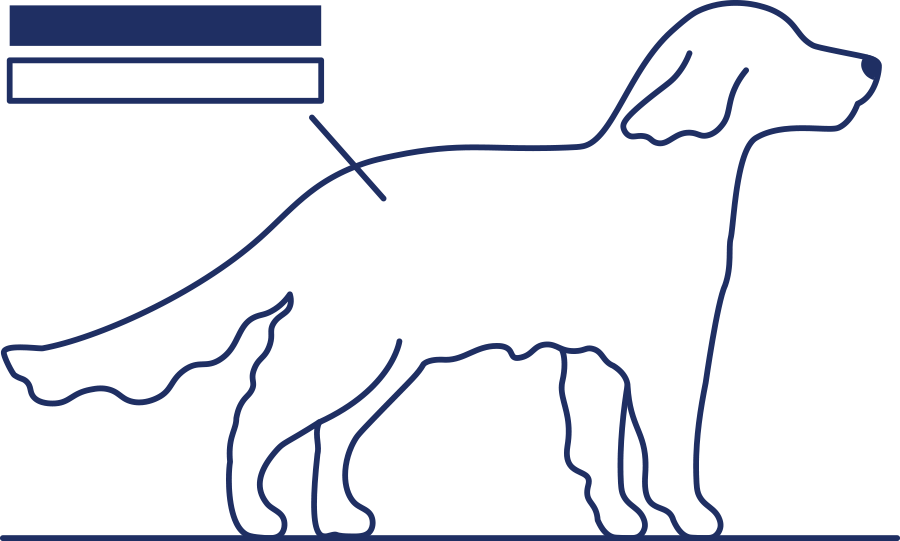
Shaving that off without reason? You’re removing a built-in climate control system.
But sometimes the coat is so matted, impacted or neglected that shaving may be the most humane option. Or maybe the dog is elderly, has mobility issues or lives in a situation where coat maintenance is just not realistic.
The key is to weigh the risks, educate the owner and work collaboratively toward the best choice for that dog in that moment. A good groomer knows the “rule;” a great groomer knows when it’s okay to bend it.
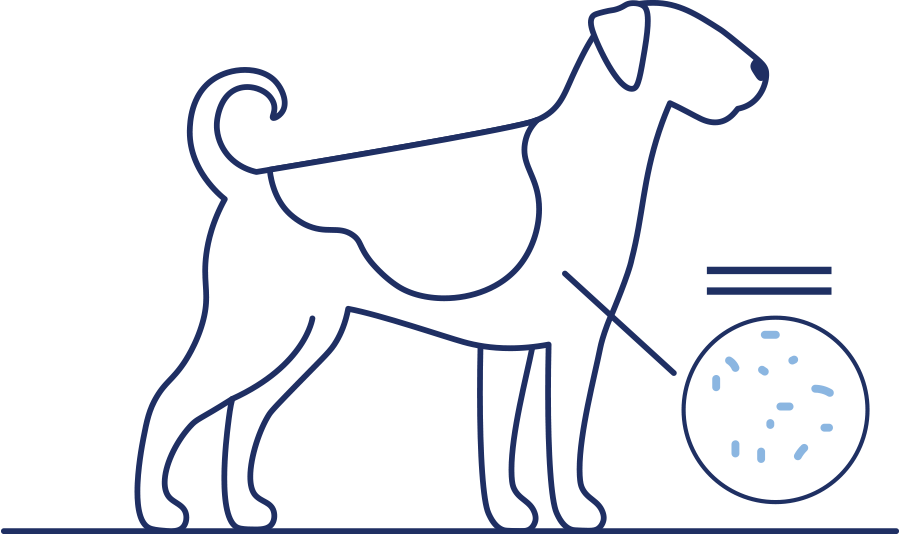
Now, let’s be real…most pet owners aren’t signing up for a hand-stripping schedule, and that’s okay. But that doesn’t mean we give up. There are middle-ground options, like carding out dead coat or blending techniques that help maintain texture and skin health without the full commitment of a show-stripping routine.
It’s about doing the best we can with what the owner can maintain—and knowing enough about coat function to explain why it matters. Even if we’re modifying things, we can still respect the original design.

As groomers, we can’t rely on labels alone. We need to get in the habit of looking at structure, coat type, behavior and physical comfort to help guide our grooming approach. You don’t need a DNA test to figure out that a dog is struggling on the table. You just need curiosity, observation and a little critical thinking.

Understanding breed purpose isn’t about gatekeeping or being a purist. It’s about giving us context. It helps us see why the coat does what it does, why the body moves a certain way and what we need to protect while the dog is on our table.
So next time a client says, “He’s just a mix,” don’t shrug it off. Take a moment to really look at what’s in front of you. Because every dog carries a story in their bones and coat—and it’s our job to read it, respect it and groom accordingly.


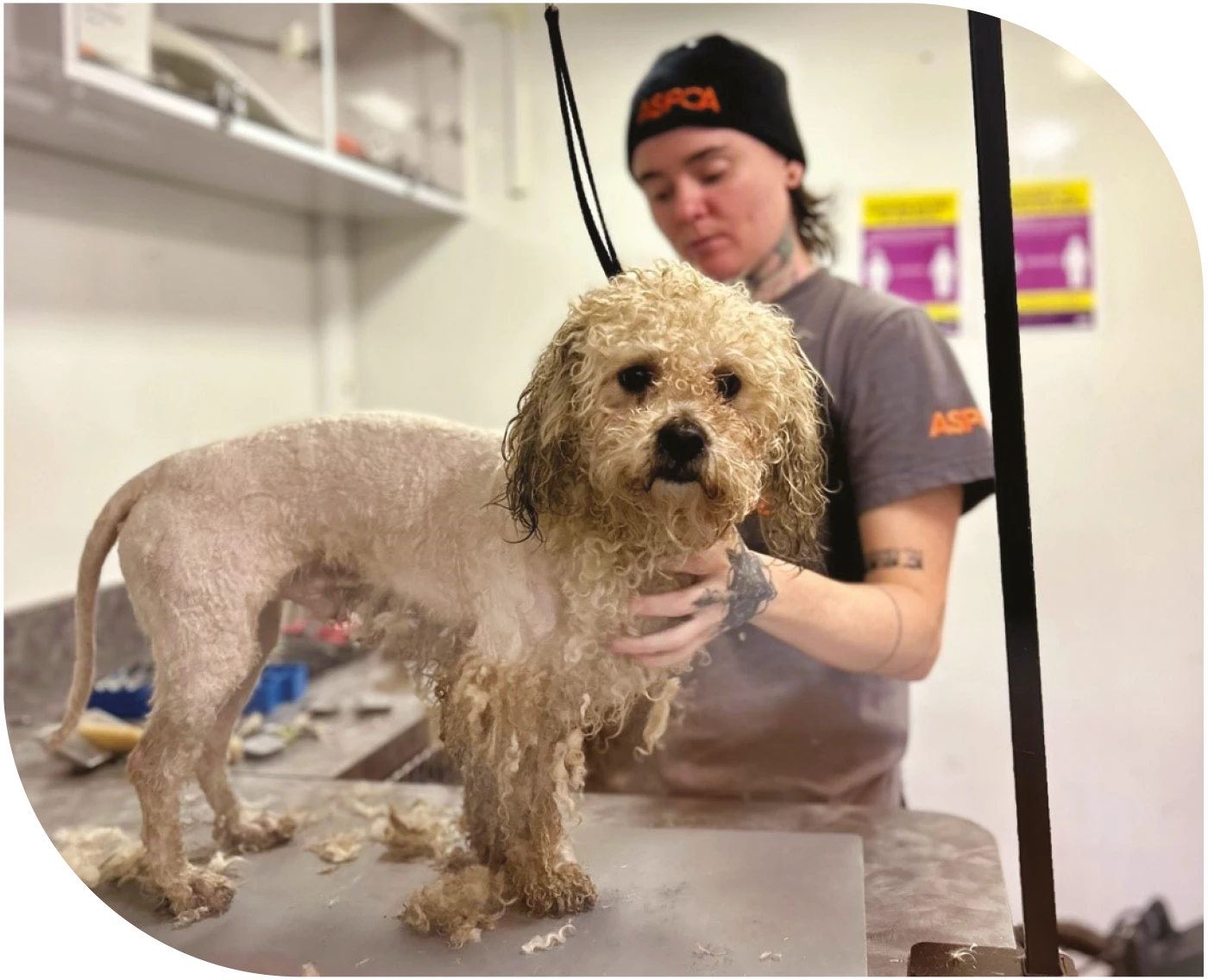

Photos provided by ASPCA
 roomers are invaluable to animal advocacy, care and education, as grooming neglect can have serious consequences, such as strangulating mats that can lead to amputation or even death. Prevention, at the earliest stage possible, greatly helps animals and people alike.
roomers are invaluable to animal advocacy, care and education, as grooming neglect can have serious consequences, such as strangulating mats that can lead to amputation or even death. Prevention, at the earliest stage possible, greatly helps animals and people alike.
Each of us is familiar with seeing a dog come into our care who is experiencing discomfort, or even pain, from the condition of their coat. We may be tempted to suggest that the owner shouldn’t have a dog, or judge them for letting their doodle get so matted or for complaining about how much their double-coated dog sheds. However, it’s not that simple, as there are barriers in place preventing many people from providing their pets with proper care. Whether it’s lack of education, resources or finances, these barriers do not negate the love they have for their companion.
But what happens when an owner is not able to meet the needs of their animal and must surrender them? The pet ends up at an animal shelter, where they are still faced with the issue of access to grooming. In a 2022 ASPCA survey, 92% of animal shelter professionals reported a need for low-cost grooming in their community, and 62% of shelters reported this is not available.
As groomers, we recognize we do not have the bandwidth to help every animal, though we may want to. Accessible grooming practices help prevent animal neglect but must match community needs and groomer availability to avoid contributing to stress or burnout that comes with working beyond capacity. This means recognizing that community needs often greatly exceed the availability of grooming resources.
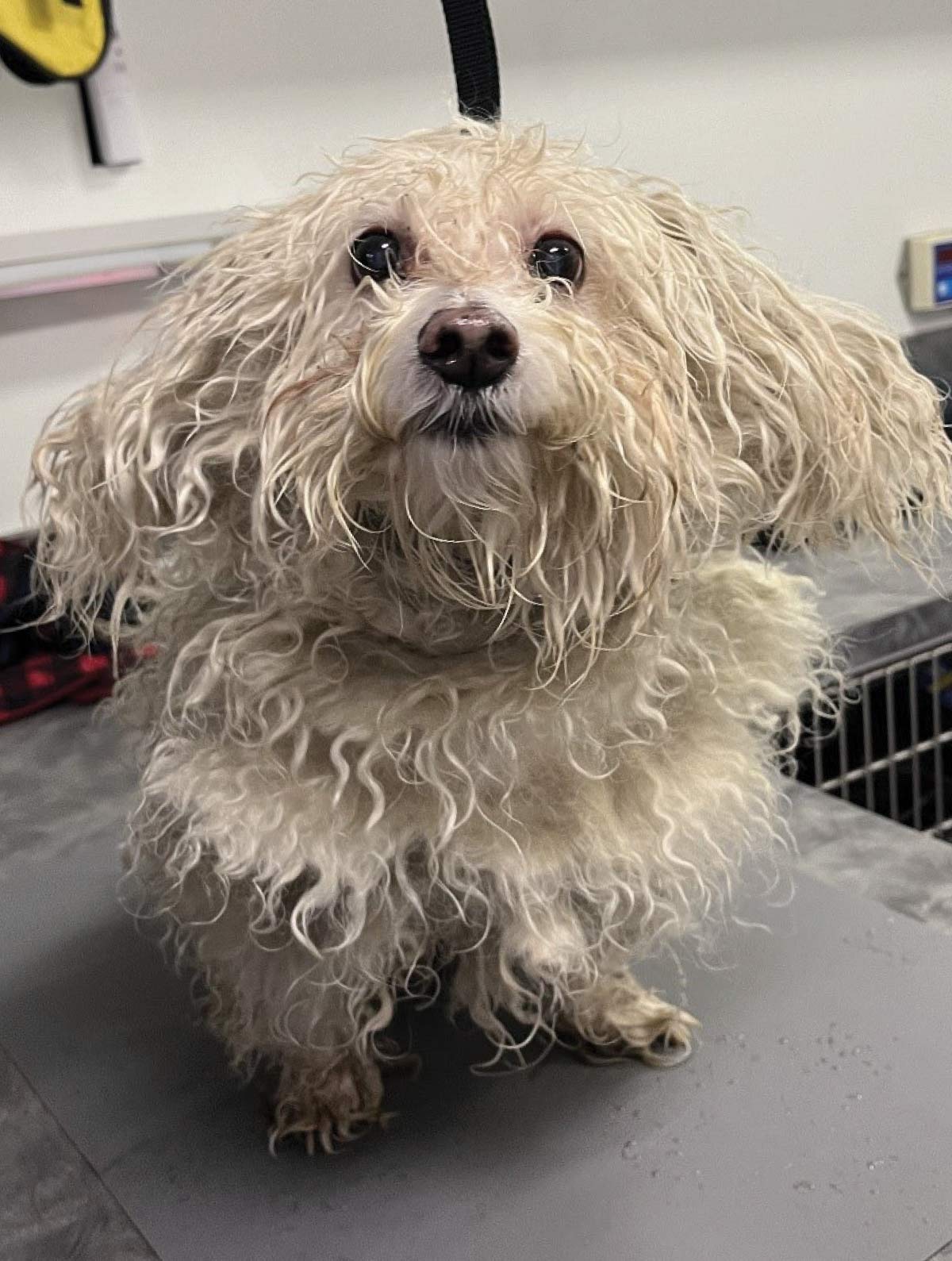
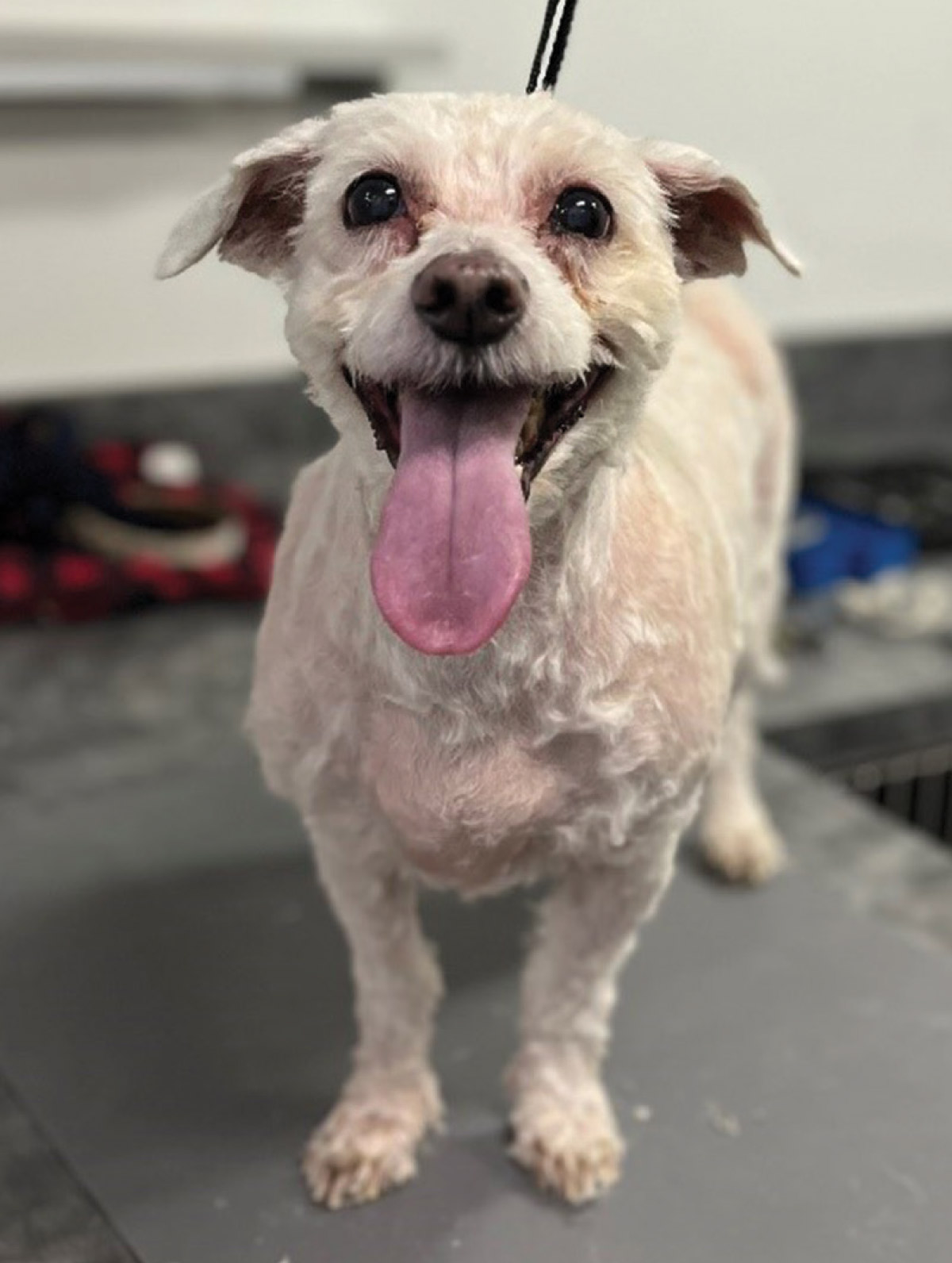


As hard as it is sometimes, we must strive to believe people are trying their best—and we must try our best in return.
- McDonald SE, Sweeney J, Niestat L and Doherty C (2022) Grooming-Related Concerns Among Companion Animals: Preliminary Data on an Overlooked Topic and Considerations for Animals’ Access to Health-Related Services. Front. Vet. Sci. 9:827348. Doi: 10.3389/fvets.2022.827348
- McDonald SE, Doherty C, Sweeney J, et al. (2022) Barriers to and facilitators of pet grooming among clients served by a subsidized grooming service program. Front. Vet. Sci. 9:1021707. Doi: 10.3389/fvets.2022.1021707
- Watson E, Niestat L. (2020) Osseous lesions in the distal extremities of dogs with strangulating hair mats. Vet Radiol Ultrasound. 2021; 62: 37–43. https://doi.org/10.1111/vru.12924
Riley Riley is a graduate from Stephen F. Austin State University and a current MFA candidate at The New School. Their best friend is their rescue bully named Chef Good Boyardee. Riley has been grooming for over a decade. They are the Grooming Specialist for the American Society for Prevention of Cruelty to Animals as a member of the Community Engagement team. This team focuses on community outreach, animal welfare, and cruelty prevention. Riley grooms animals in the shelter, at ASPCA Community Veterinary Clinics, and in client homes across New York City.


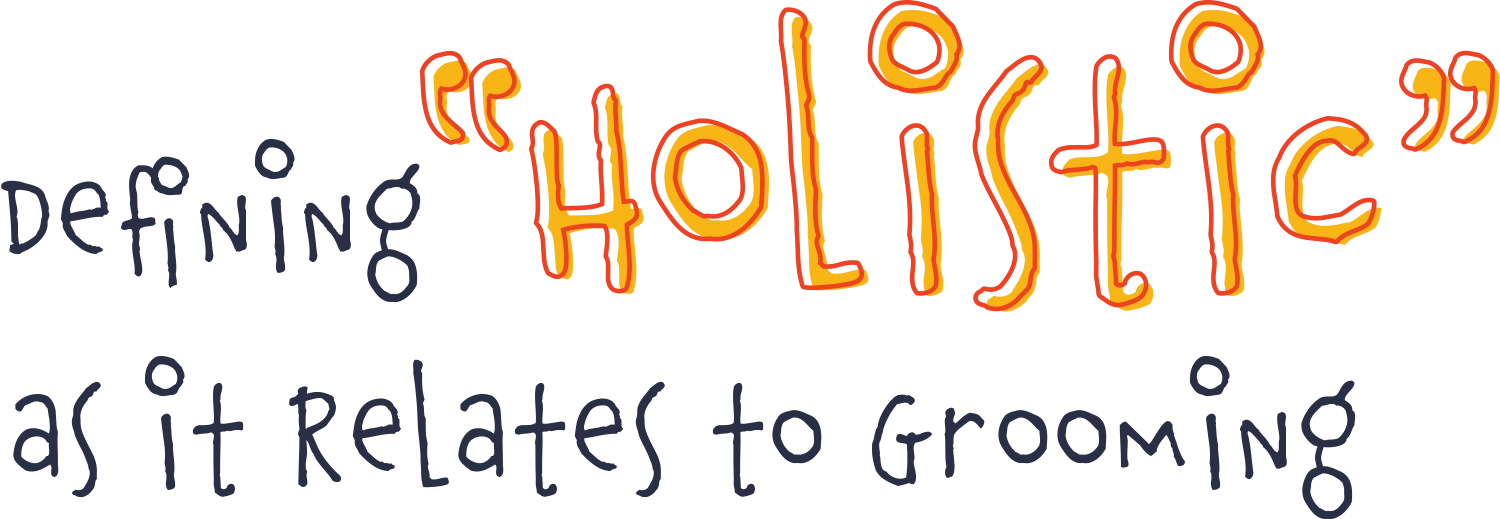
 o matter how clear a word’s meaning may seem, it is always open to interpretation. This is why two groups can argue over a concept; each side convinced that their understanding of a word is correct. Anything that is up for interpretation is subject to misinterpretation.
o matter how clear a word’s meaning may seem, it is always open to interpretation. This is why two groups can argue over a concept; each side convinced that their understanding of a word is correct. Anything that is up for interpretation is subject to misinterpretation.
Back in the day, when grooming forums ruled, the mention of the word “holistic” brought on ridicule and arguments. And while we’ve come a long way in embracing this concept, it is still misunderstood. The heart of the problem lies in how the term holistic grooming is interpreted rather than defined.
Let’s start by defining holistic. According to the Oxford Dictionary, “holistic is characterized by the belief that the parts of something are interconnected and can be explained only by reference to the whole.” The whole is divided into three parts: mind, body and soul. For the reference of holistic as it applies to grooming, I am going to substitute joy for soul.
We can all incorporate holistic elements into our businesses. For example, you might provide a break room for your employees, use energy-efficient lighting and recycle plastic materials. Pieces of the whole are better than doing nothing, but what if you embraced a holistic system; a set of procedures and policies interconnected to all aspects of your business?
Imagine, if you will, a five-layer birthday cake, where each layer represents a crucial aspect of your business: pets, clients, staff (including yourself), the environment and the business itself. To provide structural support to this cake, we add three cake dowels, which symbolize mind, body and joy. If your business is balanced, the cake will remain stable if it’s turned upside-down. If someone takes a bite out of your cake, the remaining layers will stay intact while you address the issue. However, ignoring these challenges could trigger a cascading effect that leads to the entire cake collapsing.

Let’s put it into practice: A mobile grooming van is the business layer. The electrical and fuel systems are the van’s mind, while the work area represents its body. Pricing reflects the joy of the business. Each layer of your cake is interconnected with the van. Pets are groomed inside the van, clients make payments, and you or your staff do the grooming work there. Additionally, sanitation and organization contribute to the overall environment.
If even one aspect of your business is off, it can impact all the other layers. Maybe you postponed some essential maintenance on your van, and now it’s sitting in a repair shop after being towed there. You’re not a priority since you didn’t establish a relationship with this repair shop. This situation forces you to reschedule clients. Some are frustrated and might choose to go elsewhere, while others may stay, but the pets are going much longer between grooming appointments. Not only are you losing money, but van repairs are costly. You can now see how interconnected your entire business is.
If you have made the necessary adjustments to ensure your business operates holistically, you will find it easier to get everything back on track. You have established a good relationship with your repair shop, and they won’t keep your van for too long. You’ve built strong relationships with your clients who are willing to wait until your van is back on the road. Although the pets may have to wait slightly longer, you can rely on other groomers you’ve networked with to assist you if needed. Additionally, you have safeguarded your business by setting aside funds for repairs and covering any downtime.
No matter where you are in your grooming business, integrating a holistic system will yield significant benefits.



Photos provided by Tiffany Tate-Croxford
 always thought I was healthy, so I never got a primary care physician,” shares award-winning Virginia groomer Tiffany Tate-Croxford. “Instead, I had an excuse for every symptom, so I dismissed them. If I only had gotten a PCP and regular checkups, they would have sent me for the colonoscopy that I was supposed to have starting at 45 years old, and I would not be dying today.”
always thought I was healthy, so I never got a primary care physician,” shares award-winning Virginia groomer Tiffany Tate-Croxford. “Instead, I had an excuse for every symptom, so I dismissed them. If I only had gotten a PCP and regular checkups, they would have sent me for the colonoscopy that I was supposed to have starting at 45 years old, and I would not be dying today.”
At 51 years old, Tiffany caught her cancer too late—yet she is not giving up. Every day she is still out there, sharing, leading, engaging, spending time with her three teenage children, her mother, her fiancée, and her beloved horse and dogs, and running one of the best grooming salons in the state of Virginia.
Living with cancer is not easy, and grooming with cancer must be so much harder than most of us can imagine. But there are, sadly, groomers all over the country that do it every day. Tiffany is inspiring some of them with her videos and social media posts about her cancer journey, and has been told by groomers from all over that her heartfelt posts and videos are inspiring to them. She now knows several groomers who work with cancer and who have reached out to her, creating a special kind of community.
“You always hear groomers talking about the importance of self-care, but usually in terms of how they work—taking care of hands and backs, etc.” she explains. “I know that hot dogs and cigarettes, ignoring regular medical checks, and an unhealthy diet were my downfall. But taking care of ourselves is more than getting massages. It means taking breaks, eating right, listening to your doctor or chiropractor. Pay attention to the health of your whole body!”
Ultimately, Tiffany moved with her then-husband to Tennessee, and later came back to her home state of Virginia, where she sold cars and then insurance. But when COVID hit, she reached out to her local corporate pet store and was immediately offered a grooming position. Upon grooming the very first dog, she had a great revelation—that she loved grooming; that she was “home.” She realized she never wanted to do anything else, wondering why she ever stopped.
Tiffany opened the Pink Poodle RVA in 2022, first grooming from home, but already envisioning her dream salon. The excellent online reviews grew her business quickly and soon she began work on her brick-and-mortar salon.
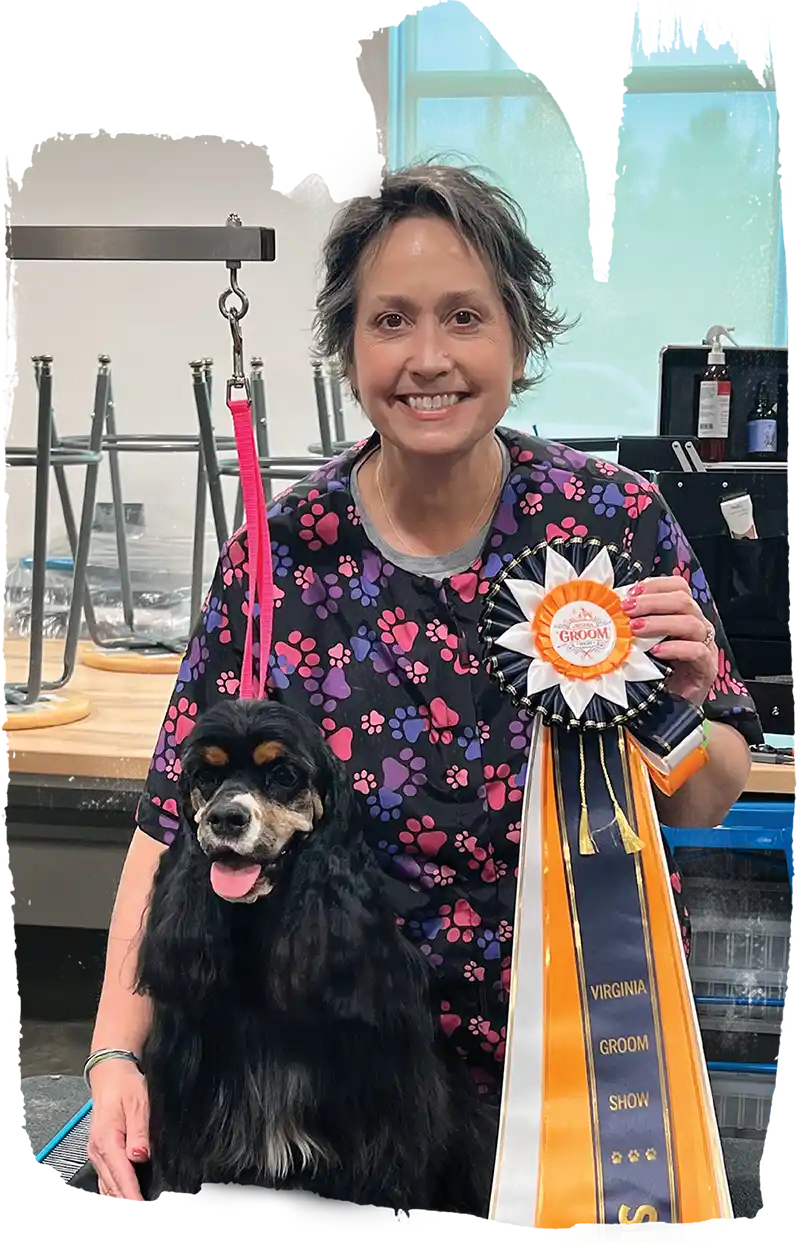
Today Tiffany runs her very successful salon taking quality extremely seriously, even being nominated for the “Best of Richmond 2024” by her first client, a senior dog who had inspired her to open the salon. Her clients with dogs that had been “fired” from other groomers for aggression are often amazed by how well they do with the Pink Poodle’s gentle, caring, full-service experience.
With pet wellbeing being a top priority, Tiffany refuses any client who wants a double-coated shave-down. She even fired a bather who raised her voice in anger to a dog once, saying, “I groom with a do-no-harm attitude.”
Also with a focus on groomer wellbeing, Tiffany did all she could to break unhealthy cycles her groomers were in. Every groomer has a private “suite” but with the walls not going all the way to the ceiling, which still provides a sense of teamwork and community within the salon. She pays for her staff to get groomer education and to go to trade shows, and also to be members of the the Virginia Professional Pet Groomers Association (VPPGA) which includes regular educational member events.
 , everyone, take care of yourself so that you can take care of those
, everyone, take care of yourself so that you can take care of those  and all your beloved clients who
and all your beloved clients who 
In October of 2023, Tiffany was told she was cancer free. But when the cancer later returned, the Pink Poodle was already thriving, so she continued grooming with cancer. Embracing what a cousin always used to say, “I’ll get over it or under it, one way or the other,” Tiffany decided that “as long as I am strong enough, I am grooming.”
Tiffany still has goals. She is working towards her NCMG and still competing, with her Cocker groom taking a second-place rosette at the Virginia Groom Show in late March 2025. She is now much weaker physically and only grooming some small dogs, with her son bathing for her and learning to groom. She manages her shop from home much of the time, as they are booked out months in advance.
Tiffany says she does not know how not to work. She glows when talking about how much she loves her shop, her staff, her clients, her family and her life. She is a true inspiration to many and hopes her story will reach groomers far and wide.
To conclude, Tiffany shares this earnest and emotional message to all of us in the grooming industry she loves so much: “Please, everyone, take care of yourself so that you can take care of those you love and all your beloved clients who need you.”

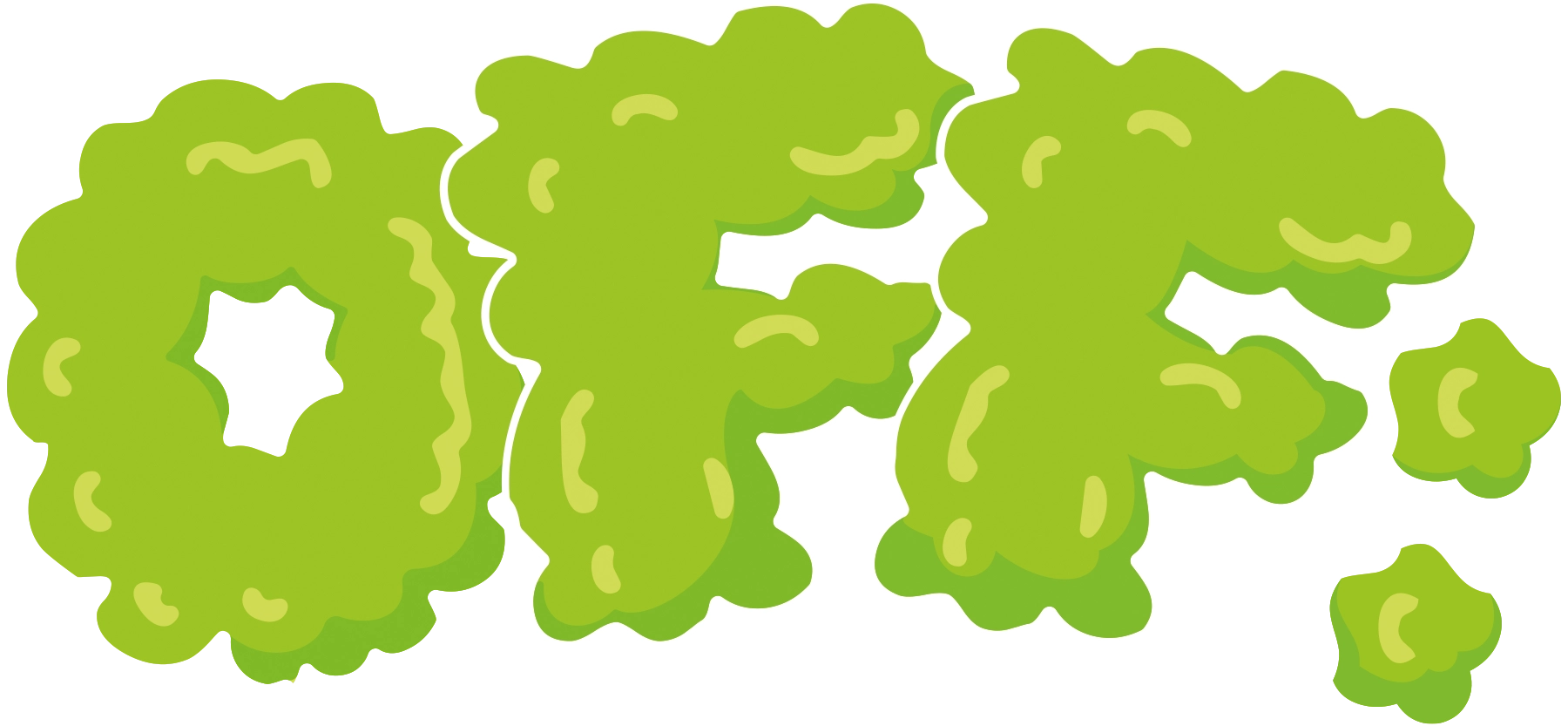

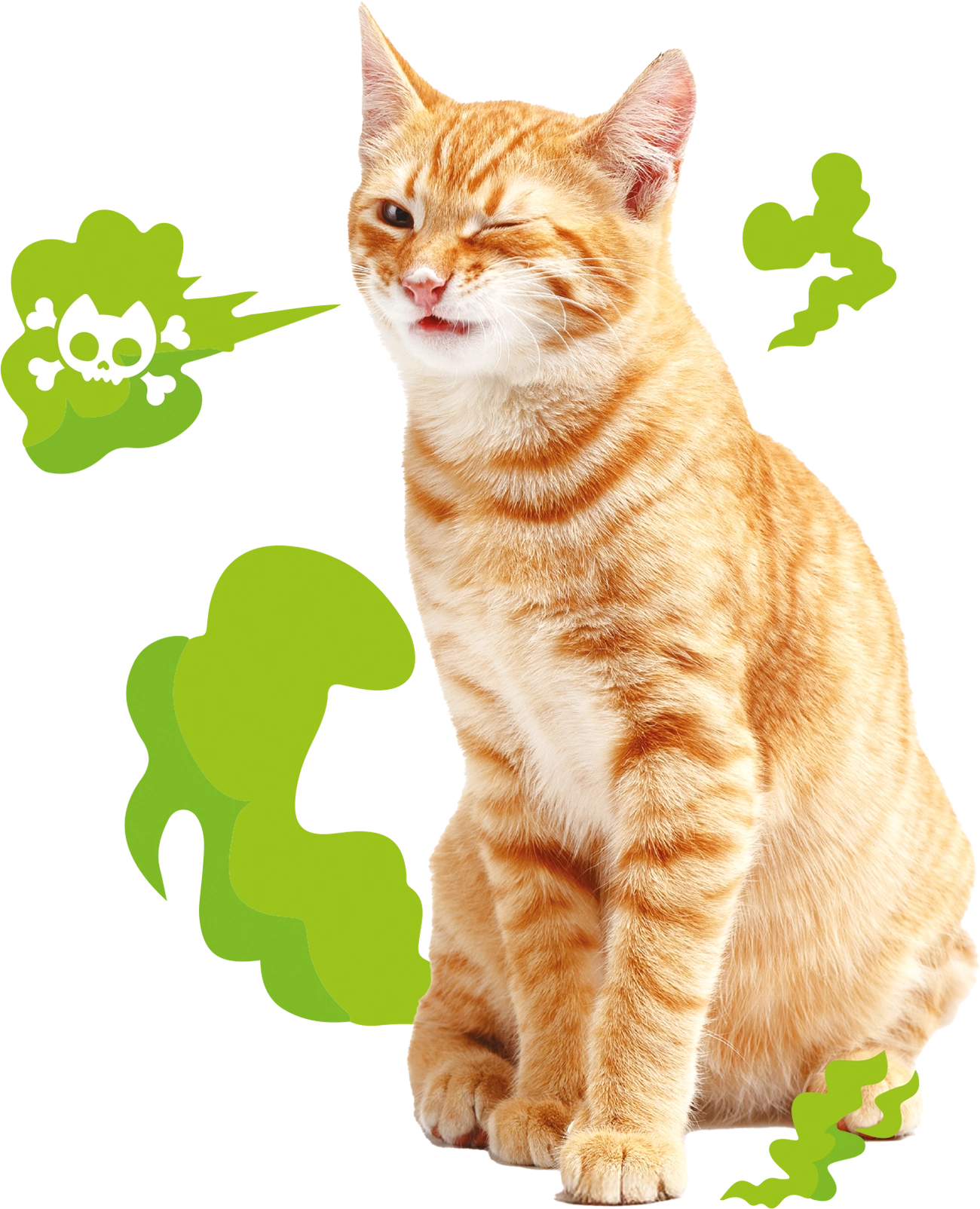

by Lynn Paolillo
 at grooming isn’t exactly a sweet-smelling profession—we regularly get whiffs of cat pee, poop, anal glands, etc. But as professional cat groomers, we learn pretty quickly the difference between “normal cat smell” and “something’s not right.” While we’re not veterinarians and can’t diagnose, our ability to recognize unusual odors can help catch potential issues early and guide cat owners to seek proper care.
at grooming isn’t exactly a sweet-smelling profession—we regularly get whiffs of cat pee, poop, anal glands, etc. But as professional cat groomers, we learn pretty quickly the difference between “normal cat smell” and “something’s not right.” While we’re not veterinarians and can’t diagnose, our ability to recognize unusual odors can help catch potential issues early and guide cat owners to seek proper care.
A little stinky cat breath is normal, especially if they’ve been snacking on fishy treats or food. But persistent foul odor from the mouth is often a sign of dental disease. While we’re not doing dental cleanings as groomers, we may be brushing out mats on the chin or noticing drool or discoloration in the mouth area.
- Watch for drool mats under the chin or sticky saliva around the muzzle.
- Use caution when handling the face—painful dental issues can make cats more reactive.
- Suggest a dental check-up if the breath is strong enough to make your eyes water.
A sweet, sour or musty smell from the coat or ears may indicate a yeast or bacterial overgrowth. In cats, this often accompanies greasy coats, dandruff, redness or discharge in the ears. Smelly ears without visible dirt may still have an underlying infection. You might also notice sticky residue on your combs or fingers during the bath.
- Avoid using ear powders or perfumes to mask odor—recommend a vet visit instead.
- Consider using a degreasing (if especially oily) or hypoallergenic (if skin is red or irritated) shampoo for the bath and note the condition in your files to monitor at future visits.
- Be on the lookout for staining, residue or irritation around the anus or genital area.
- Gently clean the area with a warm, damp cloth or hypoallergenic shampoo.
- If the odor persists, advise the owner to check with their vet.
- Proceed cautiously if you smell infection and try to locate a hot spot or scabbed-over area.
- Don’t attempt to trim around or clean open wounds—document the location and recommend a vet visit.
As professional groomers, it’s not our role to diagnose, but we do play an important role in early detection.
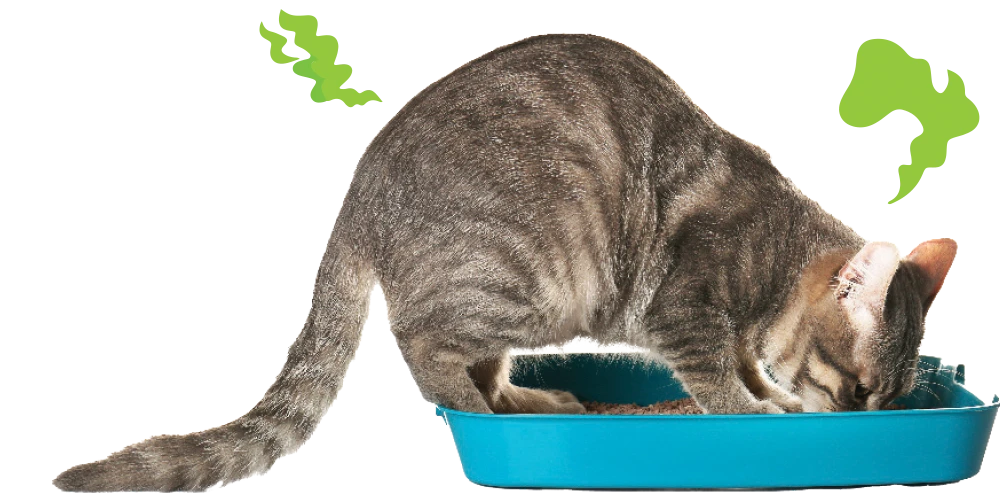
Conversely, sweet, perfumed cats may be exposed to diffusers, fragrance sprays, etc. around the home that can cause issues for the cat if exposed constantly over time.
- If a normally neutral-smelling cat starts developing a strong or persistent body odor, note the change.
- Monitor for other signs like weight changes, excessive thirst or oily fur.
- Recommend a vet visit if the odor is consistent across multiple grooms.
- Double check for matted fur around the tail and hind legs, and check under the belly.
- Cats with kidney or bladder issues may urinate more frequently or leak, leading to lingering odor.
- Even after a thorough clean-up, the smell may persist—let the owner know what you observed.
- Cats with incontinence issues may need the owners to do more touch-up grooming between visits, so include recommendations for home use, like unscented cat-safe wipes, warm water on a washcloth, hypoallergenic shampoos, etc.
- Always document unusual smells or coat conditions in your grooming notes.
- Use fragrance-free or lightly scented products so odors aren’t masked.
- Be tactful when discussing smells with owners—focus on concern and care, not blame or embarrassment.



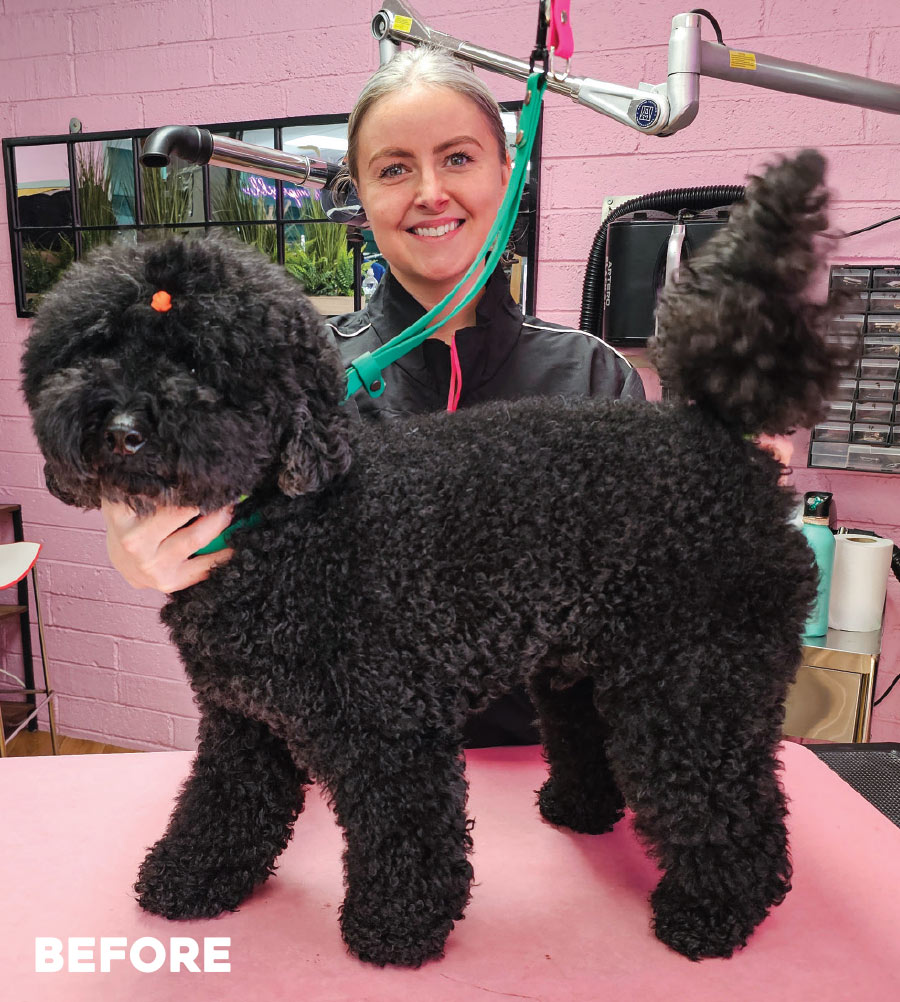



 any groomers will say they don’t get enough purebred dogs in the salon, and Bichons may very well be at the top of their list when making this comment. However, I tell people constantly that I groomed tons of dogs to look like Bichons before I even started working on the purebred ones.
any groomers will say they don’t get enough purebred dogs in the salon, and Bichons may very well be at the top of their list when making this comment. However, I tell people constantly that I groomed tons of dogs to look like Bichons before I even started working on the purebred ones.
While the dog being used here is a poodle, there are plenty of curly-coated mixes that look cute dressed as a Bichon.
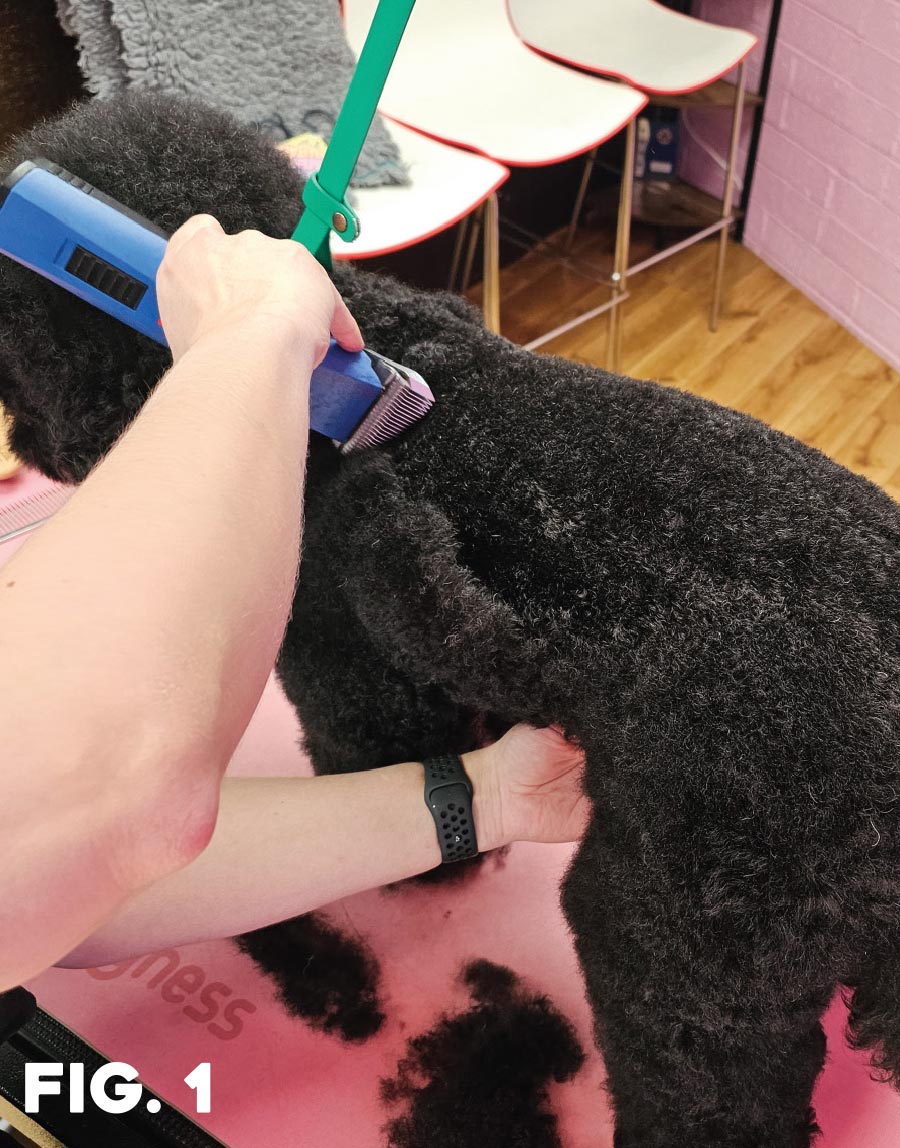


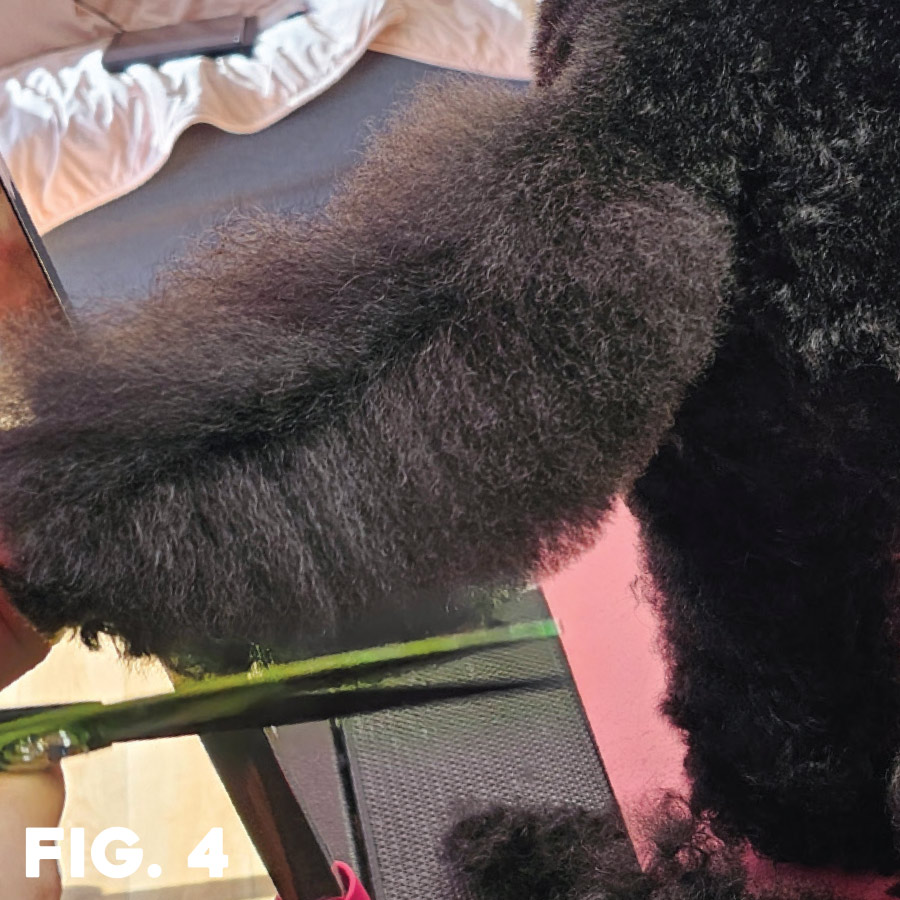
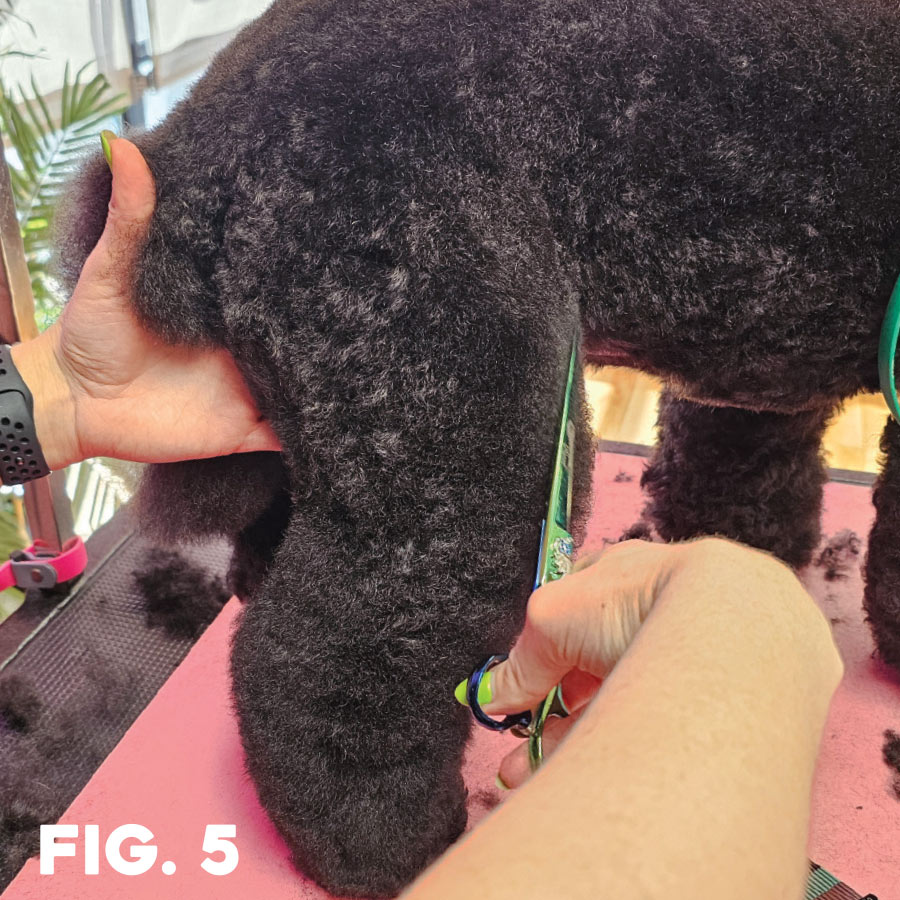

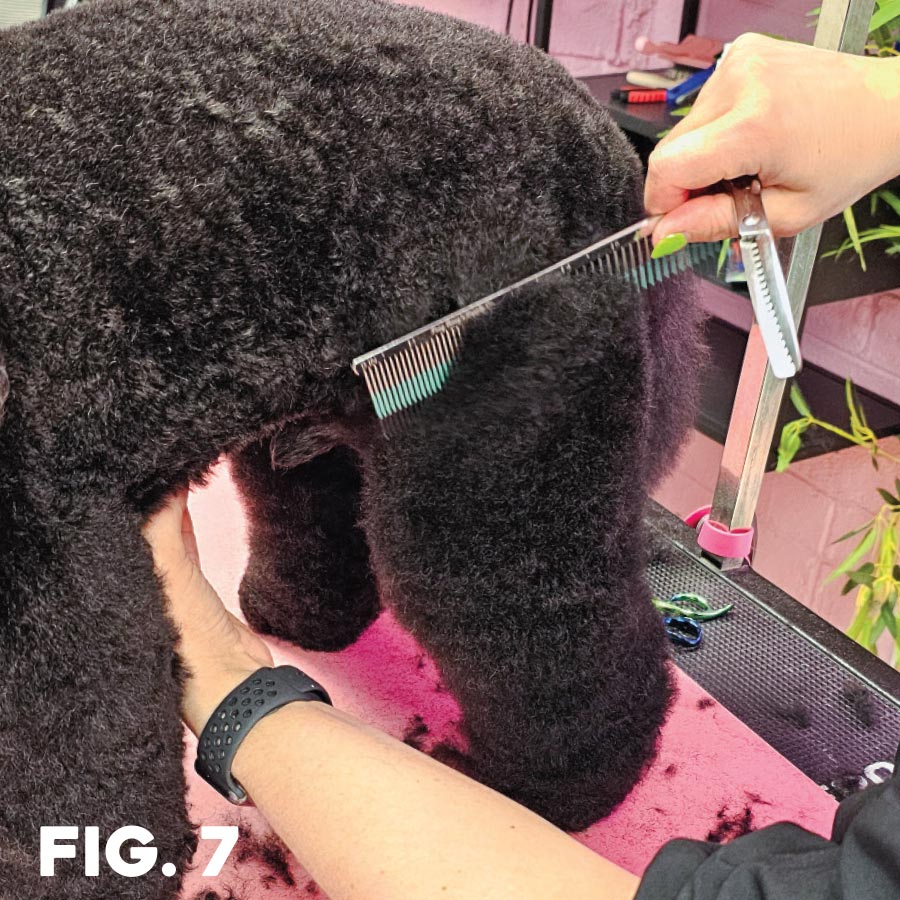
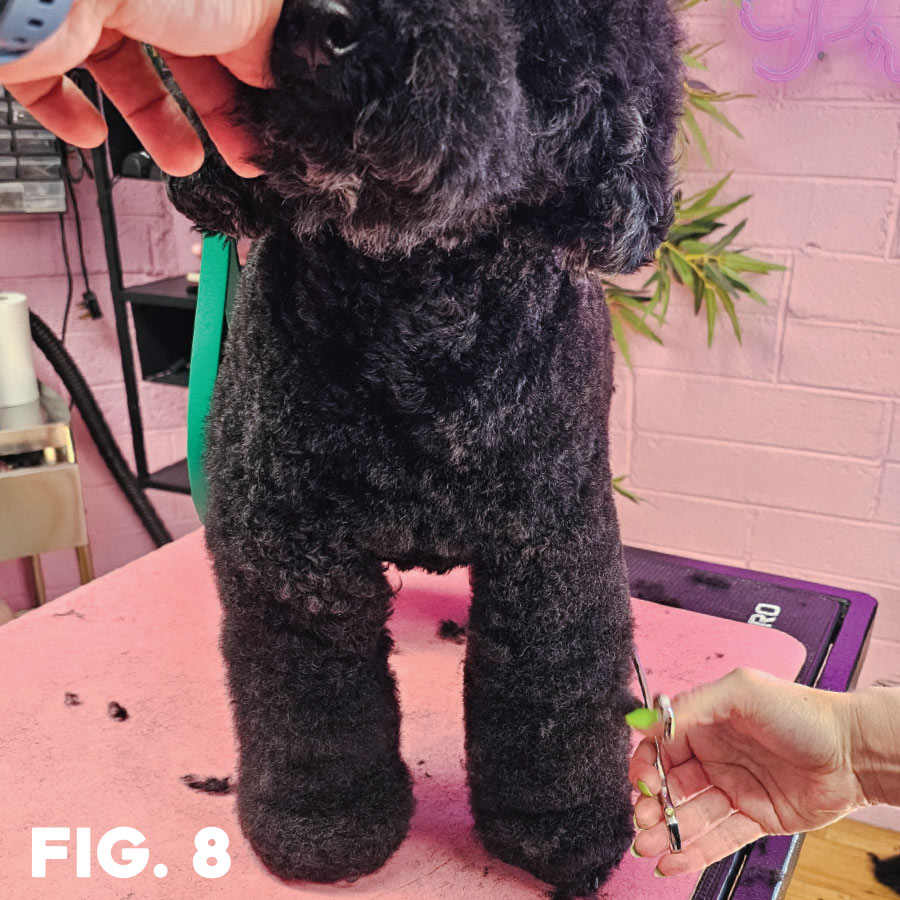


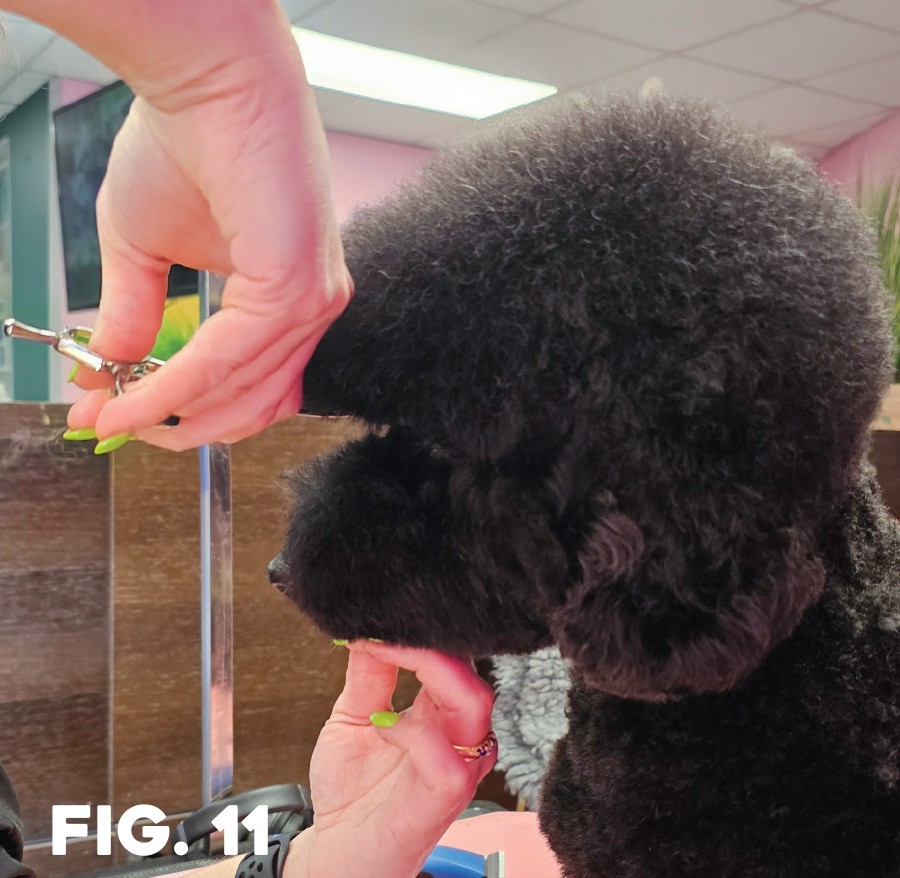
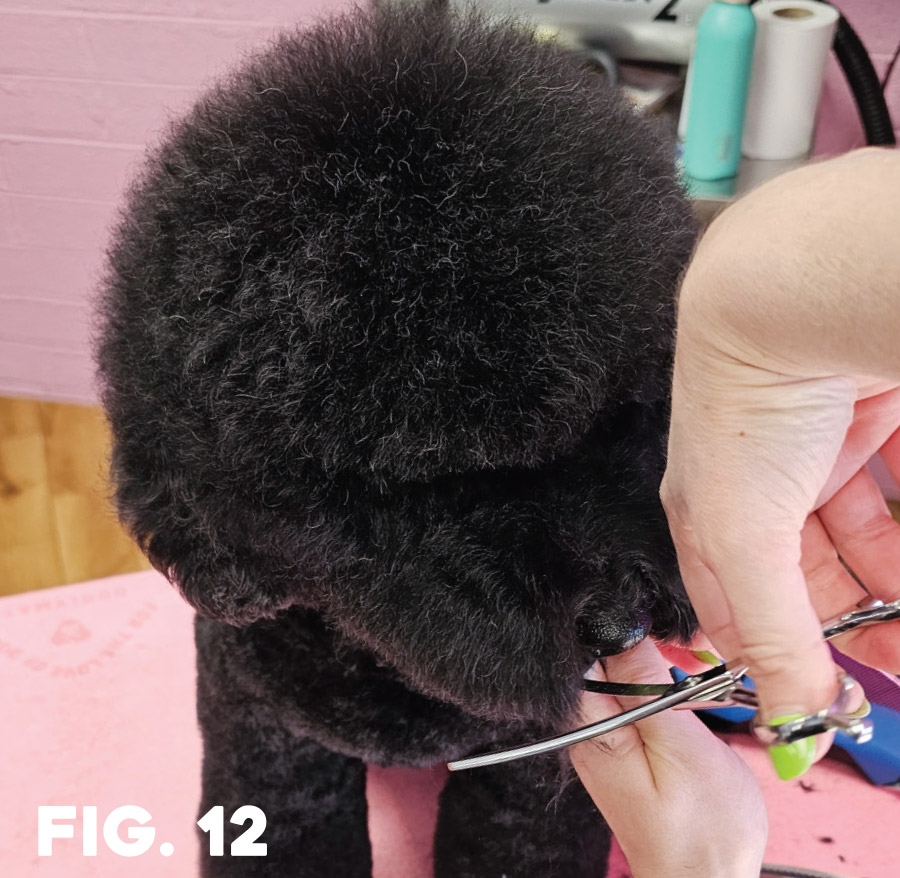
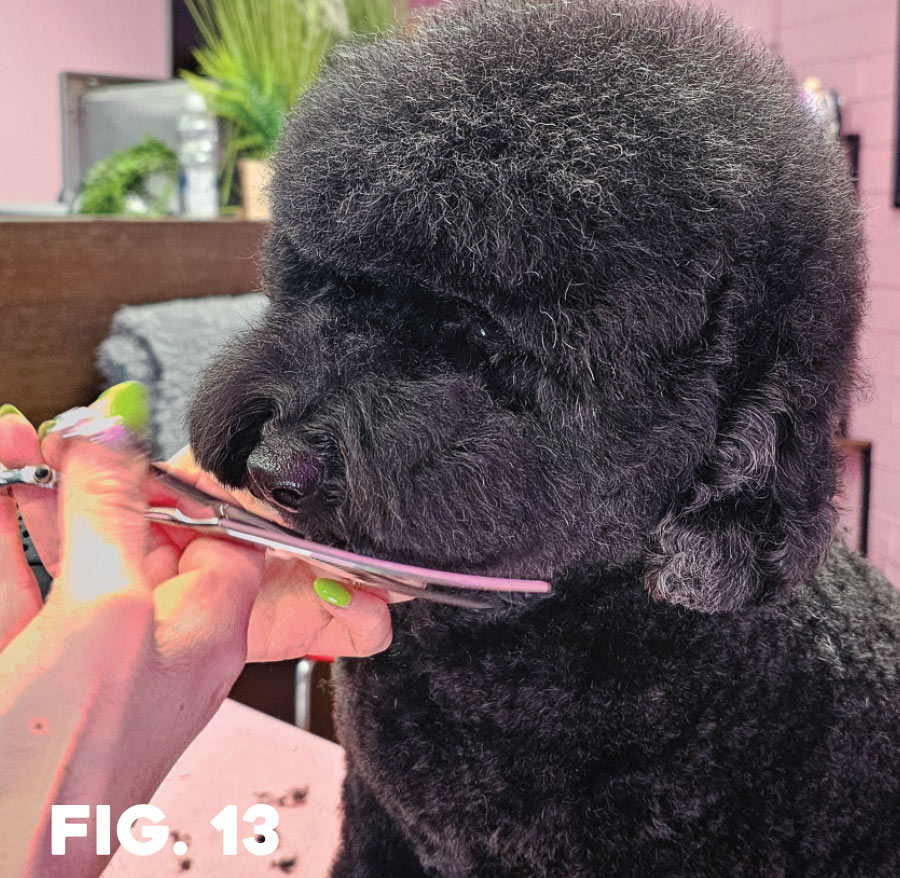
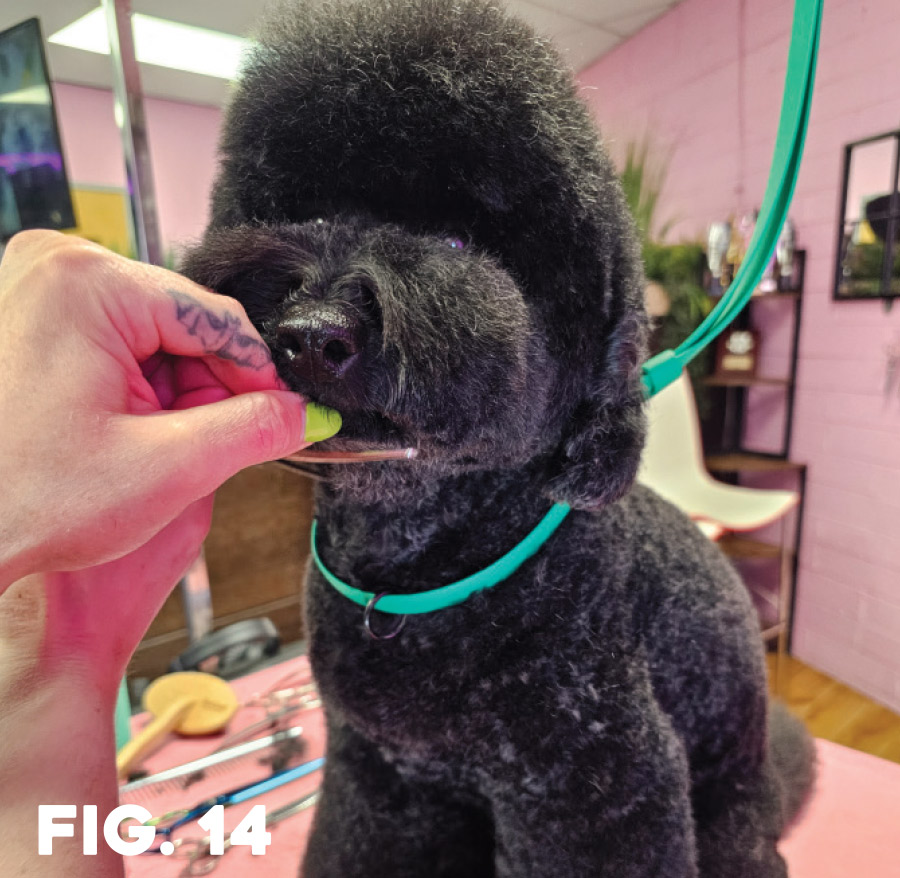

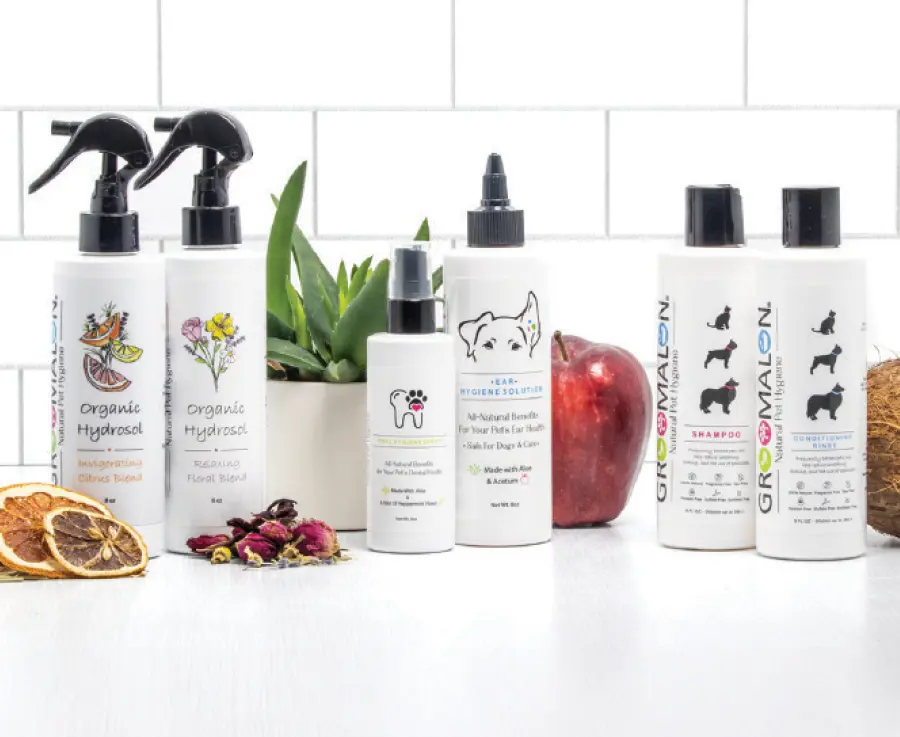
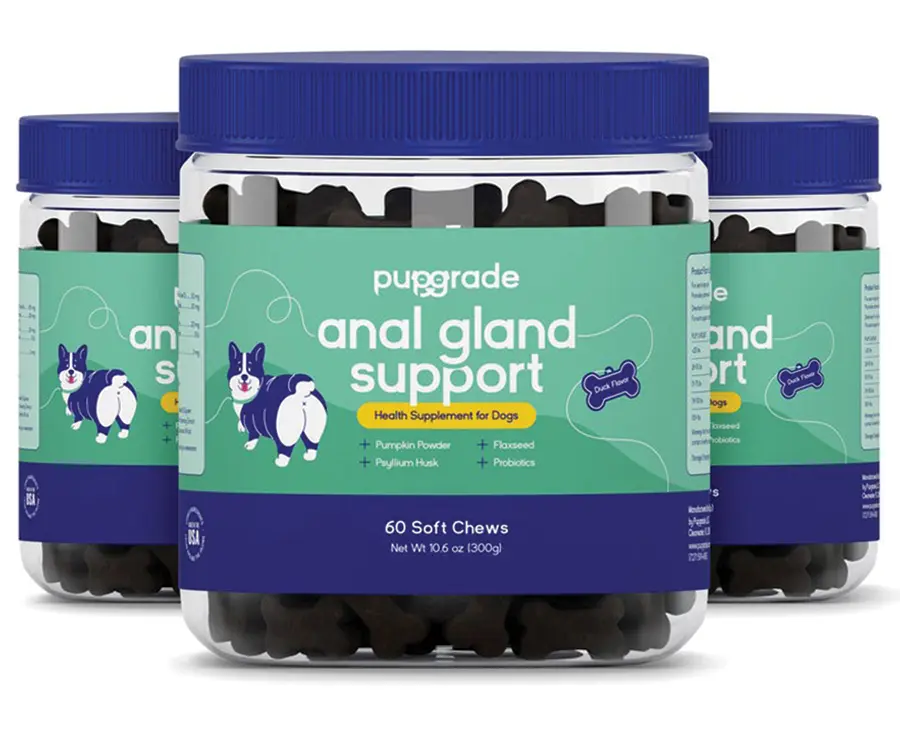

Thanks for reading our June 2025 issue!



